Hope Hope

Issue 33





The political system that the majority of countries choose to follow is directed by the ideologies of capitalism and democracy. Although ‘hope’ seems like a theoretical and idealistic value to pursue in society - a value that could not relate less to democracy - I strongly believe that they mutually rely upon each other. Though they may interact in a subtle way that is hardly noticeable, they cannot survive as prominent values without each other. My thoughts mainly revolve around the question of what exactly citizens hope for from Congress and how citizens pursue their hope. The answer for the latter generally falls into two distinct categories: voting or protesting. Protests have become quite common in the status quo, such as the Iranian Hijab protest of 2022, Brazil’s election protests of 2022, Anti-Taliban protests in Afghanistan, or Roe v. Wade Abortion (an issue that has been going on for decades). Especially for the Roe v. Wade debate upon the sensitive topic of abortion, the US is ramified into different opinions. The repealing of this policy in some states brought absolute chaos and media attention as the hope of the citizens has been denied by the government.
Hope can shape-shift into both a verb form and a noun form which can exude markedly different connotations. ‘Hoping’ renounces the action of wanting something; ‘Hope’ as a noun could illuminate the intangible value of having a positive feeling of need, or the status of wanting something. Both meanings and forms could be substituted into the sentence to make it complete. Whilst consumers and citizens are the ones hoping for an improved society with an abundant source of resources, the government creates this sense of hope. Whether this hope is true or false doesn’t seem to matter. Democracy drives both hope and the act of hoping from the citizens for an affluent life – but is democracy the most ideal value to pursue in society?
Democracy entirely relies on the people and the decisions made by each individual and represented by Congress. As the pandemic broke out, the abundant number of citizens basically reflected more than abundant needs. If the government cannot provide enough resources for the state to meet these specific needs and these needs grow incrementally in number, social movements eventually break out. Officially, social movements are defined as a “sustained campaign in support of a social goal, typically either the implementation or the prevention of a change in society’s structure or values”. These movements are started by an individual or group with the hope that the government will be able to listen to their voices and take action eventually. It is now proven that society is not at all perfect but rather closer to deficient. If we were inhabiting a perfect and utopian society where every aspect was flawless, there wouldn’t be any initial violence nor would there be the prevailing existence of social movements.
Debate exists following the lines of how democracy is the most ideal governmental structure to follow. To firstly state my stance on a basic level: no. Democracy is indeed the most preeminent governmental structure, yet it isn’t the most ideal one. This is true both in terms of an individual and a governmental scale. The reason why democracy is such a respected belief in society is because it achieves the natural blend of all components of society. It mostly puts in mind the moral and ethical values as well as the market (i.e. industries, individual companies, institutions, decentralised programmes).to possibly categorise society in a more rational way, a totalitarian society would be the most ideal. Using our common and moral sense, though, it would not make all the people “happy”; this , apparently, is essential. Therefore, even though the direct shift from a different political system to democracy is defined by ‘instability’ and ‘chaos’ , society has constructed a narrative that states this process as being “worth it”. As a result, society is remade at a high cost to human life. So – for what?
The narrative that I want to point out here is that, under the assumption that society is impeccable, the overall ideology of ‘democracy’ is built on hope of the citizens. Essentially, democracy aims to promote legal equality and the welfare of the citizens. However, there are two counter arguments and dissatisfaction regarding ‘democracy’. Firstly, it will most likely lead to the increased economical imbalance but secondly, it will inevitably ignore the minorities in society. Upon the point of economical imbalance, there are many debates going on regarding this problem such as altering the law so that people in a higher class will be expected to pay more taxes. Not only is it about the problem of income equality, but it is also about the disappearance of the middle class citizens. This is a problem on two layers. One, there is already a widening gap between countries based upon their developmental status. Two, if this gap increases both inside and outside the country, it will most likely cause more conflict and tension. The rich will continue to become richer and the poor, poorer. The second on how it’s going to ignore the minorities (e.g. gender, religions, age, sexuality, occupations). According to Pew Research Center, “the share of representatives and senators with a college degree has steadily increased over time. In the 117th Congress, 94% of House members and all senators have a bachelor’s degree or more education.” The majority of the members are fully educated, and with the yearly wage of approximately $174,000, they are considered to be at least in the upper-middle class. So when considering whether to pass a certain regulation or not, they would consider some factors. Most likely it would be: a. What benefits would that give them, and b. What would give the most media coverage that could shine me/ my party in a positive light?

In our imperfect society, this purpose is not being fulfilled. Politics: the activities associated with the governance of a country or other area, especially the debate or conflict among individuals or parties having or hoping to achieve power. Hoping to achieve power. As we can see, it is some variant of human nature instilled into us where we tend to prioritise ourselves over other people. Two different ways to word this phenomenon are either ‘selfishness’ or ‘self-interested’ yet, it is the bare and naked truth. To make it more clear, the primitive instinct to simply pursue personal/familial survival rather than the ability to cooperate and commit an action that would benefit the majority. The human nature of being egocentric is proven by countless examples in historical events. In particular, during the colonisation of South Korea by Japan during 1910 to 1945, there were groups of people at the top of the social hierarchy who collaborated with Imperial Japan to progress in their own lives. Even though it changed the course of history of our country, they abandoned their instinctive sense of patriotism, and just for the safety of themselves held hands with the opposition. After the Hiroshima and Nagasaki Atomic Bomb incident, Japan surrendered. That’s how their puppet show met their end. So overall, even regarding our egocentrism, why is democracy in place?
In theory, communism i.e. living under a totalitarian government would be the most ideal form of government. The communist ideology strongly aligns and supports widespread universal social welfare. The communist ideology supports ‘improvements in public health and education, provision of child care, provision of state-directed social services, and provision of social benefits will, theoretically, help to raise labour productivity and advance a society in its development’ [ER Services]. If so, why isn’t this working in society and why is it neglected by the Western media culture?
Historical events in the past
Conflict and tension between countries
The desire to acquire power that outweighs the fundamental formula of ‘communism’
Including these key reasons, there are various reasons why communism isn’t being correctly applied in society.
As a result, democracy has the power to be able to be implemented with minimal conflict. So what does democracy aim to do that accentuates itself from all the other values? Further on, how stable is democracy at the moment, or is it stable at all? Democracy as a value is falling apart rapidly at such a fast pace that it is worrying.
1. What does democracy aim to do that accentuates itself from all the other values?
Values of democracy itself is more ethically acceptable
Democracy strives to achieve freedom and equality for all or at least the majority, firstly differentiating it from a totalitarian/ communist society which strives for efficiency. Furthermore, it is a more accountable governmental system as it guarantees more accuracy and precision in terms of making policies or laws.
Benefits outweigh backlashes

The possible backlashes of a democratic society include: dominance of power by a political party, neglecting the minority, and media control. Yet, some of the benefits are: that it strives for an equal society, healthy goals, more oriented perspective towards social issues, and the list goes on. Conversely, a totalitarian society has backlashes; such as possibility of coups, immorality, not fulfilling requirements, selfish decisions, and the violation of human rights.
Division of power
Democracy cannot instantly lead to a dictatorship or produce an individual or institution that will possess the central power. Even though the country stands under the name of the government, the power is decentralised. Meaning that there is some sort of distribution of power, it shows off that it will be more logically and rationally correct to choose democracy over a totalitarian society where freedom of speech is taken away. Democracy as a concept to implement in today’s society guarantees more power taken away from the government so that the government will have to listen to the majority vote.
2. How stable is democracy at the moment?
Democracy doesn’t guarantee political stability, as disputes between Congress and politicians are still ongoing. Compared to other governmental systems several countries have adapted, democracy has a frequent change in their members serving in office. This not only does not guarantee political stability but never results in a peaceful transition from one leader to another. Ironically, this does the mere job of weakening what democracy stands for as friction will happen within the political institution that stands upon the basis of democracy.
Democracy is an idealistic government state but democracy is a value that is not accessible or hard to accept in a lot of countries. Some countries have a developing and unstable democracy when on the other hand, developed countries have an instated and stable democracy.
Democracy inevitably creates an imbalance between developing and developed countries – we can come to the conclusion that the situation varies among all countries therefore not such a stable value.
Whether ‘democracy’ is stable or not in society doesn’t matter, as democracy acts proportionally with the hope of the citizens and their needs. Democracy is highly rated in society as it compromises a comparatively stable transfer of power. It also guarantees some form of contribution from the citizens and appreciation is, in return, given to the citizen for doing so. The clash between communism and democracy has been continuing and has been exacerbated throughout. Yet, since democracy is more ideal towards the citizens and has better values it stands for, democracy might be linked with ‘hope’ for our next generation.
By Ziu Choi, Year 9, Mulchat Edited by: Chloe Lee Y10 Noro

The COVID-19 pandemic was a serious global crisis. Countless people have died or lost their livelihoods. Families and communities have been strained and separated, children and young people have missed out on learning and socialising, businesses have gone bankrupt, and millions of people have fallen below the poverty line. As people grapple with these physical, social and economic impacts, mental health has been widely affected. Plenty of us became more anxious, but for some COVID-19 has sparked or amplified much more serious mental health problems. Global prevalence of psychological distress and symptoms of depression, anxiety have increased by a massive 25% according to a scientific brief released by the World Health Organization (WHO). There have also been worrying signs of more widespread suicidal thoughts and behaviours, including among healthcare workers
With the increase in people experiencing psychological conditions as we encounter the pandemic came an increase in the number of people who decided to seek therapy in art. In fact, the demand for children’s art psychotherapy lessons have increased by 85%, according to PubMed Central. For children of ages 4 to 10, social interactions are a crucial part of character development. However, faced with extended school closures they have been left vulnerable to social isolation and disconnectedness which can fuel feelings of anxiety, uncertainty and loneliness and lead to affective and behavioural problems. Concerned by their children’s depression and violence, more parents started to seek art therapy.
By Yoonkyo Kang, Year 11, Geomun Edited by Andy KimBut how is art so effective at curing people’s hearts? One of the fundamental characteristics of visual arts is that it is soothing. Visible sources have historically helped rid uncertainty due to its clear nature. Visual arts, where every aspect is associated with an optical image,naturally possesses a therapeutic value. During unpredictable circumstances like the COVID-19 pandemic, the definite nature of art can console and comfort people. Although artists cannot resolve the pandemic itself medically, they can interpret and illustrate the phenomenon in their own way. The public, who appreciate the piece, not only can get touched by what the artist visualised but also lead their mind to reach a comfortable state.
During the process of art psychotherapy, the clients create art, utilising techniques including collage, colouring, sculpting etc. This direct experience of creating one’s own art piece is especially more effective in getting the benefits of art as explained above. The process of creating an artwork contains joy but also includes hurdles and endurance. Moments of hardship will undoubtedly exist. However, participants learn how to resolve or sometimes strike a bargain with these problems. While overcoming obstacles and finalising a satisfactory outcome, people feel a great sense of accomplishment: this whole process resembles a microcosm of human life. Patients may also analyse their completed work and how it makes them feel. Through exploring their art, people can look for themes and conflicts that may be affecting their thoughts, emotions and behaviours.
Participating in art therapy doesn’t necessarily require an artistic ability or special talent, and people of all ages including children, teens and adults can benefit from it. As the art market for children has developed incredibly for the past few years, the industry for adults also has great potential to expand. However, currently only a minority of the population view art as accessible and easy. Still, experts anticipate that the art therapy market will grow and are preparing for the change.

Oneof South Korea’s most controversial government policies is the national pension. If you are Korean, you must pay 4.5% of your monthly payments as a national pension. You cannot reject it unless you are a government employee or too poor to pay it. It is for every person whose age is between 17 and 60. If you stopped working due to a sudden accident or are too old to work, you can get money from the government to maintain your daily life. The amount of money you receive depends on how many years you have paid in. Some people call it welfare, which helps a lot of people who are elderly or disabled.
However, the problem is that there is no guarantee of getting money for people paying now. Since the birth rate in Korea is rapidly decreasing, many experts expect there won’t be enough money for national pensions in 2060. Even if you have paid for over 20 years, you might get nothing. Now, people doubt the government, it abused the money, and that’s why it doesn’t have money to give them.
The national pension has made nations expect a stable life after they retire. However, now it makes them give up hope. Today, the national pension in South Korea is the most well-known example of government policy giving false hope.
What does it mean when governments give false hope? What causes it?
When the government establishes policies or projects, they are funded by a tax paid by people. So, the government tries to convince people that it will benefit them. In most cases, people follow it in paying money, suffering the disadvantages for the moment. Then, the policy or the project becomes part of a hope in their lives. However, people feel false hope when the promises do not come true. False hope makes the promise failure, and also breaks down the relationship between the government and citizens. When these situations are repeated, citizens are less likely to believe the government because they do not want to be disappointed again. It can set back the development of the country and make it much harder to achieve the government’s goal.
I interviewed six people, from a variety of different countries, ages, and cultural backgrounds. I’d like to take this opportunity to thank all of my interviewees.
Surprisingly, all of them say that they have experienced the false hope of the government. Most of them feel false hope in the pledges of politicians at elections. One of the most interesting ideas was that all governments use hope to convince nations. I was initially surprised at the idea because using hope sounds like exploiting it for improper purposes such as corruption. However, since I realised that hope can be a medium of government to motivate people, now I see its value. Hope is the strongest emotion to make people move. Hope can stimulate passion, and also anger. It can lead to the fast development of the country or confusion, conflicts, and resistance around the country.
By Yeonjae Shin, Year 10, Geomun Edited by Jean KimDo you know the Korean translation of ‘false hope’? It’s ‘hope torturing’. When I decided to write about the false hope caused by governments, I felt that false hope not only has a bad effect on society but also destroys people’s lives. It’s torture. There is no benefit to torturing by hope, I thought.
The examples I came across with my interviewees suggest that false hope might have a positive effect. Also, If it has a positive effect, can we call it false hope?
I would like to explain an example of positive false hope. For example, in the 1960s South Korea was really poor due to the legacy of colonisation and the Korean war. The government started a new project, the New Village Movement, also known as Saemaul Undong. It emphasised the modernization of agriculture for the development of the economy. Most people acclaimed it strongly to escape from the long poverty. However, there were a few problems with it. Firstly, people were forced to follow it and be involved. Secondly, the military dictatorship abused the money for it, and still promoted it extensively. The government invested a large amount of tax, tried to convince them that their lives would be better if they participated in it. However, it did actually develop the Korean economy and was assessed as an innovative project of the government.
What is false hope exactly? Is it just daydream or delusion? What is the standard of false hope and real hope? This was the most common idea when I interviewed people; the ambiguity of the standard. I think the difference between false hope and real hope is the possibility of the promise and the result. If the result is successful, people glorify their hardships and disadvantages. Also, it depends on the view of people, and how they think about the government and what they expect. If they get more than they expect then this is real hope.To sum up, there is no exact false hope. There is only hope with unsuccessful or successful results.
Hope is a very interesting feeling. It makes us expect, disappoint, laugh with happiness, and cry with despair. It is so intangible that the standard varies between people. It is so sensitive that it is easily broken by a small change. It is so strong that it becomes an impetus with a potential to move the world. Both sensitivity and strength are the reasons that we have to focus on governments giving false hope. They know how to use hope to motivate people, but governments must be careful if they are giving false hope. On the other hand, we must be able to determine whether the goal of the government is realistic or not and not expect unrealistic benefits from the government.
We all wish we had someone to talk to us whenever we feel weary. Unfortunately, that is not possible all the time. But you can rely on music to be your guiding mentor during hard times! “Music is the moonlight in the gloomy night of life” said Jean Paul Friedrich Richter, a German Romantic writer. In my opinion, music is one of the non-verbal languages which can convey various emotions to the audience.
In general, there are 6 major types of music which are: Pop, Funk, Classic music, Techno, Country, and Rock. Different types of music can help us to look forward from a different perspective, which is beneficial not only in academics but also in fitting into the society. If we look at it as a glimpse of light in a dark cave, it’s easy to understand why music has the potential to impact our lives in such a way. When we are faced with a difficult situation, music can help us feel stronger and more empowered as we learn how to “navigate” our emotions. Music has the power to bring people together during tough times and offer hope when everything seems hopeless. Music is a meaningful tool that can help us find equanimity during difficult moments and even show that there is hope after all.

The majority of people nowadays listen to pop. Thus I would like to recommend a few songs that you may enjoy.
The reason why I choose following songs are since:
The majority of the songs contain lyrics related to ‘hope’
The songs that are chosen are musically very cheerful and upbeat
The songs do not contain any extreme vocabulary which may not be pleasant for some to listen and hard to play it in the public
The Beatles was a globally recognised British band..This song “Here Comes the Sun” has simple lyrics, but it has a deeper meaning carried out with it. For example, its mention of the sun is a metaphor for better days. You can listen to this song when you need to remind yourself that good things are going to come.
 “Here Comes the Sun” by the Beatles
Stronger by Kelly Clarkson
“Here Comes the Sun” by the Beatles
Stronger by Kelly Clarkson

‘Another Day of Sun’, the opening song of the movie La La Land, starts with exciting lyrics. The lyrics talk about struggles that can be faced by every person, but their hope eventually makes them pursue their dreams.. This song can give hope to every age group as there is no specific target audience.
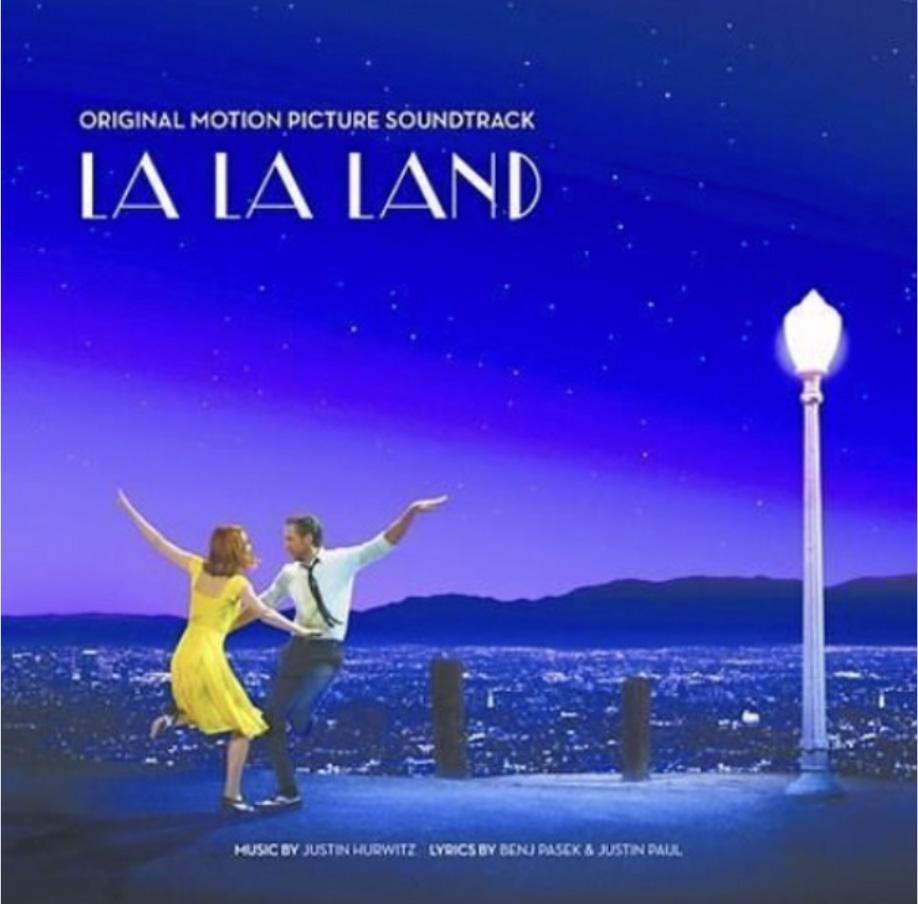
Finally, to extend further, I conducted interviews with teachers in our community, Mr Lim and Ms Bostock. I asked them 3 questions which were:
1. What kind of song gave you “hope”
2. Why and how?
3. Any examples from the selected type?
The interview responses were quite surprising!
Mr Adam Lim said,
“Although it may not necessarily be the spin you were aiming for, the song that first came to mind was ‘Peace of Mind’ by the band Boston. I remember when I was in school I used to listen to the song prior to writing an examination, because it helped me rationalise my anxieties about assessment.
In particular, these lyrics were memorable:
‘I understand about indecision
But I don’t care if I get behind People livin’ in competition
If you are struggling with homework, you may prefer listening to the song ‘Stronger’. The lyrics talk about how you can overcome, resulting in making you stronger! Kelly Clarkson’s voice is charming and can be a glimpse of light when you are feeling blue. The chorus of the music is spectacular and lyrics keep saying to be ‘stronger’ to the listener, building our hopes.
Another Day of Sun - La La Land OST
All I want is to have my peace of mind’
I do not mean to say that the song inspired me to care less about my education; however, whenever I would agonise over a decision, be it a multiple choice exam or selecting courses for university, I would think of this song and remember that indecisiveness was often a factor that held me back from focussing on the important thing—my mental wellbeing. The song reminded me to have confidence in myself, and how armed with ‘peace of mind,’ I would overcome any challenges that came my way.”
Ms Amanda Bostock prefers songs with a strong tempo, a major key signature and a bouncy chorus. She said, “I feel motivated to move, which I find always makes me feel more hopeful. The act of singing along to a really catchy line always helps as well! The songs that I turn to most when I need hope are across a lot of different genres. Twice - Yes or Yes; BTS - Magic Shop; Taylor Swift - Fearless; Thursday - Turnpike Divides; Jimmy Eat World - Big Casino”.
From the interviews, I was able to conclude that people enjoy listening to music to receive hope and strengths where they have different types of genres of songs from rock to pop songs. Now it’s your turn. Whenever you feel blue, rather than keeping it to yourself how about getting a headphone and listening to music?
When the lives lost during the fight for independence turned out to do nothing but fill the pockets of the elites, those who have been a part of the movement know that it is time for a change. Such is the case for Nigeria. As a multi-ethnic country in which many groups and kingdoms with long histories such as the Hausa, Yoruba and Igbo, were brought together within uncomfortable colonial boundaries, it resulted in a long period after independence being blighted by coups and a bloody civil war with widespread atrocities. Now, at the crossroads of having to reconstruct the nation from a shambles, an important question that determines the fate and direction of how reconstruction would look like for the nation arises: ‘In postcolonial African nations, which should come first: achieving economic reparations or enshrining civil and political rights?’
Although the writing will go to the extent of elaborating why we must prioritise economic distribution, we must first understand how the mechanism of redistribution works. In essence, instead of a major focus on civil and political rights such as free and fair elections and a representative government, we would prefer governments to first redistribute wealth. The way in which land and wealth redistribution would happen is as follows: there will be a truth finding commission within that figures out who benefited unjustly during colonial rule and take away from them. For land redistribution, it would aim to give equal access to land to those who couldn’t have land due to colonialism – land would be bought away from the colonisers and their aides and distributed to the oppressed. This money will be used to build necessary infrastructure, industries, health care, and education systems. The reason why one must focus solely on economic redistribution is because one cannot fully guarantee political rights or defend a perfect version of democracy: in many postcolonial African
nations such as South Africa, the African National Congress (ANC) is the only party that continues to win elections year after year which does not represent the interests of the majority of the population. Hence, it would be reasonable to believe that in most cases democracies are not fully functioning and people are not getting the full representation that they deserve.
With this in mind, the people of post colonial African nations desperately need economic empowerment. This is because postcolonial nations are structurally likely to have rampant inequality and lack infrastructure because submissive elites rule the country under colonisers and even after colonial rule accumulating power and wealth. Hence, especially for those who have been in suffering, the most direct way to provide closure is to take actual money and land from their oppressors and give it back.
This can be done in three steps:
Step 1. Prioritise economic and land reparations by allowing land acquisitions and loans
Step 2. Owning land means that you have something of value, you can farm on it, build supply chains on it, etc. Hence we increase disposable income and the first thing that citizens will purchase is going to be essential goods
Step 3. The significance of giving people capital is that they are now given the room to breathe, meaning that people can become forward thinking and this would eventually act as the route to financial independence.
Granted, in the best possible scenario, one may have political rights if governmental reforms are prioritised. However, what remains constant is the fact that they will have to work for their colonial masters. In Burma, even after the British retreated, pro-British officials prevailed in power during new governments and companies because they were the only ones with the skill sets and capital necessary. Inequality and the failure to resolve the remnants of colonialism is especially problematic because there is no room for improvement if they continue. The rift between the rich and poor would only grow larger and larger until the people of the country live in destitution and there are no chances for empowerment. In the long run, the lost sense of justice backfires on the overall morale of the country because people will find it unfair that they have to continue to work for rich elites despite the amount of blood shed in the past .
Principles aside, on a more pragmatic point of view, economic reparations are more feasible than civil reforms. This is because compared to democratic reforms, various groups have greater incentives to execute economic reparation in an efficient and fair way due to existing natural checks and balances. Everyone who fought against their colonisers is trying to recover what they have lost; therefore, the moment when the re-distribution and reparations processes become unfair, there will likely be a backlash against the individuals instituting the reparations. This process of natural check and balance is still effective because, even if the government is trading off on some freedoms of assembly, they would still be afraid of potentially losing their power if the people were to riot. Unlike political reformation, which is a universal concept that has to be implemented nationally and ingrained into people and their customs and culture, distribution of land and lost equipment can be accomplished with the influence and control of a smaller sphere and therefore is much more efficient as well as effective. For instance, in South Africa they are long disillusioned by colonialists who only let the elites benefit and left others suffering but they supported political reforms based on what it can do for
them. Hence, if economic well being is not secured, democracy becomes illegitimate because it cannot deliver social and economic goods to create equality of opportunity.
Finally, one must realise that there can be no political action without economic reparations. Given that the majority of the citizens in post colonial backgrounds are poor due to constant oppression and exploitation by their colonial rulers, individuals prioritise having food on their table over who the next president is. This is especially true as they have dealt with the history of not having a future even for the very next day. This means that they will not be able to grasp the political ideals parties are setting out as not only will they be poorly educated, they are also going to be uninterested in politics and would rather farm in the time given to vote. By pursuing economic gains more vigorously, we will be able to lay the groundwork for a stable democratic system in which the relatively more equal economic and political powers of the people automatically lead to a more fair distribution of civil rights. This is significant because to sustain a democratic state, the foundation of the civil rights given to the people must be built on strong means such as with the cooperation of everybody and with the relative check and balance power of the masses.
In essence, this essay quite literally proposes the message of the title: “Let them redistribute, not democratise.” In the eyes of Western Liberal democracies, it might seem to be the case that democratisation is the panacea to all social problems present within these postcolonial African nations. In reality, this is not the case. An incomplete democracy is worse than a functioning autocracy, which premature democratic reforms will impregnate, given the fact that it will do nothing by unjustly taking away from the suppressed.
The views expressed above are those of the author. If you wish to take issue with thejm please feel free to write a response.
Apart from being unfairly characterised as being overly sensitive, radical, and “snowflakes”, Gen-Zs are well-known for their fondness for a grim sense of humour and nihilistic memes. Blog posts, articles, and reviews are indiscriminately plastered with so-called ‘depression memes’. From this, a ‘new’ concept has emerged, shaped and created by the finest of our generation: optimistic nihilism. To be fair, though, this concept is not as new as we believe it to be. Although the oxymoron of optimistic nihilism in itself is recent, it stands on the shoulders of the philosophical approach known as existentialism. And so, in honour of our happily depressed generation, this essay attempts to explore existentialism— and perhaps even hope.
Since its birth in the mid-to-late 19th century, existentialism has become increasingly popular and its ideas influence us to this day. Existentialism is best summarised by these three words, famously said by Jean-Paul Sartre: existence precedes essence. Before the existentialist movement, the common belief was that essence precedes existence. However, the existentialists reversed this mindset by stating that our lives have no intrinsic meaning—that we decide how we interpret our lives, not the church, government, or any other organisations. There is no definite, set purpose in our lives, and hence our existence is freedom. Simply put, in this world, we are completely, totally, and wholly free. It is on this basis that self-determination is possible. Since our lives have no inherent meaning, according to existentialist minds, the burdensome task of meaning is on our own shoulders. As there is no fixed design, no ecclesiastical manifesto that provides true insight into how our lives must be lived, it is on the individual to take responsibility and find meaning in meaningless existence.
It is this sense of absolute and utter sense of freedom that makes existentialism so daunting. This is the “anguish of freedom”, as phrased aptly by Sartre. To most, the phrase “anguish of freedom” is most likely paradoxical, since freedom is famous for being the ultimate desire of many; it is in fact so desired that it is used often by political parties as one of their many false promises. However, as it has been said by several existentialists, the idea that we are completely free means that we are also the ones with complete responsibility. If we are responsible for all our actions, it means that it is logically impossible to blame others for any misfortunes or, conversely, ask others for guidance, which includes praying to God and any other supernatural entities: the fault is not in the stars, but in ourselves. In addition to this, if we are free to shape our future, it also means that our future is riddled with uncertainties. Being left untethered in this confusing world full of choices isn’t only baffling, but to a great extent terrifying. This “anguish of freedom” is what is more commonly known nowadays as an existential crisis.
In spite of this, it is important to remember that existentialism is a mixture of both hope and dread. The important thing to remember is that, contrary to what many believe, existentialism is not nihilism. Nihilism is a philosophy based on the belief that all values are baseless and that nothing can be known or communicated. It is often associated with extremely pessimistic views and radical forms of scepticism which condemn existence. It is the embodiment of the question that always arises when times of tribulation come— “What’s the point?” While nihilism is often discussed in terms of extreme scepticism, for most of the 20th century it has been associated with the belief that life is meaningless, similarly to the idea of existentialism. Existential
nihilism begins with the notion that the world is without meaning or purpose. Given this circumstance, existence itself—all action, anguish, and emotions—is ultimately empty. Nihilism carries with it a warning not to become too attached to life, as ultimately, life is meaningless and, in the end, all that awaits us at the end of life is death.

Yet, as previously said, nihilism and existentialism are different. Although it is true that both nihilism and existentialism agree that there is no inherent meaning to life, the response to this is different in cases of existentialism and nihilism. Nihilism, the pessimistic of the two, explains that as life starts as nothing and ends as nothing, we are free to act and live as we choose. In short, as we live an objectively meaningless existence, there is no purpose in anything. Whilst nihilism, in a sense, abuses this freedom, existentialists say that, by accepting the full responsibility of our freedom, regardless of how daunting it may be, and recognising that the meaning of our lives are only given by ourselves, it is possible to overcome the absurd nature of life and live authentically. By living authentically, one must be free from the constraints posed by schools, religions, media, etc. and continually try to discover oneself, their values, their talents, and, on a wider level, the meaning of life. Despite the fact that our lives are meaningless, existentialists persevere and try to create meaning in a meaningless life.
In this sense, existentialism is perhaps the freest philosophy of all. At first, the concept of a meaningless existence and absolute freedom may be formidable and frightening. Yet once the anguish of a meaningless existence is overcomed, and once freedom no longer feels like a condemnation, existentialism offers a person a chance at hope. Although Camus may have believed hope to be a form of ‘trickery’, existentialism, ironically, is essentially a seed that has the potential to bloom into a tantalisingly strange fruit of hope, when given the right environment. It imparts us with the knowledge that there is no Moirai out there, weaving our fate, no divine plan presented to us at birth, but, rather, that we are the artists sculpting out our lives, the Moriari weaving our fates— we are our own gods. This knowledge is what makes existentialism a hopeful philosophy, despite what many believe. Underneath the frightening facade of a meaningless life, maybe existentialism carries with it a message of perseverance and perhaps even hope.
Nearly everyone has heard of the classic, Titanic, with dear old Jackie and Rosie, only the latter managing to escape the sinking graveyard. And yet, not all are as lucky as the famous protagonist of this tragic movie - some are still floating around like spirits roaming around their deathbed. Some have sunk to the bottom of the ocean: reaching out to the surface, searching for a beacon of hope through a haze of water, being embraced by a skeletal hand. And maybe, perhaps, some are still refusing to let go of their agonising present, clinging onto a fragment of hope.

Hope. What is hope? What is this chain that binds these lost souls to a depthless ocean? How can this word hold so much power that it chases away the same thieving spirit that absconded with the rest of the men, women, and children?
Let me introduce you to a man, in his forties, also a prey to the Atlantic ocean. No, he was not aboard the Titanic, but he was travelling by boat, and that is the only import-
ant piece of information you will be getting. He doesn’t have a name; his family had died with or before him; and his nationality is vague, with the answer being that he was a Nordic man: all of these facts were discovered through an autopsy report. It could have been months, or weeks, since his death. However, one interesting fact about this mysterious, but otherwise dull man was that he had survived in the icecold water of the Atlantic Ocean, the same coordinates where the Titanic had sunk in 1912, for more than a month. This is just a retelling of what I believe led him to his tenacious life in the water.
----------------------
It was a big ship, a gorgeous cruise model stretching to about 350 metres, a beauty only afforded by a few selected members of society. The Nordic man was among the few who had a place on this cruise and let’s not forget his family as well. We know nothing of what happened during the trip itself, only what ended it. An iceberg. I picture
him getting pitched off the boat like a baseball, soaring through the fields, the batter scoring a home run, his wife tumbling like a foul ball alongside him, reaching the roaring crowds in the stands.
The wife was found with a large gash on her forehead; she had probably hit her head somewhere and died even before hitting the Atlantic Ocean. Then she would have plummeted down, hidden away like a secret treasure, longing for the passersby to fish out her remains. Until then, she would have to be confined to the cold depths, with only her two dead babies to keep her company. Tumbling down with her, but comparatively lucky, the Nordic man would have struggled to stay afloat, watching as his fellow guests rained down beside him. Some unfortunate guests would become a fox and run away on a neon orange lifeboat, abandoning all who enter the ocean.
Gasping for air, the Nordic man would have shouted, begged, cursed at them to save him - he would have
hope in those people. He would have hoped that he would be rescued. Hope. Oh so powerful, yet so powerless. No hope would prevent his bones from weakening, his muscles loosening, his faith dimming. And he would have to go down to join his sunken treasures. . . .
And yet, he didn’t.
Ah, a beautiful pandemonium indeed. The holy Father has really outdone himself, has he not, my dear sweet sickly angel?
Your saccharine words never fail to make my teeth rot, devil - what brings you down here? Surely, not to feast on the pure helplessness these mortals must feel, I hope?
Oh, ho ho ho, sweetness, the decaying sugar in my fangs, do not play coy with me. You do not wish to send me on a fool’s errand, playing this little game of innocence. It is simply a waste of time! We have come here for a purpose and let us fulfil it.
I’ll be quite frank with you, devil. You are playing a losing game, your snide behaviour shall be your
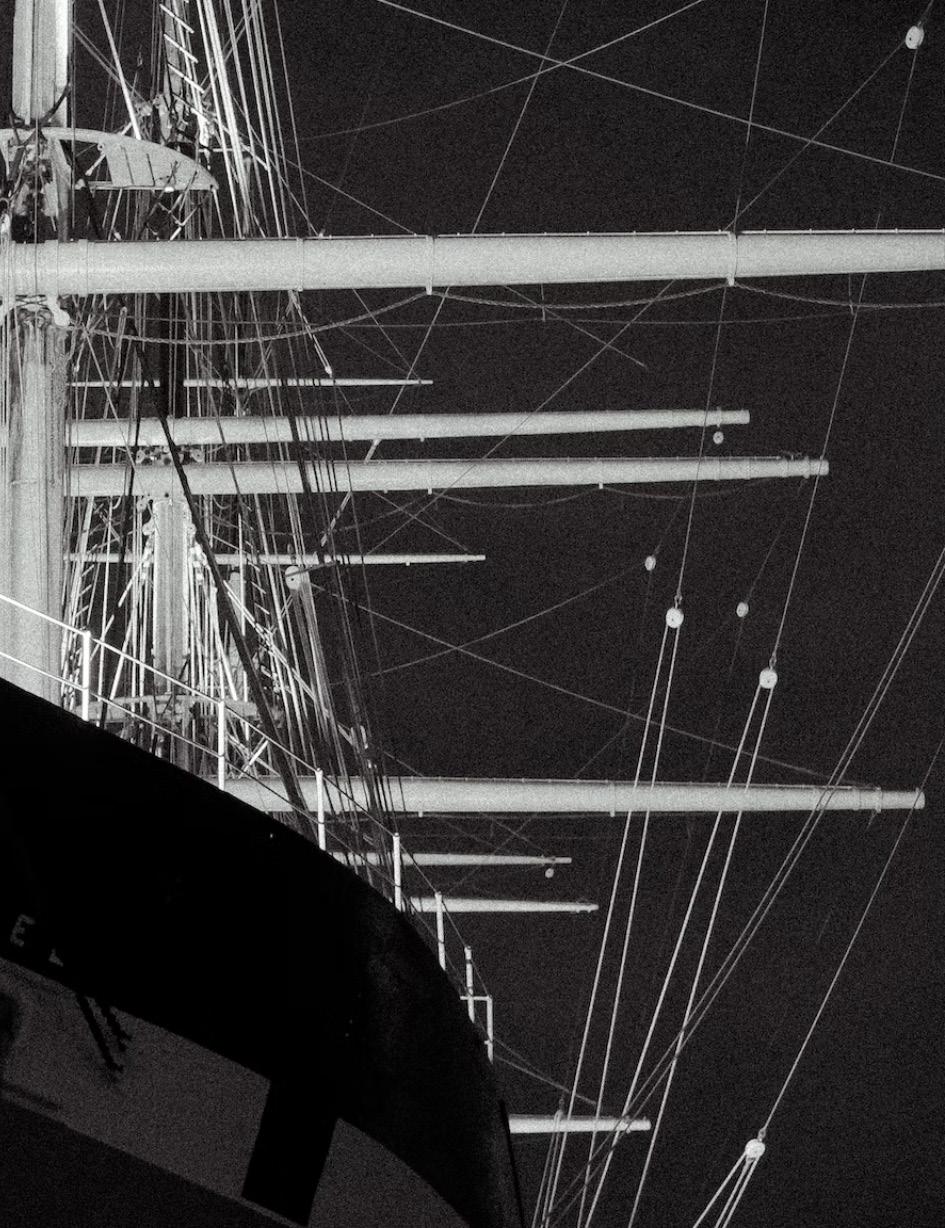
downfall, and you know it by heart.
Ah, ah, ah… the bet continues… oh! A man has just lost his wife and his future spawn to the ocean. I am sure he will lose another significance soon or later.
And what is that?
Hope, of course.
And our bet begins, devil.
. .
.
“Dear heavenly Father, if you love me, bring those men who have escaped back to me - to my family. Oh, heavenly father, I do believe that you will save me! Sooner or later you will save me and I will be in the arms of my family again, and oh dear God, I can’t find my wife anywhere! She carries my children with her, dear God, I do hope, I do believe that you will save us, oh Father…”
And yet, He does not.
The Nordic man flailed in the water, attempting to distance himself from what he surely was part of his own wicked imagination.
“The devil is whispering in my ears, Father, tempting me, deceiving me. I shall not listen to him, for I am with you. Save me, God! I do believe!” The Nordic man chanted furiously, trying to stay afloat from his previous hustle.
Don’t tell me you still see hope, you puny mortal: your wife has died, and so have your offspring! I am not a devil, but a humble messenger of truth. I do not tempt you with nonexistent facts or desires. I merely suggest what is the truth and what is not.
Ah, devil, after aeons of banishment, you still have no clue how God works! Believing in our creator is never to be based on visual truth, hence the word ‘believe’. One must know the difference between faith and facts.
“Oh, do my eyes deceive me? Is that an angel I hear and see? Tell me angel, that those words sprouting from the devil’s muzzle are mere lies.”
Ha! Sprouting lies? Don’t ask the angel for guidance! He knows nothing. Look around, my child, what do you see? God? Do you really see God in this carnage? Maybe you do - that means you are close to your death and knocking on heaven’s door, just to see God’s face popping up in front of you!
You still do not get it! God is not there to be seen, demon. God is there to be felt, to be believed - it is when you believe in him, you have hope, and you are saved. Believe in him, child! And hope will come.
Ah yes, what insightful input, my dear angel. Can you feel God here, human? Can you? Is this the ice-cold embrace of your Father in heaven, this water you feel? Or is it the clammy grasp of death? Even God is powerless in the face of the impending doom of all human beings.
Do not lose hope, my dear child, for it is in God’s plan that someone will hear your fragile cry for a saviour. Do not look so despondent, have joy on your face, it is the greatest of challenges to always look for hope in a hopeless situation.
“…I…”
““For I know the plans I have for you,” declares the Lord, “plans to prosper you and not to harm you, plans to give you hope and a future.”” Do you remember this quote?
The Nordic Man gasped for air: “Jeremiah 29:11!”
Yes!
Ha! That silly verse is not what is keeping you from freezing, is it?
You haven’t!
Yes, my dear angel, the bane of my very existence, I have. See, what you do not understand about humans is that every human, no matter how sinless they are, has desires - and this particular human does not want to die, but instead wishes
to be warmed. I am merely fulfilling his desires.
You can’t do that, demon!
It seems that I can! What will you do? Stop this man from having desires? Why, that is almost impossible as this man’s wife is alive!
“My wife! My wife! You said she was dead! Oh, am I a fool to trust you? But what happened to her? Where is she? Oh, I beg you, demon or not, to bring my wife to me!” The Nordic man reached for the illuscent demon, basking in the setting sun. “Where is she?”
The Nordic would have scratched his throat out with his own voice - he had screamed, then begged, grovelled, mimicked the shell of a hopeless man, a cacophony of grief; trying to erase the image of the waxy mannequin, decorated elegantly with her own stuffings and already eaten away by fish, that was once his lovely wife.
. . .
After a while, the man would have felt numb - outside and inside - with cold and grief. The busy altercation between the two deities would have ceased, getting quieter, until they were simply observing the man, legs paralyzed, heart dragging down to a steady thump.
…Have you stopped using your
influence on him?
I have, my sick sweetness, though I do not see any problem in assuaging his upcoming damnation. He does not have much longer, does he?
You are the angel: you should know better, sweetness.
I believe he has lost hope, my angel! Our bet here shall be over soon.
My God is a jealous one, He will not tolerate him crying out for the Fallen.
It is not a question of tolerance - he has lost hope! Why? His wife is dead! His children are dead! He will be dead! Why would he think other than that God has abandoned him? He has lost hope!
He will soon realise that this is just a part of God’s plan.
How do you expect someone to withhold his faith? How do you expect some to still be steadfast in the face of death? Your God asks too much from these poor people. While yours do not ask, they take and take and take, until what is left of their helpless clients are mere caverns for you to reside in. Exploited until they have become a sanctity for their own abusers? How is that any better than our Father?
Ah, so you do not deny? I have nothing to deny.
Here, I must interject and admit that my story is not very plausi-
ble at all. No, it could be said that I have made it up in my imagination! Though it must be said, there is no other explanation for this strange phenomenon, where a man survived in the Atlantic for months before succumbing to death. If there is any other way the man could have escaped death for months, such as how Sisyphus had bilked his way out of its hands, do tell; I will sit and wait.
Some say his hope for the future protected him, but how is that any more believable than the spurious tale I have spun? I do not pretend to believe that hope is useless, but I do have my doubts when it comes to saying that hope can save lives. Hope is something fragile, that can be lost easily - no man would be able to live that long in the Atlantic without some supernatural force! However, if there is one with the purpose to save, there is one to condemn. I imagine the angel and the devil enjoy this little gamble of theirs - though the angel will never admit so - playing with people’s hopes, letting them go up and down, just like the waves of the life-extinguishing sea.
~End~
“Hope is like the Sun, which, as we journey toward it, casts the shadow of our burden behind us.”Samuel Smiles (18121904), British author
With Reed Hastings and Marc Randolph as founders, Netflix started in 1997 as a rental company where customers could use DVDs for a specific time period after payment. While being an “online” rental system provided them with a significant advantage of reaching out to many customers with an easy order system, Netflix faced drawbacks being an online rental platform: customers had to wait a considerable time for their delivery, and Netflix had to store numerous returned DVDs. Tackling the problem, Reed and Marc created a system where customers can keep the rented DVD and exchange it for other DVDs when they want - essentially a subscription model. Providing free trials and recommending personalized movies for customers, Netflix experienced burgeoning growth. Furthermore, thanks to the growth of the internet, in 2006, Netflix ended its DVD business and instead converted to downloadable content like movies and shows, further decreasing the cost of its input. However, sadly, the success of Netflix attracted people’s attention, and soon there was a boom in streaming services. This boom detrimentally affected Netflix, losing some of its content to competitors. During the awful situation, Netflix quickly maintained its place as the leading figure by creating its specialized content: a notable, innovative distinction.
The history of Netflix briefly explained above reveals key, unique ways aas to how the company dealt with dangerous or challenging situations. In line with the technological and social advancements, Netflix made decisive, revolutionary changes that might have resulted in the company’s failure. It would no longer exist if the company remained stagnant with its local DVD rental business. Moreover, from its birth, it has prioritized optimization for each customer, assisting customers to decrease wasting time. In fact, this method is well utilized and aligned with Netflix’s main advantage, numerous selection of content, suggesting to users content that they might have overlooked or was new to them. The unique corporate employee-led culture also helped the company to try out unique ideas: the official Netflix website directly states that the company “encourages decision-making by employees” and wants information shared “openly, broadly and deliberately”. Unlike before when Netflix introduced its specialized content, today, with the continuous
growth of other streaming services, it has experienced a drop in its user numbers and is currently without an innovative solution to arrest the change. According to The Guardian, Netflix lost 200,000 subscribers in the first quarter of 2022 and is expected to experience a further decrease of 2 million in the second quarter of the year. Thiis is before publicly announcing that it will implement a cheaper plan with an advertisement option. With fewer potential subscribers but a need for growth, Netflix has faced a major crisis in its history. One of its major problems is a deteriorating public image.
Admittedly, for a company like Netflix, whose profits heavily rely on the number of customers, public image is the main factor that determines a company’s success. Nonetheless, in recent years, Netflix has been notorious for its high subscription price and inconsiderate egotism in Asian countries.
When Netflix, the leading streaming service company, charges its subscribers varying prices from $9.99 to $19.99 per month, a runner-up streaming service company, Disney Plus, only requires a monthly subscription of $7.99. Even though Netflix’s high price is a controversial issue, its way of communicating the reasoning for an increased price was insufficient. For instance, when Netflix increased its basic subscription pay to $9.99 (from $8.99) and its standard subscription pay to $15.49 (from $13.99), there was no official justification announced by the company. According to the spokesperson, Netflix is “updating [its] prices so that [Netflix] can continue to offer a wide variety of quality entertainment options. As always, [Netflix] offers a range of plans so members can pick a price that works for [its] budget”. Even though its justification is reasonable to some extent, the fact that the company has already increased its subscription price several times for the same reason casts doubts on its intentions.
Its service to some Asian countries was also a cause for customer number drops. For instance, “A Suitable Boy,” part of Netflix’s well-known content, has been widely disputed: the Vietnamese government requested Netflix to remove the show as it violates Vietnamese sovereignty law. Netflix’s failure to take account of countries’ cultures before the release of some shows disappointed its customers.
Moreover, since November 2019, Netflix has been in a lawsuit with SK broadband in Korea. Unlike other countries, South Korea has different charging systems for broadcasting companies. While other countries’ networks do not differentiate the cost for “accessing” the network and “delivering” the contents to the users, South Korean networks charge each a cost based on the amount of bandwidth they use. Since Netflix uses SK broadband’s leased line, SK broadband requested Netflix to pay for its use. However, Netflix rejected this and instead filed a lawsuit against SK broadband. Not familiar with the network policy in Korea, Netflix finds it unfair that it has to pay as its server is not located in Korea. The company further claims that Korea’s network charging system goes against “net neutrality,” as it makes the larger companies pay double. Meanwhile, SK Broadband finds Netflix’s reluctance to pay the fee absurd because it is the rule that applies to all in Korea. As Netflix is the only one disputing the policy, the public image of the company deteriorates. Netflix has earned the nickname of “unscrupulous free rider,” as the Korea Times puts it, as other foreign OTT companies like Disney plus and Apple TV, whose servers are also not located in Korea, have agreed to pay the fee. This conflict shows how Netflix lacks cultural understanding and sensitivity. As a company that relies highly on the number of users, taking care of the public image and likability is crucial, and it seems like Netflix is failing.

There are various ways that can be implemented to improve a company’s image but, for this article, I would propose one solution that suits the current trend of being environmentally awake.
These days, many people are interested in climate change and global warming. However, most people, including myself, do not know that using the internet causes carbon dioxide releases. In fact, according to a paper from Laura Marks, streaming, which utilizes a “massive infrastructure of data centers, networks, and devices, including computers, phones, and TVs,” is “responsible for 3-4% of the global carbon footprint”. More seriously, despite the system’s efficiency, the amount of carbon released is “rising fast.”
Unlike other streaming services, Netflix has been actively trying to save the environment as much as possible. By 2022,
Netflix plans to achieve “net zero greenhouse gas emissions.” However, its efforts do not end here. First, the company specified its emissions and listed ways to decrease each emission. For instance, Netflix stated that 50 percent of its 1 million metric ton emission in 2020 was from “physical production” of content. The company then stated that it would reduce its “internal emission on 1.5 Celsius pathway” and make partnerships to decrease emissions.
Furthermore, Netflix continuously puts its efforts into publishing environmental documentaries like “Our Planet” and “My Octopus Teacher” to raise awareness. In fact, “My Octopus Teacher” won the Oscar award for the documentary section, reaching more audiences who might not have known the series. Last but not least, the company has a full team of advisors dedicated to improving Netflix’s sustainability. From youth activists to scientists, the professionals all discuss together to decide on the best possible way for Netflix to be a model OTT service to others.
Therefore, in a world where ESG companies and environmentally friendly companies are highly rated and praised, Netflix must concentrate on promoting its goals and raising the company’s image. This may lead many customers who care for the environment to change from other OTT platforms to Netflix. Also, showing that the company is politically awake as the streaming service’s forerunner will be an exemplar for other successors to follow.
Since Netflix’s successful resolution of the current crisis will formalize the company’s hopeful future, implementing effective solutions and acknowledging its pitfalls for evaluation must continuously take place. In other words, the result of this step will act as a determinate if the company will be able to maintain itself as a forerunner of streaming services or stumble, leaving an unfortunate case study example for future students to study.
By Taehee Kim, Year 12, Halla Edited by Warrick Kwon
Hope: what is it? Hope can be a wish for something to happen, a wish for things to turn out better, or even a dream. The presence of hope in our lives is important for reducing stress, boosting happiness, and enhancing our quality of life. Animals experience hope in their lives in a similar way to how humans do. For example, you may have noticed dogs displaying unique behaviours that indicate the feeling of hope: there can be signs of excitement about something which is going to happen, such as going for a walk or being fed. Moreover, animals not only provide hope for themselves, but also for humans.
To start off with an interesting experiment held by a psychologist, Otto Tinklepaugh conducted an experiment in which a macaque watched a banana being placed under a cup. As soon as the monkey was given access to the room, she ran to the baited cup. On the other hand, when the experimenter had surreptitiously replaced the banana with a piece of lettuce, the monkey only stared at it. Before the monkey had seen the banana, this monkey was excited to have the banana. However, as soon as the monkey reached the cup, it was depressed because of the absence of the expected banana. The results can be interpreted as the monkey hoping for the banana.
This experiment provides evidence that animals can also feel hope. Feeling hope can also be considered as animals feeling emotions. These emotions relate to how humans feel emotions. So what actually happens when one feels emotion? A part of an emotional reaction in your brain gets stimulated and we react to it. For example, when you are afraid or angry about something, your breath gets faster and your heart beats faster.
Empathy, or the ability to comprehend and share the emotions of those around us, is one of the most intricate and fundamental emotions. Humans show empathy for both other people and animals. According to research, animals feel empathy similarly as humans.
The idea of animals feeling empathy is a new way of exploring the non-human community. There is also a similarity between people and animals in that they care about their same species. This complex emotional characteristic has been observed in other primates, as well as elephants, whales.
These are a few examples of animals displaying empathy in what we might describe as human-like ways.Long lives and a close bond means that death is a traumatic event. Elephants have recently been observed visiting and caressing the bones of their departed friends. This expression of an elephant feeling grief supports that some animals are capable of complex emotions like empathy. Not only elephants do grief for their friends. A female killer whale carried her calf around for over two weeks, which can be considered as showing grief and sadness.
This overall theme of animals feeling empathy can also relate to hope by a psychological process called “vicarious reinforcement” which means one imitates another’s behaviour because he/she saw a model getting positive feedback by carrying out a behaviour. We took use of instrumental and Pavlovian conditioning to link rewards for one monkey (M1) or rewards for another monkey (M2) with visual signals. When signals indicated reward to M2 as opposed to M1, M1s made more mistakes during the instrumental trials, but they made even more mistakes when cues
predicted reward to no one. M1s preferred signals coupled with reward to M2 over cues associated with reward to no one in subsequent preference tests between pairs of conditioned stimuli. M1s preferred cues with rewards to themselves over cues with rewards to both monkeys at once, in comparison. The intensity and valence of vicarious reinforcement were well predicted by rates of attention to M2.
So how do animals support humans with hope? If we think about dogs for example there was a research that when humans cry, their dogs also feel distress. Now, the new study finds that dogs not only feel distress when they see that their owners are sad but will also try to do something to help. Not only particular to dogs but also for every pet may also decrease stress, improve heart health, and even help children with their emotional and social skills. Cortisol levels, a hormone linked to stress, have been proven to drop and blood pressure to drop when people interact with animals. Other research has revealed that animals can improve your mood, lessen loneliness, and promote emotions of social support. Numerous research projects examining our interactions with animals are being funded by the NIH/Mars Partnership. For instance, scientists are investigating whether animals may affect a child’s development. They are researching how children with autism, attention deficit hyperactivity disorder (ADHD), and other disorders interact with animals.
In fact, according to one study, dogs can aid in improving attention focus in kids with ADHD. Two groups of kids with ADHD were recruited by researchers in 12-week group treatment sessions. The first group of children spent 30 minutes each week reading to a therapy dog. The second group read aloud to dog-shaped puppets. Children who read to live animals had improved social skills as well as an increase in sharing, collaboration, and volunteering. Additionally, they had less behavioural issues.
In conclusion, I do believe that animals experience hope and give people hope. This is so because they also have feelings. Emotional states such as hope, empathy, loneliness, excitement and love are all tied to different types of feelings. Most animals, not just pets, experience feelings on equal with people. I’m hoping that in the future, it will be possible to communicate emotions with animals.
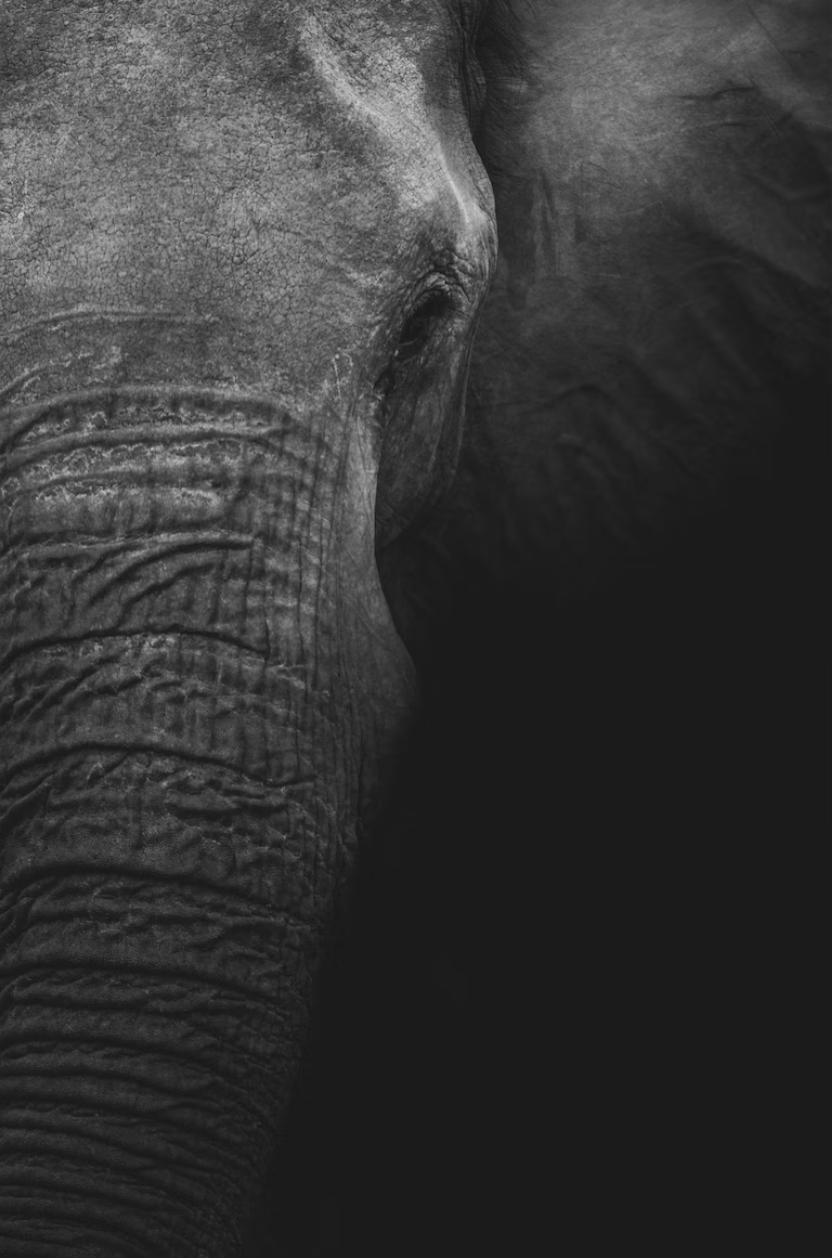 By Stephanie Lim, Year 11, Jeoji
Edited by Ally Lee, Year 12, Halla
By Stephanie Lim, Year 11, Jeoji
Edited by Ally Lee, Year 12, Halla
“The world is sunk, there is no more hope,” aligned under a movie poster where the Statue of Liberty is holding her torch over the flowing ocean. This is a cliché scenario in movies, where all land has become occupied by the sea. We often consider these situations only as fiction since it is such an extreme event to happen. In spite of that, land “sinking” is a serious problem, especially for the Maldives.
Maldives, founded in 1965, attracts 2 million tourists annually to its exotic scenery, emerald sea and varied activities. The geography of Maldives is very unique - a group of 1200 islands and sandbanks. While this special trait of the land has constructed an identity for the country, it has also become a critical flaw for its future survival. While their population is already dense from the lack of land available, they have been losing land at an increasing speed; experts expect Maldives to completely vanish from the world map in 38 years. Behind this serious situation, the two main reasons are sea level rise and beach erosion.
Climate change heated up the sea, melting the icebergs; over 750 billion tons of iceberg melted down, 10 olympic pools pouring water into the ocean every single second. In addition, the volume of water particles increased by thermal expansion, raising the sea level. Accordingly, the islands of Maldives are facing an imminent threat of submerging. While a significant amount of land is submerging, Maldives’ lands are literally disappearing at the same time. Beach erosion, also known as coastal erosion, is the process where elements of the coastal region such as rocks, pebbles, sand, etc are removed by various forces. Although beach erosions are usually negligible, Maldives’ situation is categorized as “severe” by the government. Its unique geography of being made out of islands made the situation worse; more areas are exposed to the waves removing sand and soil.
“We are not prepared to die.” Mohamed Nasheed, the former president of Maldives said in a 2009 UN Conference on
climate change. Continuously crumbling, it seems like an impossible game to win for the islands. Yet, they have not given hope - land is newly constructed. Addu city, overpopulated with workers with differing nationalities, has announced plans to reclaim their land from the ocean. Transferring 5 million cubic meters of sand to the south of Addu, roughly 194 hectares of territory will be created. Not only restoring its territory, the project is expected to revive the local economy in the city.
On the other hand, the project is harshly criticized. “A plan to totally annihilate an entire atoll system”, tweeted by a citizen lead campaign after the announcement of the reclamation project. While land is the home of humans, the sea is the home of sea life creatures. Removing a significant amount of sand will abduct fish and turtle habitats. Not only fishes’ lives but two major industries will suffer: local tourism and fisheries. Well-known scuba diving spots such as the British Loyalty Wreck will no longer attract travelers as species decrease. Fisheries would suffer from lack of fishes available to catch and sell.
Controversies around small and big projects in Maldives are still questioned, although, they end up with the point: “Will Maldives still survive?” Searching the question on Google, sources cite expert’s arguments on “uninhabitable by 2050”, “inundated by the century’s end” - mostly dominated by negative forecasts. Rather than solving global warming, the public’s attention seems to be focused on ambitious “floating cities”. Realistically, Maldives’ land will sink. However, if global society supports the situation regardless of their losses, there might be the last hope. Even if it is the last attempt, it is important to learn the seriousness of the situation. This sinking-situation is not only limited to Maldives, or other island countries. The steep gradient of sea level rise will eventually reach continents, so this particular case should teach us the seriousness of collectively doing something about climate change.

Hope is a feeling of looking forward and expecting something positive to happen. It is an important state of mind as it is a source of power for a human to overcome challenges in their life and not give up. It is important to know the level of hope because the lower the hope, the less motivated the person may be in their life, especially for parents who have immature young children. However, hope is an abstract and general idea that does not physically exist and is not measurable. Can hope be a measurable idea?
A children’s hope scale was created in 1997 by a psychologist named Rick Synder. It is a self-reported measure in which the questions are given to children between the age of 8 to 16. Those questions are classified into two sections about one component each in Synder’s hope theory: pathway and agency thoughts. Pathway thinking is the ability to design different routes to reach the goal achievement, the step of planning for the future. Agency thinking is the ability to implement and act on these plans, following the self-designed routes consistently developed before. This does not mean restricting the future in the previous designs; it is to propel yourself to undertake the actions you need to or want to do for your goal instead of only imagining it.
There are two versions of the hope scale, one with six questions and one with four. It was determined by the researchers that the second version is available, as there is a precedent that the second version was used for the 2018 Healthy Youth Survey (HYS). This article will introduce the modern version with four questions.
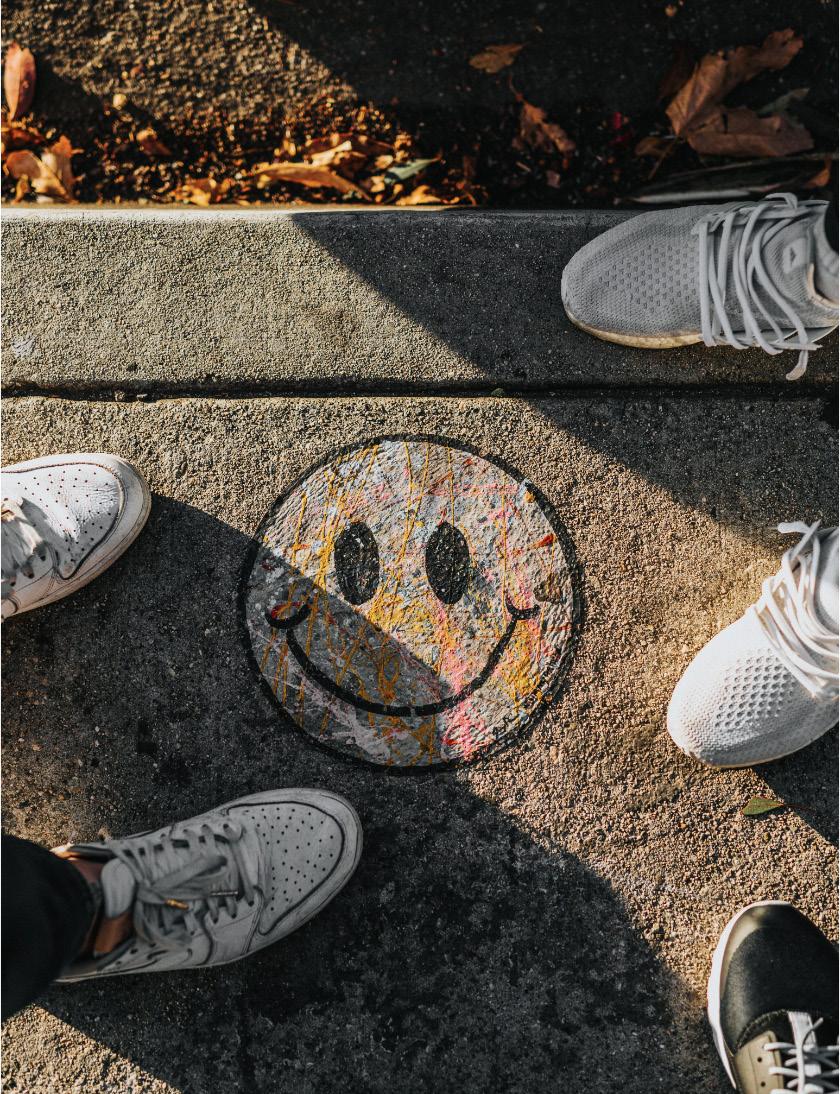
As a six-point response scale, each question has a score ranging from the lowest of one to the highest of six. The total score is the sum of which the respondent has scored in every two sections, pathway and agency thinking. The higher the score, the higher the hopeful state the respondent is. The four questions are the following, according to HYS:
I can think of many ways to get the things in life that are most important to me.
I am doing just as well as other kids my age.
When I have a problem, I can come up with lots of ways to solve it.
I think the things I have done in the past will help me in the future.
The odd-numbered questions are in the pathway thinking section, and the even-numbered questions are in the agency thinking section. A respondent would scale themselves in each question between the range from one to six, depending on their thought on whether they think closer to “none of the time” or “all the time” to the corresponding question. Then, the scores will add together. The total score of the scale itself is 24. This is divided into four ranges to make a final determination about how hopeful the respondent is. A score of 4 to 8 indicates very low hope, 9 to 12 slightly hopeful, 13 to 16 moderately hopeful, and 17 to 24 as highly hopeful. Depending on the score, the respondent can know in which stage of hope they are.
According to this children’s hope scale, it is able to assume the level of hope. However, even though it is a measuring scale, it cannot function like a precise and accurate measurement of a physical object. Its limitation is that hope is still an abstract idea and cannot give an absolute value as an actual measurement. This hope scale can be a consideration for the respondent themselves or the parents to determine the respondent’s emotional state, functioning as other self-psychological tests. Hope is not a measurable idea, and the hope scale is not an absolute standard, but this children’s hope scale will still definitely support the respondents to check their state of mind in daily life.
By Sophie Lee, Year 11, Mulchat Edited by Lucas ShinExcessive hope among people has the potential to have unwanted consequences. However, if the amount is sufficient, there is a good possibility that they will be inspired and get closer to their objective. We should have a closer look to the rudimentary source: where do you think the origin of “hope” comes from? Hope, another word for optimism, can be briefly defined as a human expectation of positive consequences or a want of something to become true, usually having a good reason to think that it might happen (Cambridge Dictionary, 2019). Since everyone will interpret a word differently, the definition is not a perfect analysis of the phrase itself. Regardless of whether or not you have an acceptable reason for anticipating a positive outcome, this anticipation can also be referred to as having hope, since your emotions do not flow as you want.
Then how can we connect this definition of hope to fantasy? Fantasy is defined as “imagination, especially when extravagant and unrestrained” (dictionary.com, 2022 ). Due to these features of the word, it would bring hope to others. Having fantasies increases creativity, since there are no boundaries, and most fantastical imaginations have happy endings. Therefore I believe it is more than capable of giving people hope.
Firstly, fantasies increase your creativity. To determine whether fantasies can inspire hope, it is necessary to examine the terms “extravagant” and “unrestrained.” Fantasy is imagination, and when it is especially extravagant. This implies that the items you actually contemplate are significantly different from the regular stuff people typically consider such as what’s on the menu for dinner. These main factors can enhance creativity: approaching things with curiosity, having an open mind, and accepting contents you normally do not choose. The fact that you are reading, watching or thinking about fantasy means that you are already trying to look at different traits, inadvertently enhancing your creativity. After you enter the world of fantasy, the content makes you curious since an imagination based on fantasy’s major elements
are magic, parallel universes, or fascinating figures – aliens, wizards, witches, heroes, and villains – which are exceptionally different from normal components of stories. Thinking of abnormal things already means you possess hope because “fantasy” is an imagination unrestricted by reality, and you will probably think imaginate something that is beneficial to you. Since you will keep increasing your creativity, your hope will grow as well. Being able to think of unusual things already indicates that you have hope, and as your creativity grows, so will your hope.
Additionally, one of the key reasons fantasies offer you hope is because there are no restrictions on them. For instance, if you frequently read or watch fantasy literature, you are probably not going to strictly limit your imagination just because you feel it is too extreme. Instead, you will look up more background information and even feel as though you are creating your own story. Well, you might ask yourself if there is any link between no limitation and hope, but the answer is quite simple: hope is more exposed when there is no limitation. “Stop doing that, it takes too much time, that’s not right”. Of course, these kinds of accusations can be a sign that hope is waning, so if you look or imagine any fantasies, there will be no boundaries, and you won’t hold yourself

too tight. Actually, this is a crucial point we need to discuss, whether limitation interferes with peoples’ right to hope. It is obvious that everyone can gain hope from various different events, but I believe there is always some restraint, because you will someday face the bitter reality. However, in the end, fantasies which do not have any restrictions will allow people to imagine any unliving and ambiguous creatures and definitely gives hope.
Finally, most of the fantasies have happy endings. This is limited in terms of fantasies that have a storyline, but I want to claim that including peculiar creatures and an unpredictable story will certainly draw the readers/dreamers’ attention to concentrate even more; people tend to have hope when there is a feasibility that the best possible event will happen. According to ‘Fantasy and Optimism: What’s the Use of a Happy Ending?’novels, films or video games constantly reaffirm an ultimately positive world view. Nearly every single fantasy story you encounter will have a happy ending. Examples of famous fantasies that have a happy ending are “Snow White”, “Aladin”, and “Pokemon” , which are basically fantasy stories that give hope to the readers/ watchers. Watching Snow White gives a sense of viability to the audience that even though there might be someone who despises you, eventually there will be
someone who comes to save you (in this case, the prince in Snow White). After watching the book or the show, you won’t be left without any hope left, but more instead. All in all, this means fantasies give hope to you by their happy endings.

Although these are all true, we should acknowledge that when fantasy lasts too long, it might keep you stationary on one spot. When something seems hopeless, it means your unbiased perspective has been lost, eventually making you bewildered with the situation. Not hope but something excessive can grow inside your mind if you become confused. We don’t call it hope but we call it fool’s paradise. Fool’s paradise is a state of happiness based on a person not knowing about or denying the existence of potential trouble, which is the most precise description of this state. If the point comes when you cannot stop yourself from thinking of your future and being obsessed with it, we should call them “fool’s paradise”, not hope as mentioned in the title.
In conclusion, I believe that because fantasies increase creativity, have no boundaries, and typically have happy endings, they give you hope. If people watch fantasies with sad endings, they could lessen your original hope, but there are other superb aspects of it that can overcome the decrease. Let us go back to the question again: “Do fantasies give you hope?” Giving hope means something allowing you to want certain things to be true or to happen, and when it helps you to believe that it is possible or likely. Regardless of the possible negative outcomes of an immoderate amount of hope, answering to the question (title), I strongly believe that fantasies give you hope because there are so many other reasons of fantasy why hope is generated. How would we ever be inspired to pursue our dreams and hold out hope that we might be successful in doing so if we never fantasised about life with someone or something we’re attracted to — a new partner, job, or house?
In the 1950s, Curt Richer conducted an experiment called ‘Drowning Rats’. The aim of the experiment was to test the abilities of ‘hope’. The overall procedure went like this: the rats were drowned in a large beaker filled with water, where they couldn’t physically escape. In the first trial, the rats were left to drown until death, most of them lasting for 15 minutes. The second trial had a slightly different method: the rats were saved just before they were about to die, then given some recovery time before being resubmerged. This time, the rats lasted 60 hours, almost 240 times longer than the first trial.
The conclusion of the experiment stated that the rats were able to last much longer due to hope. As the rats in the second trial had experienced being saved before death, they would have developed an idea that if they waited, someone would be able to save them: allowing them to last 60 hours. As this demonstrates, hope can be a powerful motivator in our lives - it stimulates individuals’ instincts to persevere. It allows people to have a reason, a motivation enabling them to work harder in order to accomplish the thing they want.
However, try turning the perspective: what if the concept of ‘fear motivation’ is considered? Fear motivation is the motivation given by the fear of failure and desire to avoid an unwanted situation.
If the experiment is approached with regard to fear motivation, a whole different conclusion can be drawn. The rats, before the experiment, might have never experienced drowning or any situation which led to their death. In other words, they would have never acknowledged the fear of death and drowning. After they have been saved, they would have in mind the agony of drowning they have experienced - when the experiment was reconducted, they have been motivated to stay alive caused by the desire to not experience the same situation again.
The point is, the concept of fear motivation could be found frequently in different areas of daily life: for example, it is often shown in Korean culture. In the traditional tale, “The Brother And The Sister Who Became The Sun and The Moon”, the tiger triggers the mother’s fear by saying “If you give me one ricecake, I won’t eat you”. This is an example of fear motivation: the mother
is motivated to protect herself and her children as she fears the tiger would eat her, leaving her children defenceless. Another example in everyday life is in the area of academics. Most teenagers motivate themselves to study hard for the test by the fear of getting bad grades, not being able to attend a named university and getting scolded by their parents. In some countries where good progress is seen in academics, and therefore there’s a high level of academic stress, such as South Korea, students mostly work hard just to not let down their parents. This is because they want to avoid getting scolded and compared to other students their age, which is considered very stressful amongst students. Not many students work hard in academics to accomplish their dreams, but mostly to avoid going into “unnamed” universities and disappointing their parents.
However, even though fear motivation could seem like a strong and effective motivation tool in the short term, psychologists do not prefer the use of fear motivation. The reason is, the feeling of fear is actually a negative feeling for humans. The feeling of ‘fear’ arises from the threat of either physical or psychological harm and persistent

fear could even be diagnosed as anxiety, or any other psychological disorders. In a long term effect, it won’t be good for your mental health and would definitely be overly stressful over time.
Teens are particularly vulnerable to this, whose brains tend to be more exposed to anxiety and fear. Teenagers’ brains tend to change until their 20s - they go through rapid changes of size, shape and functions. The structures and connections in the brain, which help to manage emotions, are unstable during this developmental period, resulting in teens being especially vulnerable to feelings such as fear, stress and anxiety. Teens experiencing anxiety have a high risk for problems in the long term, which include depression, substance abuse and suicide.

As much as fear motivation is common in daily life, people unconsciously use it as a tool for motivation. The advice is, try to change them into optimistic, hopeful ideas. In other words, try to rely on hope as motivation rather than fear. Dream about the prize you could earn yourself, not the negative consequences which would follow. This would allow you to become a more positive person: better for your mental health and better for your life.
By Serena Hong, Year 10, Noro Edited by Theresa Lee, Year 10, Jeoji Young Ju (Theresa) Lee By Sean Kim, Year 10, Mulchat
Edited by Serena Hong & William Kim
By Sean Kim, Year 10, Mulchat
Edited by Serena Hong & William Kim
“Hope is a dangerous thing, my friend, it can kill a man.” Initially, this quotation in Shawshank Redemption perplexed me tremendously - associating hope with hazard was not convincing. But why does associating aspiration with danger seem quite ludicrous? The definition of hope is a ‘feeling of expectation and desire for a certain thing to happen’. Despite the neutral denotation of ‘hope’ itself, hope has a positive connotation which has led to the prejudicial misconception that hope is beneficial. In reality, hope is ambivalent: neither negative nor positive entirely, both states instead coexist. Furthermore, this inference may be substantially altered by just a small adjustment; investment, for instance, is completely distinct from impulsive investing or gambling. In regards to hope’s ambivalence, this article will discuss several types of hope and examine the benefits and drawbacks of aspiration. It will also examine the variables that influence the aspects of hope using examples from real-world situations and theoretical justifications.
Indubitably, current psychological research supports the argument that hope enhances emotional and physical health. The main function of hope is to provide motivation or determination to attain particular ambitions whilst also fulfilling mental well-being. According to the American Psychology Association, hope is linked to a variety of advantageous outcomes, such as increased pleasure and enhanced academic performance. To examine this correlation, Randolph C. Arnau, Ph.D., a psychologist at the University of Southern Mississippi, and his colleagues surveyed approximately 500 students on measures of hope, depression, and anxiety over a term of several months. As a result, they concluded that “students who expressed higher hope at the beginning of the study had a lower measure of depression and anxiety one and two months later.” (Journal of Personality, 2007). On top of that, the relationship between hope and academic excellence was proved through research conducted by John Maltby, Ph.D., a psychologist at Leicester University, and colleagues. Data was collected after tracking college students over three years, and Maltby discovered that academic achievement can be anticipated more accurately through hope rather than IQ, personality, or past academic performance (Journal of Research
in Personality, 2010). This suggests that optimistic people are highly likely to excel academically while enjoying their current situation, therefore maintaining mental health.
Moreover, optimism’s benefits are not limited to psychological health: there is also a mutuality between physical health and hope. According to the Harvard T.H. Chan School of Public Health, optimism may lower the risk of developing cardiovascular disease and other chronic conditions. Supporting this idea, on February 12, 2021, Claudia Trudel-Fitzgerald, a research scientist at Harvard T.H. Chan School of Public Health, claimed that “optimistic people are more likely to engage in healthy behaviors, such as exercising and eating a healthy diet, and less likely to smoke”. As such, optimism can substantially benefit us, both physically, and mentally.
Although hope has been contemplated favorably throughout history, hope and deceptive fantasies are inextricable; aspiration is an enticing delusion that compels one to dream of an attainable goal. As aforementioned, aspiration is an impetus that creates determination to attain a particular ideal. What if the ‘ideal’ is not realistic? The substantial problem of unprepared optimism is that it can create inherently biased or unattainable ideals. If we inhabit a utopia, where every extravagant fantasy inevitably materializes, there’s no reason to ‘hope’ for something. However, society consists of multiple rules that are unalterable. Therefore, it is essential to base the judgment on a rational and logical conclusion, and avoid exorbitant delusion or relentless desire for change.
In some cases, unprepared optimism can be a form of ‘wish’ - a desire to achieve something without any attempt. It inhibits taking significant steps for accomplishing the goal. Regarding this idea, the author, Simon Critchley has suggested that it could be understood as a kind of “moral cowardice”, which results in passivity. As a consequence, hope might lead you to forfeit personal ability. Passive hope and wish can be tantamount to relinquishing any responsibility for making it happen. Although you possess the capability to resolve the difficult situation, you might decide to resign - surrender to an external force.
Unprepared optimism could disrupt adequate preparation for adverse outcomes. In the majority of situations, realistically accepting or preparing for undesirable outcomes is more beneficial than simply clinging to hope as it is impossible to alter reality. This is evidently justified by Cathal Kelly, a researcher at the University of Michigan. The research, “Study Finds a Downside to Hope” (2009, Cathal Kelly), was conducted on patients who had their colon removed. While the second group was informed that their bowels may be reattached during a time of recuperation, the first group was aware that the treatment was irreversible. When compared to the group waiting for a reversal operation, the group that had been informed that the colon was permanently impaired had much higher levels of life satisfaction six months later. They concluded that: “they knew things would get better but that made them less satisfied with present circumstances … while hope is usually a good thing, we see that hope has a dark side”. As such, blind faith hampers us to prepare or accept the atrocious reality by deluding ourselves, resulting in decreased life satisfaction.
In conclusion, aspiration has both positive and negative aspects. Depending on its attainability, or individuals’ effort, hope can either be an effective motivation or the source of hopelessness. That is why the hope, itself, is ambivalent. This is the unalterable nature of hope. Thus, unfortunately, the only thing that human beings can do to avoid ‘blind’ faith is to continuously judge whether an individual’s hope is problematic or not. For this judgement, there is a criteria called SMART, where S stands for specific, M stands for measurable, A stands for achievable, R stands for relevant, and T stands for time bound. Creating an attainable goal, and continuously checking the progress would prevent you from wishing for a certain goal. Under the condition where SMART criteria is satisfied, undeniably, hope would be beneficial for yourself. Having tunnelled through this topic, I come back to my original source for a concluding statement: “Hope is a good thing, maybe even the best of things. And good things never die.” This may be the case, but every good thing has a darker side.
“For ere this the tribes of men lived on earth remote and free from ills and hard toil and heavy sickness which bring the Fates upon men […] But the woman took off the great lid of the jar with her hands and […] caused sorrow and mischief to men. Only Hope remained there in an unbreakable home within under the rim of the great jar, and did not fly out at the door; for ere that, the lid of the jar stopped her…” (Hesiod, Theogony, ll. 90-105)
According to the Greek myths, the gods of Olympus had created Pandora, the first woman, out of spite when they discovered that humans had tricked them into not receiving the best sacrifice. Before Pandora’s descent down to earth, the gods placed a jar in her hands, and told her to never open it - at any costs. When curiosity finally prompted Pandora to open her infamous jar, she released all kinds of evil into the world: strife, hunger, envy, fear… Frightened, Pandora slammed
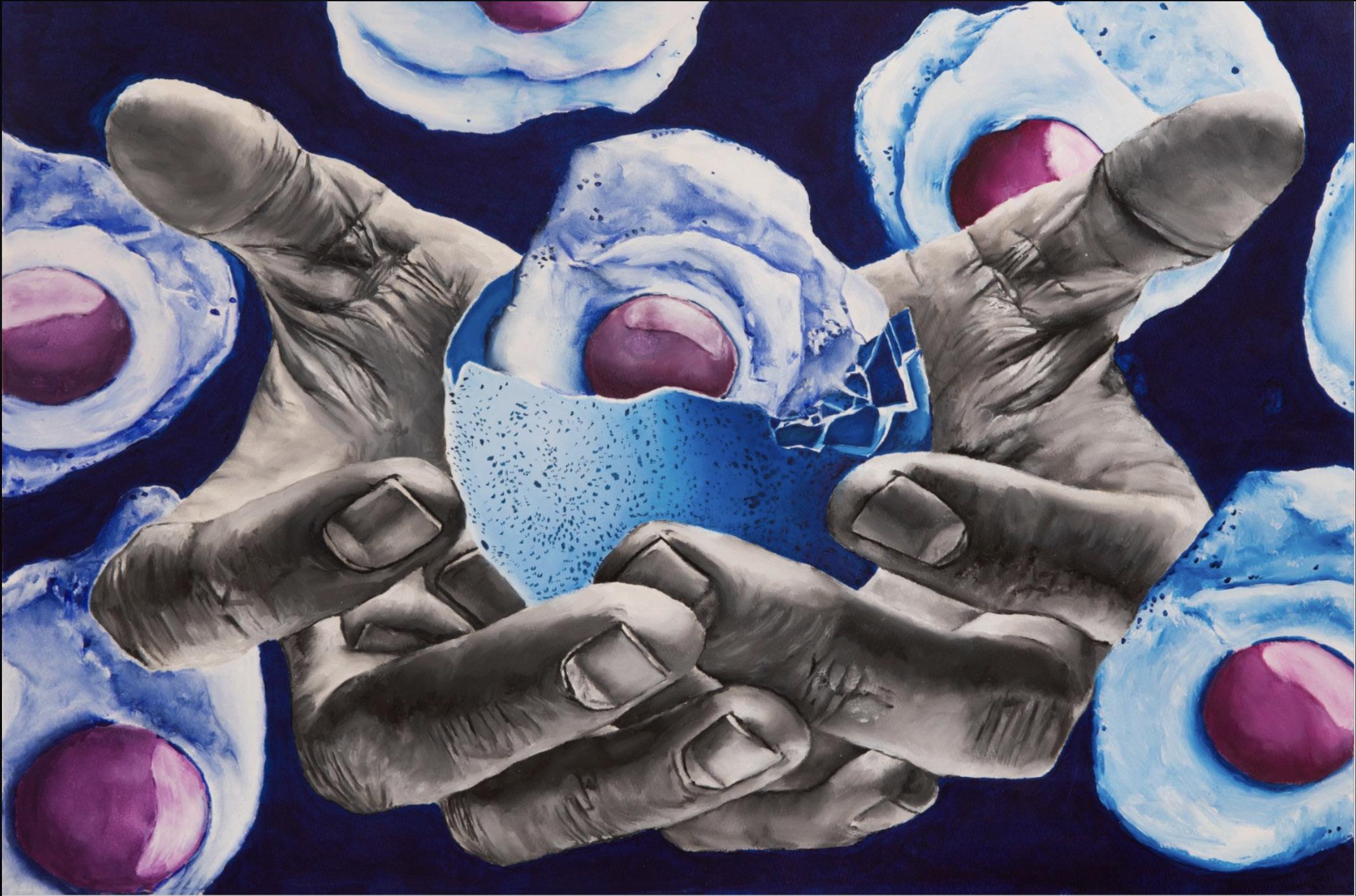
down the lid of the box, just before the last element came out: Hope.
What is hope? Is it the only evil that hadn’t managed to escape, the worst sin of all? Or is it some miracle that we all keep inside us, never to be lost, lighting the way even in the darkest of nights? How had hope come into existence in the first place? Is it biologically necessary for our survival? If so: why? These questions have haunted the history of civilization for
DONGHA KIM, Y12, HALLA, JEOJIcenturies. Although the exact definition of hope still seems unclear, the benefits of hope are beginning to be unveiled, and with it, the answer to the question: “Why do we need hope?”
Hope is the expectation of a positive result. This trait – whether it be based on actual evidence or not – appears as a form of optimism, where, despite the circumstances, the person believes that the ultimate outcome would be positive. Hope can be formed in situations where the subject is not aware of the possibilities of the manifestation of hope – an example being the placebo effect, where the subject is prescribed ‘fake’ medicine, and believing that the medicine will take effect, actually gets better – and where the subject is aware. Like the placebo effect, Hope may have positive impacts in that it forces the brain and the body to “form a stronger connection”, as Professor Ted Kaptchuk of Harvard-affiliated Beth Israel Deaconess Medical Center commented. This positive thinking may “convince” the subject that they are getting better, causing them to actually get better. Hope also may be shielding the brain from the effects of anxiety; a 2002 University of Kansas study led by C.R. Snyder found that students with ‘less’ hope had greater amounts of anxiety, resulting primarily
from the pressure of establishing goals that were too overwhelming and hard to achieve. This links to another study conducted by Malaysian and Hong Kong scientists, which discovered that cancer patients informed positively about their progress showed reduced anxiety and depression.
Then, is hope a trait developed by humans later in evolution? If hope is so beneficial for our mental health, why are humans the only species on Earth to possess it? Although the presence of hope hasn’t been proven in other animals, the idea of expectation has already been established by an American psychologist, Otto Tinklepaugh. He conducted an experiment, in which a macaque watched a banana being placed under a cup. When the macaque opened the cup to discover that the experimenter had somehow switched the banana for a lettuce, she’d frantically look around, scouring the room over and over again, before finally settling for the lettuce. When the macaque opened the cup, she had a certain expectation that she would find a banana underneath it. When that expectation was violated, she would act outraged. This ‘looking forward to something desirable’ may be classified as a feeble classification of hope, where the animals create an expected vision of
the future against the backdrop of the past. This hope can prompt animals to act more quickly in the expectation of a coveted object, whether it be food (as demonstrated previously), a mate, or a higher status in their herd.
Hope can bring better chances of success. But the greater the expectation, sometimes, the greater the fall. Hope may “prolong the torments of man”, as Nietzsche remarks, or it may be the only rope stopping you from falling down in despair. Whether it be the redeeming good amongst evil or the worst of them all, hope is an unescapable trait that all human beings have. Although the essential question, what is hope, and why we have it is unanswered, scientists still hope that they may find it and, with it, advance science even further.
By Cathy Kim, Year 10, Jeoji Edited by Mr. Maher By Cathy Kim, Year 10, Jeoji
Edited by Emily Lim
By Cathy Kim, Year 10, Jeoji
Edited by Emily Lim
I thought they would understand. I don’t know how I could have been so stupid – it was like some voice was whispering in my brain, a permanently installed speaker of a distorted, disturbingly cheerful voice. It had my old tendency to giggle in between words, and the annoying British drawl I had acquired as a teen in the short period I had spent in Oxford. It called itself ‘Hope’.
Hope was the devil disguised as light. It came in my darkest moments, consoled and tamed my tear-streaked soul with sugar-coated words, then planted a seed of a thought through my fortress. The thought grew to envelop the tall walls, crashing them down with the heavy weight, leaving me vulnerable to the heavy fumes of Hope. When my guard was down, my mind hazy with the possibilities of happiness and forgiveness, it hit me with the truth. The small taste of Hope left me dazzled with its effect for days. It was a drug I couldn’t escape. Hope, was devastating.
Skipped school? It’s okay, Hope would croon. Our parents would understand, you had a stomach ache, you just couldn’t go. Surely they would listen to their only son, wouldn’t they? Their own blood. Now, focus on the game. You’ve almost got the next item! An hour later, as I lay in the silence of my darkened room, listening to the soft sobs and agitated voices coming from my parent’s room above, I cursed Hope for its sickly sweet vows, promising myself that I would never fall for its tricks again. Knowing that I would let myself down again.
Cheated on a test? It’s okay, no one would ever know. It can be our little secret. If they never know, it’s a win-win. Don’t be such a goodytwo-shoes. You trust me, don’t you?
Smoked with seniors behind the school garage? It’s okay, it’s only a one-time thing. Addiction is someone else’s thing. Surely we won’t get addicted because of one harmless smoke. We’re healthy. Addiction’s not our thing. It’s all government propaganda. Take another drag.
Got caught pickpocketing?
Damaged the principal’s car? Set fire to a store?
It’s okay.
As my crimes got bigger, Hope tightened its grip on me. The assurances that it’s okay became my motto, my prayer. If I say it enough, it might really be okay. It’s okay. It’s okay. It’s okay…
Voices. Voices in my head, voices outside. Voices everywhere, pulling me down.
“That kid is doing that on purpose! I didn’t raise him like that.”
“It’s because he’s a teenager. Maybe he’s just expressing his feelings through violence. If we give him some time…”
“Not all teenagers ‘express their feelings’ by becoming a juvenile criminal! I swear, we should have forced that kid into that military boarding school when he skipped school.”
“But all teenagers do that. It’s their way of rebelling against -”
“Stop trying to protect him, Janis. We spent thousands to hush up his ‘rebellions’. I’m tired of all this. Either you agree to send him to that school, or I’m going to leave you both.”
“What? But -”
“A day, that’s all I’m going to give you. Think carefully, okay? I’m leaving for now.”
Footsteps, then a slam. Quiet grunts against the heavy thuds, slowly getting louder. I sneaked out of the kitchen to see Dad holding a duffel bag, his keys glinting in the low lights.
Hope’s cold fingers brushed against my shoulders. His familiar voice rang in my brain. If you grab him now, maybe he’ll see you and forget that he was angry at you. Maybe he won’t leave, and make up with Mom upstairs. Maybe everything will be okay. Do it.
Sudden rush of power, sudden spark of victory. For the last time, I believed that everything would be okay. My hands clasped on bony skin, and jerked it back. A perfect O of surprise flew past, then red coated the edges of my vision. Droplets – confetti of false promises, of millions shades of shock, then shame, then anger. Dad. Dad. Dad, I was a fool to believe Hope.
A blur of images passes by: a shrill siren, or was it a shriek?; a cold hand pulling me back; flashing reds and blues; faceless men in uniform, grabbing MomMom?
Cold hands all over my body, pushing me down. I couldn’t breathe. Words exploded out of me in a torrent.
“No, it’s not her! I did it, the devil in me did it! Take me, not her! Take that stupid Hope out of me, put it in cuffs, just let me live in peace!”
What do you mean, Hope snickered. I’m you, you’re me. You can’t get rid of me so quickly. You caused this, you believed your lies, it’s all you. It’s your fault. But it’s okay, at least we’re still here -
As I sat on the cold asphalt floor, watching Mom’s hooded face illuminated by the millions of cameras flashing, I cursed Hope again.
Hope was the devil disguised as the light. And never would I be tricked by the light, ever again.

The fact that the great run of scientific progress may come to an end frightens many people. Recently, modern society has heralded and worshipped progress like a deity. Science has substantially advanced with the invention of the telephone in the late 19th century and the television just a few decades later. It only took a further 6 decades to develop the internet. The public has been intoxicated into believing that the exponential rate at which science has been advancing will continue and that it will be eternal. Will there be a limit to advancement? Can science keep up with the rate at which it is developing? Are there questions that will never be answered?
Science revolves around discovery which is fueled by hope. Knowledge has an inverse relationship to hope: the less we know, the more hope or motivation one has to discover more. Hope – a feeling of expectation and desire for a certain thing to happen – cannot coexist with absolute certainty for there
must be a degree of uncertainty for it to manifest. Hope cannot prevail if one is fully secure in their belief and knowledge: there must be an element of wavering for there to be a feeling of anticipation. If science’s goal is absolute undeniability, then at its core the entire field is the search for no more hope. When science becomes so complete to the point where every question has a definite answer, there will be no hope for the unknown; phrases such as I hope it is sunny tomorrow and I hope they find the cure for cancer will become obsolete.
To understand the end of science, we first need to analyse the reason behind the alarming speed of scientific advancement. Science, the knowledge about the structure and behaviour of the natural and physical world, based on facts that can be proven, by nature builds upon itself. Each scientific advancement improves upon its former, and as the world’s human population increases, so does the rate of scientific development. Arguably
all science and technology today is a derivative of the first primitive stone tools made approximately two million years ago. Take the example of the modern car, it is at its essence an improvement on the early steam locomotive, the locomotive an improvement on the bicycle, and the bicycle an improvement on the horse-drawn coaches of the 15th century. This continual string of invention and reinvention ultimately gives science its accelerating returns. Each iteration is better than its former, science and technology by nature refines themselves. Recently the globalisation of information and communication has only catalysed the speed at which scientific advances. Now that information can be easily shared and received, two researchers from different parts of the world can develop the same ideas in new and completely diverse ways. This difference in interpretation and cognition made easier with globalisation, eventually fuels new scientific discoveries. However, does this grand library of knowledge and science
have a ceiling?
Nicholas Bloom, Charles Jones, Michael Webb of Stanford and John Van Reenen of MIT claim that “a wide range of evidence from various industries, products, and firms show[s] that research effort is rising substantially while research productivity is declining sharply.” The number of researchers is increasing, yet the yields are decreasing. Research teams are getting bigger while the number of patents per researcher has diminished. This trend can be seen in all research-related fields ranging from agriculture to medicine. One reason behind this downward spiral is the fact that would-be future innovators and researchers need more training and investment. To make newer discoveries, one must be well-versed in their given field and reach the frontiers of knowledge. So researchers must specialise, which takes time and money, something many people in the twenty-first century lack. The deceleration of research and discovery is reflected in the trends seen with the Nobel prizes, an internationally recognized award for “those who, during the preceding
year, have conferred the greatest benefit to humankind.” There has been a sharp increase in the average age of the prize recipients. The average age of the chemists rose from 36 in pre-1905 to 46 post-1985, and for medical scientists, from 38 to 45. Prior to 1905, 20% of prizewinners finished their groundbreaking research before the age of 30. However, by 2000, this figure converged towards zero. This trend is seen in all of the fields of science including, especially physics. For the branch of physics, a scientist makes their prizewinning discovery at the age of 47 on average, about a quarter into one’s working career. Consider the progress of physics during its golden age between 1925 to 1927 when pivotal discoveries such as the fundamental nature of matter having both particle and wave properties, the formulation of the laws of quantum mechanics, the presence of anti-matter, and the Heisenberg uncertainty principle. A time when scientists such as Einstein, Planck, Bohr, Pauli, and Schrodinger were making huge strides in the field of physics. One of the most significant physicists of the 20th century who lived through such an era Paul Dirac
remarked in his book, The Development of Quantum Mechanics, “It was very easy in those days for any second-rate physicist to do first-rate work…It is very difficult now for a first-rate physicist to do second-rate work.” Dirac was not wrong, significant discoveries truly are becoming harder to come by. Science seems to be getting less bang for its buck in part due to the innovation veneration. With the advent of the twenty-first century, growing obsession and innovation of societyhas led to science regressing into a replication crisis. Peer-reviewed claims and thesis papers are becoming increasingly difficult to replicate – science is becoming less scientific. Increasing competition among researchers has led to desperation for publications and grants. False positives and exaggerated results plague science reaching unparalleled proportions in recent years. The public’s rising expectations of science have only returned diminished or sometimes dangerous consequences. While Effort seems to be increasing, productivity continues to stagnate. The efficiency of science is decreasing. At what point do we or should we give up?

The quality of new knowledge decreased due to the incessant demand of the public to maintain unsustainable precedent that has been established, but this is compounded by a deeper issue with the supply chain. We are approaching the point where all theories have been theorised, available discoveries have been discovered, and all available knowledge is known. The slowdown of science is like that of

the low-hanging fruit metaphor, there will be a point where all available knowledge is known and the limitations of our consciousness will restrict us from reaching higher. We have come to a point where scientists have solved all the relatively easy questions and now we must look further and answer questions that may never be answered including the unification of physics, the mind-body problem, and the existence of a higher being. How after
centuries of work and dedication by our greatest minds in physics does this merger still elude us? Ever since the inception of general relativity and quantum mechanics, the two fields have been at odds from a fundamental level. Where general relativity explains the large and the massive, quantum mechanics describes the subatomic universe through waves of probabilities. The two theories clash around the concept of space-time warping hence making them incompatible. The unification of physics may perhaps be an unreachable fruit, we must either keep investing time, money and manpower to reach the impossible fruit or decide when to cut our losses and quit. We are at the crossroads where we must quantify the value of pure science. Do we spend billions of dollars on pure research, the constant search for truth and the unreachable fruit, while millions lack health care, clean water, and education? Furthermore, the single brilliant inventor and researcher is a thing of the past. When Ernest Rutherford conducted significant research and discovered the existence of the nucleus and published it in his paper in 1911, he was the only author whereas when the two papers in 2012 were published around the discovery of the Higgs particle, there were approximately a thousand authors each. Our solution to reaching the higher fruits is to pour thousands of hours, thousands of scientists, and millions of dollars; however, we must ponder on the efficacy of science. Should we divert our resources and manpower elsewhere, like finding a solution to world hunger?
Despite this bleak prediction, there is a reasonably strong case for the opposite to be true. When the history of innovation is analysed in more depth, we may
simply be waiting for the next paradigm. According to Kurzweil’s Law of Accelerating Returns, “An analysis of the history of technology shows that technological change is exponential, contrary to the common-sense “intuitive linear” view.” Advances in science and technology tend to feed on themselves. When a technology approaches a barrier and can no longer advance at a steady exponential rate, a new technology will be invented to take its place in order to allow us to cross that barrier. Such are called paradigm shifts, a change in method or approach to solving a problem, predicted to become increasingly common, whereafter a “technological change so rapid and profound it represents a rupture in the fabric of human history”, the singularity will occur. In the very early ages of human development, our first technological baby steps started with sharp edges, fire, and the wheel. It took tens of thousands of years for it to develop, evolve and be adopted by a wider human population. By 1000 AD the exponential rate of development plucked up, taking only a century or two for a paradigm shift to occur. An example of a paradigm shift is the industrial revolution, prior to the use of steam power, most factories were powered by water, wind, horse or man. The exponential growth of technology was powered by this new discovery and once its potential was exhausted during the 2nd industrial revolution, electricity-based mass production took its place a century later during the early 19th to 20th century. In fact, the century that saw the introduction of electric power experienced more technological change than in the nine centuries preceding it. The first twenty years of the 20th century alone faced more advancement than the whole
of the nineteenth century. In the latter half of the 20th century, the 3rd industrial revolution, the development of the computer and internet, took the mantle of its predecessors a half-century later. Finally, the 4th industrial revolution, the use of big data and artificial intelligence for a hyperconnected digital world, only took another two decades to begin. Now paradigm shifts occur every few years, the intervals halving each decade. Hope for science and technology still remains, we are making more discoveries today than ever before, and tomorrow more than today.
Amidst the 13.7 billion history of our universe, only a few hundred thousand years have we lived and breathed on this planet, only a few thousand years did we start exploring our world through the lens of science, only a few hundred years of discovery beyond the limits of earth did we indulge in pure science to answer the mysteries of our cosmos and yet we know so much about our world and space. There is hope for science so long as there is curiosity and the will to search for the truth.
By Joo Hyun Kim, Year 12, Halla Edited by Sophie Lee“FearJoe Biden (1942), American politician and the 46th president of the U.S.A
Go to your email and click ‘Search in mail’. Search for “hope”. You’ll probably get an endless list of emails with phrases such as “Hope you are doing well,” “I hope this email finds you well,” - unless you have recently cleared your inbox. These “I hope” phrases are casually used every day, without us giving much thought or consideration into whether we really hope for it or not. So, do you really hope hope when you say “hope”?
Other than the fact that the wording sounds funny, this question is quite interesting, as it makes us think about something we haven’t considered despite constantly using the word. The Cambridge dictionary defines “hope” as “wanting something to happen or to be true, and usually have a good reason to think that might happen.” Do you really “want something to happen or to be true, and usually have a good reason to think that might happen” when you say hope? Or, when you hear the word “hope”, do you really think that the person “wants something to happen or to be true, and has a good reason to think that might happen”?
Think about yourself on an occasion where you have to send an email to a teacher, asking for a revision checklist. You would probably end the email with something along the lines of ; “Hope you have a great weekend,”, just to make sure that you sound polite. But why specific the word “hope” though? Why do we feel that the word “hope” helps us in awkward situations?
Many of us who casually use the word “hope” in emails will have started using them because everyone else does. In fact, even the earliest letters from the 1790s end with the words hope; our habits originated from all the way back then. Jane Austen used the phrase “I hope you are all alive after our melancholy parting yesterday,” in her letter to Cassandra in August of 1796. At the end of another letter written by her, she even used the phrase “God bless you,” an old-fashioned way of saying “I hope you are well,”. Saying “I hope you are well,” has continuously been an all-purpose way to end an email, throughout history. However, as we continue to use this word everywhere - even in occasions where “hope” is not really the best word. Like that, the word “hope” has become a cliche, meaningless, nothing but a curt greeting.
Such a fact has not gone unnoticed either. Google up “hope”. One of the first related questions that comes up is “How do you say hope without saying I hope?”. It is proof that numerous people consider the word “hope” to be too abundant and too “low quality”. If you think about it, at least half the people in a classroom must have had to search up “synonyms for hope,” either in their minds or on Google, because they consider it to be a babyish, year 5 level word. (And because they think that they will get their marks off for using such words.)
However, “hope” is too good of a word to receive such treatment. It is not a word to be thrown away after being labelled as a cliche. Honestly, what other word can express your feelings of “hope” as well as “hope” does?

What word can really, truly substitute the meaning of hope? Aspiration? Desire? Not really. Those words both refer to something big and significant. You can’t say “I aspire that chicken noodle soup is going to come out for today’s lunch,” or “I desire that chicken noodle soup is going to come out for today’s lunch,” Even Google Docs wants to autocorrect “desire” into “hope”. No word can totally replace another. It is the same for hope. Hope is the only word that can hope hope.
But, to be honest, the fact that the word “hope” is a cliche is indeed, occasionally helpful in our lives.
Think again to the occasions where you use hope. As mentioned before, you use the word because everyone uses it. Because the word hope is a cliche, we may casually use them in emails and be one of the few hundred people who used a cliche to end it. We’ll go unnoticed and my email won’t be a significant memory to someone else. This is exactly what we hope to achieve by using the word hope. We hope to be a cliche. Our goal in the world is to be unnoticed, to be considered unimportant, and the word hope is exactly what helps us achieve that.
So, not many no longer hope when they say hope. But for some who still use the word “hope” with sincere thoughts and feelings, there is no better word that can express the emotions of “hope”. “Hope” is the only word that can precisely deliver the meaning of “hope”. Shouldn’t everyone try and do something to preserve the word? After all, not being able to use the word “hope” when you want to say “hope” will have an im-
pact in everyone’s lives; you can’t use the word so much in your assessment, what other words are you going to think up of?

To preserve the value of the word “hope”, we need to be more aware of the fact that we are using the word “hope”. In order words, be conscious of what you are saying when. There’s no need to think “Oh I am using the word hope, H-O-P-E,” everytime you say hope, but we should indeed be aware of whether you are using it in an emotionless way or truthfully. And also, when you receive the word hope, think about the contextual meaning and judge rather that person was actually hoping for something or not. Again, you don’t need to be like “Hmm.. he has only used this word because I am his boss,” or “Hmm.. he has used this word with meaning because I am his dearest friend,” but just, don’t mistake someone’s use of “hope”. Being able to clearly differentiate between the truthful “hope” and the polite “hope” will help us keep two “hopes’ ‘ in our lives. This will offer us twice the chance to express our true thoughts; don’t limit that option into one or none.
By Naeun Kim, Year 10, Geomun Edited by Chloe Park By Jackie Lee, Year 9, Noro
Edited by Sean Kim
By Jackie Lee, Year 9, Noro
Edited by Sean Kim
We quickly fall into feelings of pessimism and despair these days, bringing depression and suffering into our life. People then start searching for a solution to regain optimism. There are various ways to revive hope, some of which are focusing on the positives and firmly believing in oneself. But the most effective solution to improve your hopelessness is to change your environmentyour surroundings, relationships, and even your interior decoration. Small differences in what you see, feel and experience will significantly enhance your life. Hope is defined as a strong desire and expectation for something to happen, but the definition of hope can change depending on the person. Everyone’s moral and ethical idea of hope is different. If the person is speaking about hope in a spiritual context, it might mean believing good things will happen with faith. Only making changes to simple surroundings won’t directly aim your hope. You will still suffer without a more precise, obvious solution that can sufficiently fill your emptiness: artwork. I believe that hopeful artwork is one approach to enhance your hopefulness, as it provides opportunities to choose your own hope according to your own standards.
well-being) maintained better physical health, medication compliance, social support, and lived longer lives. The concept of SWB fits with the “hedonic” perspective, which views well-being as fundamentally; maximizing happiness and minimizing suffering. On the other hand, we have a “eudaimonic” perspective, which concentrates on an individual's self-realization and the degree to which fully incorporates and integrates to their own lives.
We quickly fall into feelings of pessimism and despair these days, bringing depression and suffering into our life. People then start searching for a solution to regain optimism. There are various ways to revive hope, some of which are focusing on the positives and firmly believing in oneself. But the most effective solution to improve your hopelessness is to change your environment - your surroundings, relationships, and even your interior decoration. Small differences in what you see, feel and experience will significantly enhance your life. Hope is defined as a strong desire and expectation for something to happen, but the definition of hope can change depending on the person. Everyone’s moral and ethical idea of hope is different. If the person is speaking about hope in a spiritual context, it might mean believing good things will happen with faith. Only making changes to simple surroundings won’t directly aim your hope. You will still suffer without a more precise, obvious solution that can sufficiently fill your emptiness: artwork. I believe that hopeful artwork is one approach to enhance your hopefulness, as it provides opportunities to choose your own hope according to your own standards.
Individuals may experience a difference when they have the opportunity to achieve significance and optimism - and when they don’t. Art has the ability to provide us a sense of ourselves and an organic connection to everything that allows us to inspire hope that affects our perspective. The scans prove that people exposed to art feel happiness; dopamine, a happy chemical, flows into our brain, resulting in emotions of pleasure and contentment.
listening to classic songs, and falling asleep. And this is not wrong. We get to calm down through meditations. But, “active” meditations lead you to another level of relaxation. You will find out that doing this kind of active meditation, creating arts, can and will take you to a new stage of coziness; where you can stamp out stressful thoughts and worries. The repetitive motion of your hand while coloring, for example, shifts your body to a relaxed state. Hope is a powerful and essential thing for every life, and it is something that deserves our focus in our creating and art therapy. Hopeful artworks will relax the mind and alleviate stress.
“Today, more than anything, life needs hope,” says TED Fellow, Yana Buhrer Tavanier. We as humans can live without a lot of things, but we cannot live without hope. Hope makes difficult, harsh conditions more bearable for us and improves our quality of life. Hope envisions a better future, lowering feelings of despair and increasing enjoyment in our daily lives, motivating people to move forward. A person is considered to have a high level of subjective well-being, also known as SWB, if they are extremely satisfied with their lives, have a stronger positive affect, and little or less negative impact. Harvard students studied the influence of hope on over 13,000 persons with an average age of 66, and they discovered that people who had greater hope (higher subjective
Artwork also supports understanding our surroundings and processing our emotions, it makes us feel alive and encourages us to view our daily life in a different perspective. Arts were always an essential part of our society, constantly being used for cultural exchange, education, and expression. Not only the actions of viewing and experiencing the artworks; creating an artwork can also give hope. The process of touching the art materials and making them can improve your mental health.
“Today, more than anything, life needs hope,” says TED Fellow, Yana Buhrer Tavanier. We as humans can live without a lot of things, but we cannot live without hope. Hope makes difficult, harsh conditions more bearable for us and improves our quality of life. Hope envisions a better future, lowering feelings of despair and increasing enjoyment in our daily lives, motivating people to move forward. A person is considered to have a high level of subjective well-being, also known as SWB, if they are extremely satisfied with their lives, have a stronger positive affect, and little or less negative impact. Harvard students studied the influence of hope on over 13,000 persons with an average age of 66, and they discovered that people who had greater hope (higher subjective well-being) maintained better physical health, medication compliance, social support, and lived longer lives. The concept of SWB fits with the “hedonic” perspective, which views well-being as fundamentally; maximizing happiness and minimizing suffering. On the other hand, we have a “eudaimonic” perspective, which concentrates on an individual's self-realization and the degree to which fully incorporates and integrates to their own
Do you remember the sense, from when you were a little kid, of peace and enjoyment you felt while coloring? Now, the adults have turned to coloring as a way to reduce stress and bring hope. Art can express lots of things and serve a lot of different purposes: Making art about hopeful memories, gratitude, and dreams will lift our mood and focus on our life. Art and music will change our emotional state and pain perception. These are also called active meditations. When we hear the term meditation, we think of sitting still,
As I've already proven, there are various interpretations and applications for art outside of the realm of creative sketching. The idea that art can inspire optimism is just one of the numerous interpretations. The human senses are stimulated by both watching and touching, and all the feelings you experience while viewing enigmatic artworks are all helpful to produce and discover hope. It makes you feel satisfied even though you can't understand that they are all essential to restoring the other person's hope. Since the corona time has arrived, an increasing number of people have been forced to deal with the agony of being alone and many have died unfairly from infection. Now, rather than a predetermined study where we need to find a fixed answer, we are in an era of varied discoveries and proofs. Why don't you become more interested in art and explore a wider universe in addition to regaining hope? You will be able to find hope and rediscover your imagination, inventiveness and your future.

A discussion about the future of whether “insulinfree type 2 diabetes” is either “impending” or “absurd” took place during the recent European Association for the Study of Diabetes 2022 Annual Meeting. Given the heterogeneity and progressive nature of type 2 diabetes, Bruce H. R. Wolffenbuttel, MD, PhD, supported the “absurd” position, while Apostolos Tsapas, MD, PhD, expressed optimism that improved treatment for those with type 2 diabetes was unnecessary.
Because type 2 diabetes is “characterised by both increased insulin resistance and reduced insulin secretion, but reduced insulin secretion is a basic feature in may, has a strong genetic background, and further decreases over time,” Wolffenbutel claims that some patients with the condition will always require insulin. Tsapas, meanwhile, argued that the recent movement in the treatment of type 2 diabetes away from glucose-lowering to cardiovascular outcomes is one of the strongest arguments in favour of abandoning insulin.
The landmark United Kingdom Prospective Diabetes Study (UKPDS), in which insulin production was already 50% lower at the time of diagnosis, was one of many studies mentioned by Wolffenbuttel to support the idea that insulin will always be required in type 2 diabetes. He further emphasised the heterogeneity of the disease. Approximately 10% of patients with type 2 diabetes as defined by the WHO were insulinopenic, meaning they had high insulin sensitivity and low beta-cell function, while another 61% were “classical,” indicating they had low insulin sensitivity and low beta-cell function, according to a study that excluded the roughly 6% of people with autoimmune diabetes (type 1 diabetes) or other rare subtypes. Only 27% of people had high insulin levels and tended to be severely obese.
The landmark United Kingdom Prospective Diabetes Study (UKPDS), in which insulin production was already 50% lower at the time of diagnosis, was one of many studies mentioned by Wolffenbuttel to support the idea that insulin will always be required in type 2 diabetes. He also emphasised the heterogeneity of the disease. Approximately 10% of people with type 2 diabetes as defined by the World Health Organization were insulinopenic, meaning they had high insulin sensitivity and low beta-cell function, while another 61% were "classical," meaning they
had low insulin sensitivity and low beta-cell function, according to a study that excluded the roughly 6% of people with autoimmune diabetes (type 1 diabetes) or other rare subtypes. Only 27% of people had high insulin levels and tended to be very fat.
Another study that defined five phenotypic subgroups of diabetes indicated that, by 5 to 6 years, some individuals in all five clusters—including 5% to 8% of those with the insulin-resistant and obesityrelated subtypes—needed to be treated with insulin.
"A subgroup of overweight individuals have an early insulin deficiency and require insulin supplementation. So, claiming that all type 2 diabetics who are obese are insulin-sufficient is erroneous "A Professor of endocrinology and metabolism at the University of Groningen in the Netherlands, Wolffenbuttel, stated.
In fact, a specific variety of type 2 diabetes was discovered in which at least 30 genes were linked to low insulin secretion and a lower body mass index as opposed to types in which the genes were linked to insulin resistance and obesity. He said, "It makes perfect sense that these folks will require insulin replacement therapy early in the course of their condition. In conclusion, people with significant insulin resistance might be able to stall using insulin. In one investigation, the UK (Diabetes Remission Clinical Trial (DiRECT) trial, this was accomplished by utilising an extremely low-calorie diet.
By Ji-Min Lee, Year 11, Noro Edited by Daniel Kim
“There are only three things that America will be remembered for 2000 years from now when they study this civilization: The Constitution, Jazz music, and Baseball. These are the 3 most beautiful things this culture's ever created.”
- Gerald Early (American essayist and culture critic) By Leo Li, Year 10, Noro Edited by Joseph FernandesBaseball has been America’s national pastime for more than 180 years now, and the sport has cheered people up and motivated people through the negative events that have occurred in the USA right back from the Civil War to today. The sport of baseball supports and reflects many aspects of American life, cultural, economical and technological advances.
For many Americans, baseball has been a source of amusement, triggering pleasant memories of the past and pure competitive excitement. Baseball grew in popularity over time, giving young people the chance to pursue their fantasies of home runs and perfect games.
So how exactly did baseball become America’s national pastime? General Abner Doubleday is believed to be the inventor of baseball. Baseball was already extremely popular back in the 1840s. The amateur version, however, has roots that reach back decades before the Civil War began. Reporters described baseball as a mania back in the 1840s; the sport was already established as a popular pastime when Civil War soldiers on both sides played it as a diversion. Many veterans took the game home after the war and it became a great unifier in the years that followed the bloodiest conflict in U.S. history.
Baseball competition, rather than conflict, inspired our kids to pursue their goals. Most kids who watch baseball games dream of playing in the biggest professional competition in the United States, the MLB. Baseball around the world has become more popular and kids in South Korea, China, and countries as diverse as Mexico and Uganda are also now sharing the dream.
More recently, baseball has shown itself to be a strong advocate for eradicating poverty worldwide. 27% of players in the top leagues in the MLB were born abroad, with the Dominican Republic accounting for the majority of such players. In the Dominican Republic, 30% of people are considered to be below the poverty line and the US is a major draw for them but they would still play for the Dominican Republic if selected.
A number of major league baseball players have joined forces with Food for the Hungry, a global nonprofit organization, to establish the Striking Out Poverty program. Players like Nick Ahmed of the Arizona Diamondbacks, Dee Gordan of the Seattle Mariners, Jake Flaherty and Michael Wacha of the St. Louis Cardinals have devoted the last two years of their careers to helping raise awareness for nations that live below the poverty line. Some people play to promote access to clean water, food donations, support for farmers, and lifesaving efforts.
In the US, professional baseball is a huge industry. Every year, the MLB draws nearly 70 million spectators to games, and many more people watch games on television. Top athletes frequently sign contracts that pay more than $10 million dollars annually.In contrast, Messi, a top footballer, is paid $55million a year for playing football and can make the same again in his off-field activities. The draft system in baseball keeps players' wages down. A salary cap proposed by club owners resulted in a strike by players from Aug. 1994 to April 1995 wiping out the season. MLB teams have leveraged the promise of financial gain to persuade localities to spend a significant amount of money building new stadiums. A MLB game’s estimated economic
contribution to the host community has historically been in the neighborhood of $300 million. Nashville, Las Vegas, Charlotte are without teams. The MLB wants it this way because they could then turn around to a city like Los Angeles or New York, both with more than one team, and threaten to move a team away if the city and its taxpayers do not fund a new stadium.
Over the past two hundred years, immigration has been a significant American story, and baseball has been impacted. The game has grown more international with each passing decade and demonstrates how expanding an operation's reach outside American borders may be beneficial. The overseas media, especially from Japan and the Far East, sends correspondents to cover games from spring training through to the World Series. Major league games are now regularly broadcast in different languages. The expansion of players from Latin America and the Caribbean has arguably changed the game the most since the 1980s. Players like Minnie Minoso from Cuba and Roberto Clemente from Puerto Rico entered the major leagues and rose to fame starting in the 1950s bringing more skills that American players could learn from.
Another illustration of how diversely the game has evolved since Jackie Robinson's era in the 1940’s, is shown in the 2022 season. 38% of the 975 players on Opening Day rosters and inactive lists in 2022 were from a diverse background (Black, Latino, Asian, Pacific Islander, and Native American). Jackie Robinson was the first black player. Born in America to play in the MLB. On Opening Day rosters in 2022, there were 7.2% fewer Black players who were born in North America than there were in 2021. MLB has made an effort to tackle this problem at the grassroots level in the hopes that future percentages will be far more representative of the nation and fan base as a whole.
Many sports, especially baseball, require diversity because it encourages innovation, different viewpoints, and new opportunities. Good sportsmanship is a characteristic that athletes frequently acquire as a result of diversity. Diverse sports teams have the potential to achieve new levels of achievement, improve teamwork, and avoid groupthink.
So how is diversity ‘used’ in baseball? The MLB puts attention on developing an environment that promotes inclusion from the start. Encouraging coaches and players to get to know one another’s backgrounds, daily activities and hobbies outside of sports. Also by creating gatherings outside of the game where people eat together and discover more about one another’s cultures helps cement diversity.
Baseball resonates the ‘Field of Dreams’, we can clearly see from all of these ‘hopes’ that baseball brings to our life. Not only can sports such as baseball bring hope, but they also bring a lot especially for poorer citizens all around the world. Baseball is a sport that can support the fight against poverty, racial and ethnical inequalities that our modern societies face. However, there are still some economic relationships in the sport that need to be put on a more equal footing.
Life is tough these days. Covid-19, inflation, climate change, and more and more to list. In such situations of urgent need, adults, like the wise men from movies, tell the young that one day the pain will fade away and light will shine again on their life. They claim that hope is the only way to recover and hope is the golden string that would never rot or cut. But is this really true? If so, why are there so many people who choose to let go of this golden rope and fall into the pit of darkness? Were there moments when you wanted to give up everything? Maybe it’s not the despair but the hope that people can’t stand. For people who are at this final stage, give me a chance to guess what led you to have this empty mind.
In today's society, nearly all values can be expressed through money. As stated, with money, you could become anyone, do anything, or buy everything. In other words, this means that without money you might be considered to be no one to people. This is the ultimate value in a capitalist society where some kill others for this and some escape from death through money. Maybe these materialistic and competitive aspects of society could have dried you out. For example, looking at some aspects that are close to our lives, we can look at doctors and medical care. In Korea, saving people isn’t even on the list for choosing one’s career as a doctor. Most people force themselves and their children to become doctors simply because they want a stable income and a doctor's job is considered to have a high status. In the case of huge university hospitals in America, hundreds of people head back to their homes preparing for death because of the skyrocketing fees that they cannot afford to pay. Isn’t it funny that people die out in the 21st century in America not because they lack the technology to
heal people, or because the country is a thirdworld nation but because people don’t have enough money to pay off their lives? Even though the example referred to health and hospitals, this phenomenon is not only limited to the medical industry but occurs in many other features that are essential to life.
Or what about supernatural events that you can’t expect or prevent from happening? These situations are the most stressful and futile situations since one can do nothing to prevent these events from happening. For instance, the most recent heartbreaking event we could refer to is the Russia-Ukraine war. The war has brought huge damage to both countries, especially targeting the ones at the most vulnerable level of both countries. This war has made 7.9 million refugees, $ 97 billion worth of property damage, and 6655 civilian casualties. What would these people have thought after witnessing their bombarded houses and the dead corpse of their families? Absolute despair is what these people would have faced. They wouldn’t have even had a chance to review what is left for them or seek hope in the piles of dust. The definition of hope that most people refer to is an actionable one, in which the kind of change they wish for could actually occur. However, for these people who have absolutely lost hope, maybe these are the people who have really succeeded in losing hope. Have these people done something wrong? Have these people done a huge wrongdoing that they deserve to lose their families and daily life? No!
Human nature is weak and worry and regret are well aware of these leaks, aiming to bring you down whenever you are insecure. Whenever I turn on the news, I can see people worrying about
events that didn’t even happen yet and go to the extent of acting like the worst cases have already happened. People don’t seem to acknowledge that what they call preparation for the future and solutions when meeting consequences are the actual factors that discourage them more. They have a tendency to ignore the positive sides of an event and exaggerate the negative aspects.

“For in hope we have been saved, but hope that is seen is not hope; for why does one also hope for what he sees? But if we hope for what we do not see, with perseverance we wait eagerly for it.” - Romans 8:24–25. Maybe hope might never come to rescue us. Perhaps we might just be waiting for nothing. However, there
is something more practical and realistic that we can do other than desire hope. Be the person you wanted to be yourself and start to move for change. You don’t always need motivation or a ‘special’ event to become a new person. What you really need to do is to actually seek change and dive into action. That is when you would witness actual change and get a chance to live a better life.
 By Jean Kim, Year 11, Jeoji Edited by Inseo Youn
By Jean Kim, Year 11, Jeoji Edited by Inseo Youn
Hope is a feeling of expectation and desire for certain things to happen. Indeed, hope does not help people solve their urgent problems directly, such as lack of food, no place to sleep, and no money to pay for anything. However, it is as essential as those necessities since it helps them secure their mental health. Hope is significant in dealing with various mental illnesses, such as depression, anxiety, and traumas, easily found among refugees. Refugees have different stressors to endure. Hope and aspirations are critical for coping with their current situations directly linked to their survival.
Refugees are generally people who are displaced and have crossed national borders. According to the UN Refugee Agency, UNHCR, 89.3 million people were forcibly displaced worldwide at the end of 2021 due to conflict, violence, human rights violations or events alarming public order. They usually cannot or are unwilling to return to their home countries for many reasons, mainly human rights violations, and are eager to find a place to live in other countries. However, they are sometimes not welcomed by other nations, which causes them to be displaced. Due to their dangerous circumstances, they must have many stressors, eventually leading to mental illnesses.
There are two types of difficulties refugees face: physical and mental. Physically, they lack livelihoods and opportunities for education and development due to premigration exposure to armed conflict, violence, poverty and persecution. Refugees have barriers to accessing essential services, including health care, but they are desperate to access them. They have poor living conditions since they came to an unfamiliar country, often separated from family members and support networks. There are no work opportunities. Overall, refugees suffer from integration and settlement issues. The World Health Organization (WHO) report also highlights refugees' poor mental health outcomes. The report published July 2022, demonstrated that various social factors, such as changes in income, substandard living conditions, and barriers to other services, result in poorer health and well-being. Those from conflict-affected areas have a higher risk of developing mental disorders like PTSD, anxiety, and depression. Refugees, however, are often excluded from accessing health services in certain countries because of their status.
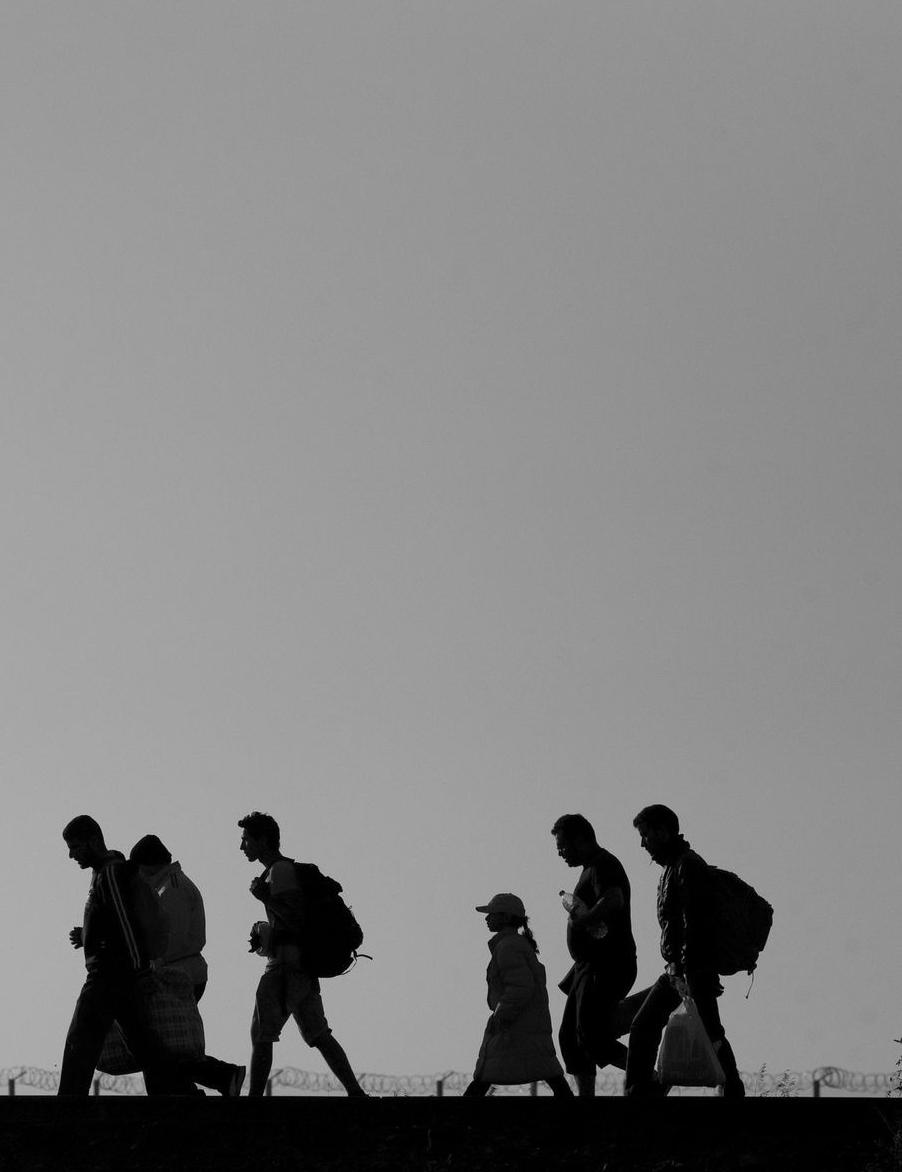
Since they are in very insecure conditions, to overcome their tragic reality, one of the best ways is to maintain a stable mental state, to have hope. Hope is a positive force since it helps people expect something good to happen. Hope reduces feelings of helplessness and stress and increases happiness. Positive expectations are a self-fulfilling prophecy which helps people anticipate that good things will happen and they start to think and act positively. When people have no hope in their future, they lose the reasons for trying to live a better life which may even lead to suicide. However, if people trust their future, helped by hope, they gain energy and motivation to try their best. The Global Compact on Refugees organisation, supported by the UN Refugee Agency, has interviewed a refugee from Syria, Nidal Battman. He said, ‘We have lost so much in the war but not our dreams and hopes.’ Part of the reason why he survived is that he had not lost hope.
In conclusion, hope is essential for refugees. Even though hope may not seem as necessary as other physical factors do, hope has a special power to save refugees’ lives, giving them positive energy and force.
This semester, the theme of Hope was selected for the overarching topic of Islander articles. Hope can introduce a handful of topics, the more prominent ones coming to mind being ‘the negative side of hope’, ‘application of hope to reality, in the case of economic depression’ and such. However, when I first heard the prompt, to me the topic seemed like an infinitely philosophical question. Hope is a value that can be interpreted in so many ways and is so vital in human life that many philosophers couldn't refrain from taking a trip through it. Not least of them was Immanuel Kant. Active during the 18th century, Kant is well known for his important role as one of the enlightenment thinkers. He was neither an empiricist nor a rationalist. Rather, he strived to take account of both perspectives in his thinking. These efforts are shown through his argument for hope, a very human emotion based on, according to his words, logic.
Primarily in conventional philosophy, hope as an idea was treated as something similar to passion. It is depicted as an almost magical emotion, appearing in mythology often as the key to the protagonist's hardships. Famously in Pandora’s box, it was hope that was left to serve as humanity’s last defence. After Pandora has opened the cursed box filled with negative powers, all the evil was unleashed upon humans: carnivorous beasts, diseases and even emotions like hatred and jealousy. Greeks believed that the reason humanity was able to hold against such hardships in life was that Pandora left the element of hope in the box to be kept. For me, it seemed evident that the named hope left in Pandora’s box would be one of a positive nature, the power that lets people march through hardships in life. For example, the kind of emotion depicted in Disney movies with grand theme songs and protagonists raising their fist. This story is reflective of the most widespread view on hope both before and after Kant’s intriguing
argument. Hope was, for most, that which powered their daily life. It could never go wrong with having more and brighter hope for the present and future. The element of hope was understood as something bestowed upon us by gods, a present. And because it was derived from the higher powers, we didn’t need justification in hoping for something. This view is a much gentler idea to mull over, in my opinion at least, to think that your hopes come from some divine beings instead of your rationality.
Kant thought hope was something more similar to plans rather than dreams. While the Greeks’ version of hope assigned the role of giving hope to gods, Kant thought it is and must be ourselves that gave such emotions to ourselves. He went further to say that these hopes should strictly be based on facts and logic. The most knowledge to gain here is the idea about “what may I hope”. To introduce a bit of Kant’s general claims, his philosophy can be summarised into three questions: “What can I know? What must I do? What may I hope for?” The very word “hope” is included in his three questionnaires.
Kant thought that an ideal process of gaining hope should go as such: A person should first find out the list of things they ‘know’. This does not mean they should list out the number of philosophical books they have read, or anything of a testing variety. Rather, it means the person should be fully aware of their abilities without bias. Then, self-awareness can help people realise their responsibilities, the things they ‘must do’. After processing all that information logically can one finally find the answers to the question of ‘what I may hope for’. According to Kant, things such as false hope and the pain we feel because of it is all self-inflicted. The difference between his view and that of the Greeks can be observed by looking at an ancient myth regarding Sisyphus’ punishment. Sisyphus was a Greek man who got himself into trouble with the gods. Spiteful,
the gods sealed him in an eternal hell with a severe punishment: he was to roll a huge boulder uphill and uphill, and when he did manage to make it to the top, some unknown force would push the boulder downhill again, for him to infinitely redo the meaningless labour.
Kant once said that “Rules for happiness (are): something to do, something to love, something to hope for.” Although he believed in the effectiveness of logic, one of the many philosophical answers Kant was looking for might have been the most simple and close one, the way to living a happy life. The philosophy at its core is the same as Kant, it all started from people asking basic questions in life and mulling over how to wisely get past their current predicaments. In this point of view, the position philosophy held in ancient times and holds now might not greatly differ from the role of religion and science: a source of answers to our lives. Now when we ponder the meaning of hope in our lives and the ancient understanding of the concept fails us, maybe we can reference Kant as our new point of entry.
By Inseo Youn, Year 13, Halla Edited by Yoonkyo Kang
I would like to ask you, the reader, to open any science or mathematics textbook and spot as many female figures that have contributed to the field as you can. Often glossed over and unrecognized, just like any other woman in STEM, Ada Lovelace was the first computer programmer of our time.
Born as the only legitimate child of Lord Byron, the famous Romantic poet, Lovelace was shunned by her father because she was not the ‘glorious boy’ she expected. However, Lord Byron insisted her daughter receive a high quality education. Lovelace was not to take any interest in literature, because Lady Lovelace thought insanity ran in Lord Byron’s family and did not want her to follow in her father’s footsteps. This forced Lovelace to focus on subjects like mathematics and science. She was known to be very talented in those areas, so much so that Charles Babbage invited Lovelace and her mother to see the small-scale versions of the calculating machine he was working on called the difference engine.
Babbage was a mathematician and mechanical engineer who is credited with the invention of the first computer. Upon examining Babbage’s difference engine, Lovelace was inspired by his prototype and became his lifelong friend. Lovelace went on to support him with his invention of the analytical engine. The analytical engine was a complicated calculator that could save previous data and memory. In the heart of the modern computers’ framework, this model can be found as a foundation.
Several years later, in October of 1843, Lovelace independently published a translation from the French of an article on the Analytical Engine by an Italian engineer, Luigi Menabrea, to which Ada added extensive notes of her own. The Notes included the first published description of a stepwise sequence of operations for solving certain mathematical
problems. Lovelace’s notes made it clear that she understood the Analytical Engine as well as Babbage did. She suggested the data input that would program the machine to calculate Bernoulli numbers, which is now considered the first computer program. The Brenoulli numbers could be used for summing powers of integers, evaluating the zeta function, finding asymptotics of Stirling's formula, and estimating the harmonic series. This was a significant step forward as Lovelace was able to incorporate musical scales with computers and therefore make making sheet music easier. She also recognized the difference between the details of the computing mechanism and the logical structure of the Analytical Engine, on which the article she was reviewing dwelt. She noted that different specialists might be required in each area, something Babbage failed to see.
Though Lovelace is often referred to as the first computer programmer, some biographers, computer scientists and historians of computing claim otherwise. A large number of biographers, computer scientists and historians critiqued Lovelace on her contributions. Historian Allan Bromley notes several dozen sample programs prepared by Babbage between 1837 and 1840, all substantially predating Lovelace's notes. He claims that Lovelace’s work is merely a ‘simple introduction’ to Babbage’s designs that were in preparation. Doron Swade, a specialist on the history of computing known for his work on Babbage, discussed Lovelace during a lecture on Babbage's analytical engine. He explained that Ada was only a "promising beginner" instead of genius in mathematics, that she began studying basic concepts of mathematics five years after Babbage conceived the analytical engine so she could not have made important contributions to it, and that she only published the first computer program instead of actually writing it. In a modern perspective, it seems as though Lovelace was potentially targeted for the
fact that she was a female scholar in the then predominantly male field. However, it should not be dismissed that Lovelace was one of the many women who paved the way for female
Today, Lovelace is an inspiration for many women in STEM all round the world. Ada Lovelace day, the second Tuesday of October, is a day where we celebrate and raise awareness of the contributions of women to STEM fields. Given the still-considerable difficulties women face in the sciences, it’s easy to forget how much change has come since Lovelace’s time. But contributions made by leading women in STEM makes it easier to imagine a more equitable future.
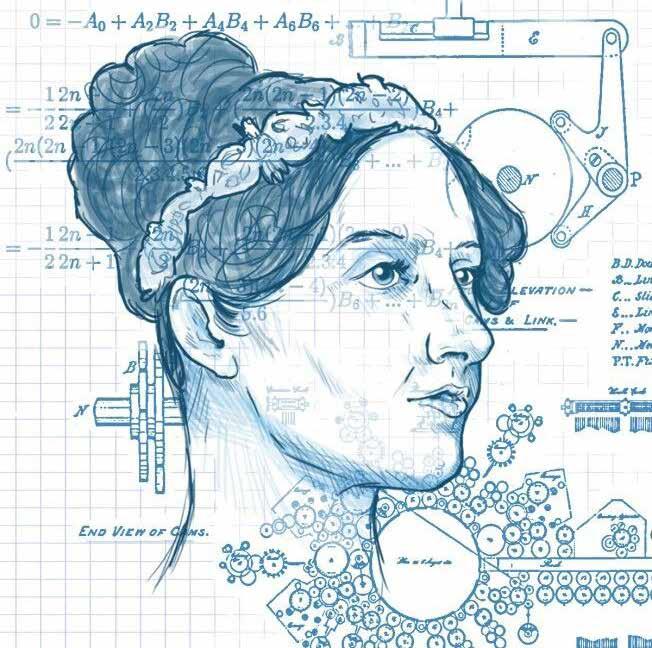 By Jaeyoung Chung, Year 12, Halla Edited by Cindy Ryu
By Jaeyoung Chung, Year 12, Halla Edited by Cindy Ryu

Can anyone define what hip hop is? This is not a right-or-wrong answered question, as there is no exact answer. However, if we give them the most suitable definition, it could be defined as the culture that has risen with the purpose of addressing hope out of harsh situations people experienced. Hope is the willingness to make certain aspects of life happen or change. Hiphop hence is the culture that can motivate people to build up their aims in terms of developing their situations. Although there were a few exceptions, it is a notable fact that the main artists around hip hop culture were the black community and the people who contributed the most in the construction of hip hop culture were black Americans.
Historically, in the USA, racism from the white majority against other races has always existed, and it still remains as an unresolved topic. The existence of racism, especially against the black community, can be traced back through to the USA’s reprehensible history of slavery. Although the law on abolishing slavery was introduced, the impression of black individuals as slaves or as lower status people still remained due to the bleak history of slavery. This led to the white people to treat the black people harshly, even after slavery was officially abolished. The American government itself consolidated these stereotypical thoughts. For example, even after the slavery was abolished as the 13th amendment in 1865, the Jim Crow laws were introduced and used until 1960; the law of segregation separated black people from interacting with white people in restaurants, bus stations, or public services. Because of these facts, black people always feared about the society, and they could not even believe the police around the region, as police employed were mostly white. This made some black artists stand up and address the reality of the social situation that put pressure on them, to actually give some hope to their community that they can also stand up and share themselves as humans.
After more than 30 years since hiphop music was created, in terms of genre, hiphop music has now developed as a mainstream genre. It is safe to say that hiphop music has occupied the billboard top 100 chart, and it is a difficult task to find songs that are not categorized as hip hop. As hiphop music has grown, disappointingly, many hip hop artists are writing music that mainly focuses on the popularity rather than the message. However, there are still a few artists that address serious topics such as racial segregation and social movements, which acts as a tool to give hope to hip hop. For example, “This is America”, the famous song created
by Childish Gambino, addresses the truth behind the American society where segregation against the black community still exists while trying to look like they respect the black community. In the lyrics of the song, the phrase “This is America” is repeatedly getting mentioned, when the artist in the music video shoots a gun. This shows that mass shootings are still a big problem in the American community, and the people should not avoid this. By directly addressing this, the song is giving hope to the people who are exposed to these environments, addressing the message that there are still people who are aware of those situations and putting effort to resolve it. Furthermore, the song called “The Bigger Picture” by Lil Baby, is the song released when the Black Lives Matter movement was reintroduced after the George Floyd incident. Throughout the lyrics of the song, the artist wanted to address the message that many people including himself, a massive influencer to the society, is standing alongside the BLM movement, and persuade more people to join the movement, using their fame. One of the lyrics of the song “They killing us for no reason”, directly includes the criticism against the white police that were involved in the incident. The fact that the song was performed in the 63rd Grammy awards, a really influential music award in the world, is significant, as it is giving hope to the people in the movement that their voice is being heard overseas.
Not only for the black community, for every person living in the 21st century, as there are lots of many different depressing incidents, hope is an important figure that is needed. Furthermore, hiphop music does not target only the black community, but the general people that need hope, too. Their lyrics can be applied to represent many different situations around the world. Hiphop culture is hence the culture of hope.
By Lucas Shin, Year 12, Halla Edited by Ashley KooRegardless of gender, age, background, culture, ethnicity, or physical ability, everyone around the world plays or watches sports. By celebrating athletic stars, or even just playing sports in school evokes an atmosphere full of passion as people are all cheering with one heart. I strongly believe that sports give hope to children. First, sports provide children an opportunity to dream. Secondly, sports help guide children to a sense of belonging and acceptance regardless of their skills . Finally, children learn a valuable lesson: to continue striving toward a goal even though it is challenging.
I believe that many of you will have experienced academic stress. Everyone will have encountered situations where they have to compare their academic results with those of their friends. Most students feel they need to receive perfect results and get straight ‘A’s. However, sports have different standards; it gives hope even to those who didn’t have a chance to shine and stand out compared to peoples’ expectations. When playing sports, people can enhance their mood as sports provide an opportunity to elevate their own positions. In addition, playing sports creates a positive impact on students' academic performances too. While people play sports, they learn to continue to strive toward the goal, even though it is challenging. This technique helps to determine the goal within it is difficult. Furthermore, sports teach people very valuable skills. According to Inspiresports, “Sport teaches tenacity. The ability to fail and learn from the setback and move forward is a vital life skill. Learning that failure is not the end, but part of the learning experience has far-reaching implications, affecting our self-esteem, our resilience, and our mental agility.” Sports lead to these abilities, which are essential for success when people reach out to larger societies.
Many people who despise sports tend to be introverted. They would rather spend time alone
than socialise and participate with others. They claim that when they play sports, instead of feeling more energised, they rather lose their confidence. However, I disagree with this statement. Rather, it is a chance to change their shy personality. The primary benefit of sports is that people work together with the same goal. Teammates share the joy of victories and the sorrows of defeats together. Individuals who are introverted benefit from this - they can be more enthusiastic, understanding and compassionate individuals. According to Dr. Joann Lukins, “Sport is a great vehicle for teaching and developing qualities within children. Some of the many benefits of sport is its capacity to develop self-esteem, regulate behaviour and habits, learn leadership and communication skills, learn patience and resilience when things do not go as planned.”
Furthermore, sports dissolve barriers of gender, status, race and religion in school, towns, and all throughout the world. To talk about my own experience, when I first came to NLCS, I struggled with making friends. However, by playing sports together in PE classes, house competitions and the boarding home, I started to make new friends and socialise. From my experience, I started to believe that sport is the best way to interact and make friends quickly. Also, even just supporting the same team can help you converse with others.
To finalise, sports provide children an opportunity to dream, be inspired, and learn vital skills. When playing sports, people gain support from audiences or teammates and they feel joy and excitement. Such extreme happiness can only be felt while playing sports. Sports, on the other hand, teach people life lessons such as teamwork, perseverance, and handling fear and failure. There is no right or wrong in sports, no matter what people do. Well then, what about playing sports when you need hope?
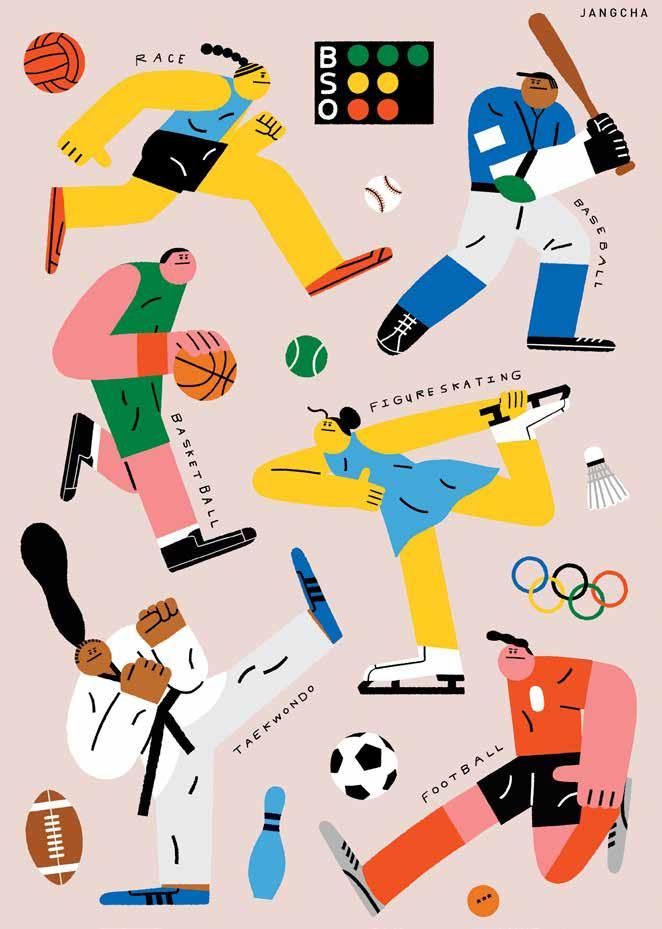
Almost two years have passed since the notorious COVID-19 stopped our world in its tracks and took over our lives. As we transition into a new era accompanied by the fourth industrial revolution, our troubling situation has made us more perceptive of everything, value-judging good and evil. We have been given a chance to reassess and realign ourselves, our values, and our beliefs to improve as human beings. Through this chance given, we realised that life is meant to be appreciated and treasured. Art has held great value in human society for millennia; it has only grown in value during the contemporary era, as society has reached for new sources of hope during a period of great uncertainty.
One area of human life that has been heavily influenced by the pandemic is the arts. In particular, visual and performing arts have been negatively affected by the lockdowns. Contrary to these sieges, the field of arts has used its creativity to find various means to progress. Artists reach their audience by utilising digital space in the virtual world. Galleries and museums began to create virtual tours and exhibitions. Archival footage of films, musicals, concerts, theatre plays, and ballet performances are also being screened online, often for free. These digital platforms enabled artists to flourish despite the status quo. Workers in the arts industry, mainly the production staff, have shown extraordinary resilience too. Proportionately, the public is showing growth in terms of appreciation of the arts. People are surviving through this pandemic with the arts, for instance, by viewing Netflix or YouTube, listening to music or podcasts, gardening, viewing online art pieces, or even learning crafts. Art is all around us, and it is making life more bearable.
"Art is the highest form of hope," said the German painter Gerhard Richter in 1982 for the catalogue text at the Documenta 7 exhibition. The unadorned appreciation of beauty is not something Richter finds a great deal of within today's contemporary art world. The painter himself reaches for a quote from the great 19th and 20th-century German novelist Thomas Mann to explain this later trend. "He said, "art will change completely. It will shed all its gravity and transform into something merry and democratic.'" Richter says. "That is a nice quote. We are actually going beyond that these days. It is now more than merry. There has never been so much art around us."
While artists persevere and continue to pursue their passions in art, it is up to the audiences to admire, consume, and even support these art platforms. The audience is meant to play an active part in furthering the arts and culture because it ultimately shapes identities, boosts well-being, records time, preserves history, and puts pride in the way of life. The intrinsic value of culture and the arts illuminates our lives and enriches our emotional world. The willingness to do art is there. As a matter of fact, artists keep on producing and are more proactive today. The only thing left is support for these exceptional individuals. Without artists, art would not exist in the first place. Their artworks not only reflect the state we are in right now but also serve as inspiration to keep on fighting and a beacon of hope that there is a better life ahead.

Invention has been an area where development has been happening the quickest in the last 40 years. Every aspect of our lives, from health to accommodations and quality of life depend on how advanced inventions are in the area. Look at the 1980s, where revolutionary inventions were CDs and Personal Computers, all to a standard where the screen is tiny and gives a feeling of instinct rejection to the green and black classic writing. The common sources of entertainment we think of now (e.g. the internet, phones and computers) were considered to be science fiction back in those days. Invention has been in the spotlight in the last 40 years, so its growth was exponential, but how were they able to grow so rapidly? What hope did the inventors of the past see in their inventions?
The 1980s was a hopeless time: in the early 1980s, a severe recession hit the world, affecting the global economy. The 1980s recessions were triggered by tight monetary policies in an effort to fight mounting inflation. Unemployment still existed before, specifically in the 60s and the 70s, and economists thought that those unemployment rates could possibly be lowered by inflation. (Tradeoff known as the Phillips Curve) Oil prices sharply rose in the early 1980s, and pushed inflation into many advanced countries to almost double its current value. Countries increased interest rates in order to control inflation, and unemployment hit its peak in 1982. Producers of goods accounted for only 30% of total employment at the time, but they still suffered 90% of the total job losses. Major countries like the US and Japan managed to control their economy to a certain extent and end the recession in 1983, but unemployment still afflicted the people. Unemployment rates at the time of the recession were even greater than at times of the Second World War. During these harsh times however, a hopeful spark called the ‘internet’ had been ignited.
In the new year of 1983, the ‘Internet’ was born. Before then, similar concepts were still used, in the name of ARPANET (Advanced Research Projects Agency NETwork), but only in the U.S. Military. January 1st 1983 was when ARPANET changed its communications protocol to Transfer Control Protocol/Internetwork Protocol (TCP/IP), so normal computers on different networks could communicate with each other as well. Communication was done either by radio or telephone, which were not the most ideal methods for transferring information. There are indeed many other reasons why the internet was made public, but one of them is the improvement of communication. Public transformation of the internet allowed scientists, researchers, institutions, and businesses to share information very quickly and efficiently compared to the analogue methods used in the past. But it didn’t stop there. The network grew from 2,000 hosts to 30,000 hosts, and the popularity of the email exploded. People could now send messages to each other, and send files and data. But the internet was a new concept back then, so professional knowledge of computers was still needed to use the system effectively. By the 1980s, all basic inventions needed for daily life such as electricity and light had already been invented almost a century ago. Inventions at this period were not aimed to aid life, but to boost the quality of life and make them entertaining and comfortable as possible. The hope that inventors sought for was to create a life that everyone could enjoy without much burden and as convenient as possible.
What other things were made at that period of time? One of the most well known and representative inventions was the disposable camera. Cameras are inventions that provide people with entertainment, or could improve their hobby or leisure life. Disposable cameras are cameras that come with either colour or black and white film loaded on it. Except for a built-in flash, a disposable camera does not have any other
additional adjustments like exposure or focus. The name comes from it being made from simple materials like plastic and cardboard to reduce making costs, to only 10 dollars. The camera is also supposed to be disposed of after one use. It's very easy to handle and operate, making it easy for any common person to use the camera. Of course the photographs that were taken at the time weren’t what we would call high quality. But people didn’t care. Photography was black and white, and rare before the 80s. From the 1980s, the cheap price of the camera made access to photographs with colour easy resulting in a boom in its popularity. Again, the inventions were to make what were ‘experts only’ into something easily accessible by all people with a reasonable and easily affordable price.
There are indeed inventions in the 80s that were much more serious, like the artificial heart. But the 80s was an era where people started enjoying their lives, instead of putting the burden of work on themselves. Inventions made then would need to fit to adapt to the people’s needs. What the inventors had in mind were more inclined towards the commoners. The hope that the inventors saw here was that aiming for the common people and to fit the rapidly changing world where people start enjoying their life is the answer. The economy was swaying in the early 80s, but it soon became stable. People's need for materialism and consumerism were increasing, and inventors needed to fit those needs
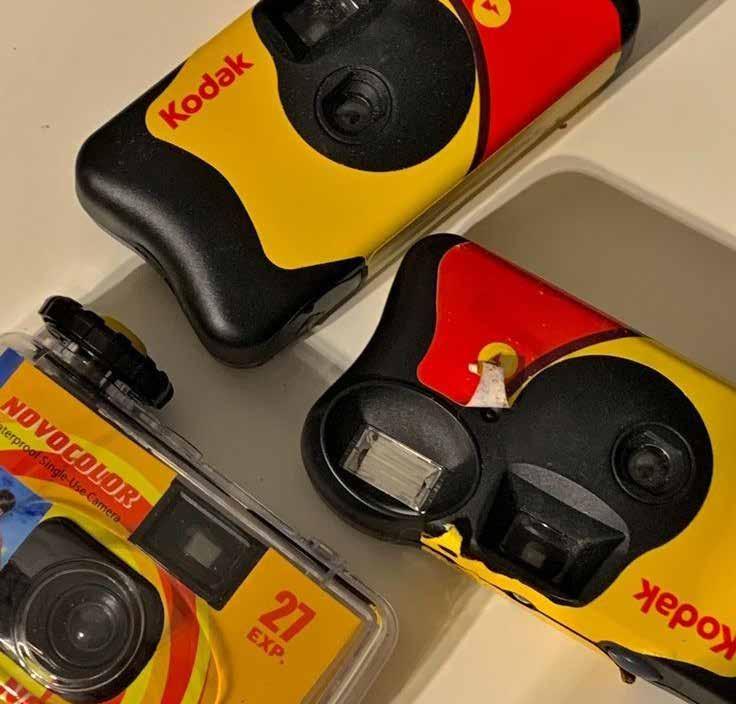
 By June Kim, Year 11, Jeoji
Edited by Injoon So
By June Kim, Year 11, Jeoji
Edited by Injoon So
Everyone hopes. At the turn of the year, we make our New Year's resolutions, hoping we will achieve goals, hoping we will become better people.
However, hope is not just one of the many simple emotions we feel every day. Hope is powerful, and the power of hope appears especially in the processes of recovery from mental illnesses, such as addiction to drugs. This article introduces the importance of hope in recovery and ways to find hope and develop it into action.

All changes start with motivation. Likewise, a patient needs motivation for a recovery, and hope plays a significant role in driving them forward. Hope gives patients a belief that things will get better and that they have the ability to improve things. Hope not only keeps a recovery strong when challenges come, but also gives a sense of joy and accomplishment as patients with hope know tomorrow will be better than today. Motivation leads the patients to the ‘action’ stage, where patients take meaningful actions based on the feeling of ‘hope’ that will constantly guide them through the process.With the feeling of hope, they try their best to overcome struggles during the process. The actions patients take leads directly to recovery. According to one wellbeing center “sage”, hope is like a lightswitch in the dark. It is hard to find a lightswitch in the dark and turn it on, but once it is tuned on, it lights up the whole room. Likewise, once you find hope, despite its hardships, you are very likely to light up yourself.
So, the most important question: how to ‘find’ hope. No matter how powerful hope is, the most essential part of this whole process is to find hope, so that it actually starts the cycle leading to recovery. There are a variety of ways to find hope and I would like to introduce a few of them: making social relationships, making micro goals, and finding new hobbies.
Building healthy relationships with people has a positive impact on people in recovery. Healthy relationships help people be successful during the recovery process and foster personal growth. They add value to people’s lives, which provide people with motivation and energy to endure the hardships they experience. However, it is important to make a healthy relationship that supports recovery. It should be built based on trust, caring and respect
Another way to keep hope alive is to make realistic goals. Unattainable goals often discourage, so it is crucial to make attainable goals each week. Trying to keep those goals keeps people motivated
and leads to achievements. When people actually achieve the goals they have set, they feel they are making progress, which provides them with a more positive outlook of their future. Starting from small goals and achieving those may eventually lead them to aiming for bigger goals, which will create a bigger sense of achievements and satisfaction when those are achieved. This not only helps people improve themselves, but also motivates them to continue their lives positively.
Finding new hobbies is essential as it prevents people from falling into boredom and an idle mind. Engaging in new hobbies allows people to be distracted from the seemingly endless patterns of negative thoughts. Since patients are especially vulnerable to negative thoughts and getting away from those cycles are important, new hobbies will give patients a healthy distraction and a mental break.
In conclusion, hope is an essential part of the recovery process as it helps people during the recovery process. Therefore finding hope is an essential part of the process, and there are several ways including making social relationships , making micro goals, and finding new hobbies.
 By Ian Yoon, Year 12, Halla Edited by Chloe Park
By Ian Yoon, Year 12, Halla Edited by Chloe Park
People gain hope when watching sports and supporting their favourite teams. When passionately supporting a speci c sports team, people devote all their leisure time. is social motivation to support mostly comes from the hopes that they gain whenever their team wins; supporters consequently wait for their next games in the hope of another win. From here we can see how hope exists in sports and how they in uence people’s motivation for supporting clubs. In this article, I will focus on the denition of hope and how it is actually applied in sports.
First of all, hope is a very vague yet explicit way of showing positive emotion. e basic de nition of hope is a feeling or expectation that a certain thing will happen. is uncertainty in uences people’s mindset and since nothing is xed, they can go through a positive thinking process ending up in a hopeful situation. Here comes another question: “What shapes
hope?”. People o en gain happiness from small things in their lives. is term hope sits in the middle of people’s hearts and is the basis of happiness. Hope allows us to expect positive things for the future and this future expectation is the fundamental reason why people can be motivated to live their lives. People all have their wants and needs to satisfy and ful l their goals, in the process of gaining these wants, hope is involved as a positive motivation. Hence, hope is shaped by people’s positive mindset towards the future, with the people’s wants and eagerness to reach a certain goal. is hope is closely connected to sports and is one of the main reasons that sports are popular among people. sports are Hope is crucial to fans of football, and a particularly useful example is the Premier League. England is famous for the extremely eager and passionate supporters of football. ey are very keen on every single match and the performance of the supporting club has a
huge in uence on people’s daily lives. ere is a documentary called “Sunderland till I die” where it shows the strong passion in the supporters for the football club Sunderland. Even the title itself shows the strong interest from the supporters to the club and their support is mainly based on the hope of winning and getting into the Premier league eventually. Especially, if you watch the documentary, many of the fans work hard during the day and release their stress in the stadium or at pubs watching the matches. Football gives hope to people who are quite busy with their daily lives and their cultural background heavily a ects the degree of hope. Sports give opportunities for people to stay away from their worries and thoughts and only focus on the matches. In addition, every time before the season starts, there are transfer markets where players get traded and sold. Whenever a new player or something traditional in the club changes and gets renovated, people have hope that the club will be developed further and perform better than the previous season. ese hopes accumulate on a daily basis, and this drives the motivation of people to support their football clubs more eagerly. Hence, it is evident that in the case of football in England, most of the club supporters have fundamental hopes and to look forward to the future matches.
Hope also plays a signi cant role in other sports, such as marathon.and lovely stories behind the race. Marathon involves many participants running through the entire race and this sport, the ranking doesn’t matter, the ability to nish the race matters. en how was hope conveyed through the marathon? One famous example is a story of Terry Fox ,a Canadian born athlete, who had faced leg cancer during his life. Even though he had his right leg amputated, he still managed to nish the race and also achieve his dream which is to run from east to west across the nation. By doing so, he succeeded in raising money and awareness for cancer research. From Terry Fox’s story, many people globally saw hope in their lives and especially for those who were struggling from diseases. erefore, not only in football but also other aspects of sports such as Marathon have rung people’s hearts.
Overall, sports give hope to people in many di erent ways. One famous example was football and its sports mechanism which decides the winner and the loser drives the force of hope. Moreover, as shown in the Terry Fox run, other sports can also touch on people’s minds and they all contain meaningful stories behind giving hope to others. Hence, sports are an e ective tool to give hope and convey positive messages to society members.

Sudden changes in technology are bringing on an immense impact on our society. We hold the potential to handle and comprehend technology, however, in this current state, we should remind ourselves about the signi cance of inherent human ability.
Humans have irreplaceable capabilities such as emotion, self-awareness, and empathy amongst other traits. ese are the abilities that only humans are capable of doing while machines aren’t; therefore, it is necessary to perceive one’s emotions and practice self-awareness. Current society and organisations focus on each individual’s potential and manpower management.
Luthans, a management professor specialising in organisational behaviour, and other scholars stated that positive psychology consists of the following elements; e ciency, resilience, optimism,
and hope. ese four elements assemble and interact with each other to nally form a positive psychological capital, based on Hobfoll’s psychological resource theory. According to the research, Luthan’s positive psychotherapy is a relatively new therapeutic approach, in uencing numerous diagnoses and treatments. is new approach contrasts with standard treatments for depression, as it uses positive engagement, rather than directly targeting depressive symptoms.
Among various psychotherapies, the placebo effect is probably the most well-known. e placebo
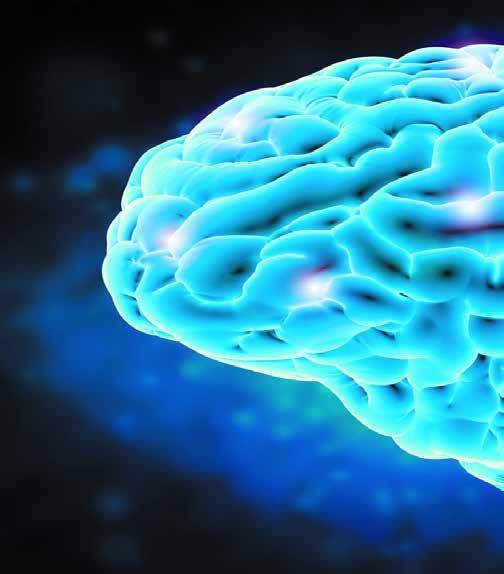
therapy is based on a theory of positive psychology, convincing the patient’s body that the fake treatment applied is real. Placebos can result in various changes; an altered brain set and behavior, reduced anxiety, etc. Moreover, taking a placebo reduces stress and makes one feel better, producing
endorphins, the body relievers that can boost one’s mood. ese help to relieve pain, reduce stress, and improve a sense of well-being. Placebos may also motivate people to take care of themselves, linking the human brain to an increase in dopamine and opioid receptors, chemicals involved in the brain pathway of reward and motivation.
Positive psychology enhances one’s quality of life and simultaneously improves satisfaction with work. It has a massive impact that it’s also used as a method of therapy: psychotherapy. ese contribute to human development and the power to overcome adversities or negative emotions. Positive psychology is becoming an outcoming paradigm, coming up to prominence.

 By Hyeonah Joh, Year 13, Halla
Edited by Joo Hyun Kim, Year 12; Halla
By Hyeonah Joh, Year 13, Halla
Edited by Joo Hyun Kim, Year 12; Halla
Global inequality remains one of the most important unresolved issues for humanity. While the billionaires ride private aeroplanes and buy remote islands in America, people still su er from polio in Africa. Polio can easily be prevented with four doses of IPV vaccines that cost a mere 0.1 to 0.2 USD per dose (UNICEF). According to the United Nations, 931 million tonnes of food is thrown away per year (McCarthy, 2021). e wasted food could have saved many of the 9 million people who die from hunger every year (World Food Programme, 2021). In a world of so much wealth, we seem to be unable to distribute resources e ectively to make a better world for everyone. According to the 2022 World Inequality Report, “the poorest half of the global population owns just €2,900 (in purchasing power parity) per adult, while the top 10% owns roughly 190 times as much.” Moreover, the richest 10% take 52% of all income, whereas the poorest half take only 8.5% (Stanley, 2022). So what have we done to deal with this extreme level of global inequality?
One way nations and international organisations attempt to reduce global inequality is through providing foreign aid. Foreign aid is de ned as “the international transfer of capital, goods, or services from a country or international organisation for the bene t of the recipient country or its population” (Williams, 2021). We o en see foreign aid with a positive perspective and believe that it helps create a more equal Earth by redistributing income and giving hope to recipient countries.
One way nations and international organisations atempt to reduce global inequality is through providing foreign aid. Foreign aid is dened as “the international transfer of capital, goods, or services from a country or international organisation for the bene t of the recipient country or its population” (Williams, 2021). We o en see foreign aid with a positive perspective and believe that it helps create a more equal Earth by redistributing income and giving hope to recipient countries.
However, a er decades of foreign aid, many impoverished recipient countries continue to remain poor today. Had foreign aid been an e ective policy, should it not have brought more countries out of poverty and reduced global inequality signi cantly? is led me to question whether foreign aid is truly a source of hope for the developing countries. us, in this article, I aim to explore the e ectiveness of economic foreign aid. rough this exploration, I will answer the question: does foreign aid create hope for the recipient country, or does it merely perpetuate hopelessness under the veil of progress?
n the developed west, the popular argument is that foreign aid creates hope. Many believe that foreign aid is the key to reducing global inequality. On average, wealthy countries devote 0.3% of their GNP to foreign aid, assisting poor countries (Ingram, 2019). Allowing for the redistribution of income from wealthier countries to poorer countries, this creates hope by li ing people from poverty and opening up new opportunities. Andrew Berg, an economist at the IMF’s Research Department, said in an interview with the IMF in
2010 that foreign aid allows countries to use their scarce resources to produce goods and services for the domestic market (IMF, 2010). ese resources allow countries to make more investment and promote economic growth, bene ting the natives with greater economic activity in the process.
However, there is also an argument for the case where foreign aid creates hopelessness in developing countries. Arvind Subramanian, an economist with the Peterson Institute and the Center for Global Development, points out in a 2010 IMF interview that there is no strong evidence that foreign aid leads to economic growth in the real world. He argues that true hope and sustained development can be achieved by giving an opportunity to countries to build domestic institutions without the help of foreign powers(IMF, 2010).
When developed countries and international organisations provide resources to developing countries, the receiving countries are o en forced to adopt the ways of the lending countries, which are o en the wealthy of the Western and Northern hemisphere. For example, structural adjustment programs (SAPs) by the International Monetary Fund (IMF) force countries to implement austerity measures. Under the SAPs, governments have to reduce spending on social welfare such as healthcare and education, which creates a hopeless situation by exacerbating problems such as poverty in the receiving countries. e SAPs are also used as a tool of neo-colonialism, opening up developing countries to exploitation. Again, this creates hopelessness as the human and natural resources are stolen from the developing countries at cheap prices, leaving nothing for the developing countries, who are the true owners of the resources, to use.
Simply supplying manufactured goods through foreign aid can take away the incentive for countries to gain skills in order to invent and innovate for themselves. A better way to create hope through foreign aid would be to provide the raw materials and training systems that allow for developing countries

to extend into the secondary sector; this would create hope for sustained development and a potential extension into the tertiary sector. Foreign aid also robs receiving countries of the opportunity to nd their own style of innovation and development that suit their own, and not the western, needs and wants which can additionally lead to hopelessness in receiving countries by oppressing their culture and identity, and forcing them to conform to the lending countries.
It is also important that foreign aid gets spent on the right things. When foreign aid goes to autocratic and corrupt governments, they can use the aid to ful l their own interests,get involved in embezzlement, or distribute funds ineciently, with the ultimate goal to secure a voting base to get re-elected (Finckenstein, 2021). is perpetuates corruption and can lead to greater inequality between the powerful and the powerless, creating hopelessness for the poor. It is also common for developed countries and global organisations to supply money directly to local allies rather than through o cial state bodies, making it even more di cult to tracknancial movements (Finckenstein, 2021). e global players using nancial aid for their own bene t instead of supporting development can exacerbate corruption and inequality in developing countries, ultimately leading to hopelessness.
In summary, foreign aid creates hope in receiving countries, but in reality it o en leads to hopelessness. eoretically, foreign aid should strengthen the domestic market of the receiving countries and reduce global inequality and poverty, creating hope for development. However, foreign aid is too o en used to ful l the political interests of corrupt governments, as a tool of neo-colonialism, and to disincentivise the developing countries from innovation and oppress culture, overall hindering sustained development. Hence, it may be time that we question whether the current system of foreign aid is as benevolent and e ective in creating hope as we believe them to be, or if it is simply a way for western superpowers to maintain the status quo of hopelessness in developing countries and continue to hold power in the global economy.
Now, I am rst going to talk about the most obvious fact about hope. Why is hope important? It contributes to our well-being and happiness and motivates positive action. Hopeful people believe they can in uence their goals, that their e orts can have a positive impact. Hope isn’t denial. It doesn’t ignore the real challenges, it doesn’t ignore the trouble, make excuses, or deny the danger. It is acknowledging the truth of the situation and working to nd the best way to cope. It’s showing up and working through the hard stu , believing that something better is possible. It’s resilient.

People tend to think that the future is a separate time a er the present. e future is not a scheduled time that comes indiscriminately. People plan in advance before a moment in the future comes. ey prepare for the future by dreaming, some picture their future in misery, and some draw their life in a bed of roses.
eradication is unattainable. Being realistic, according to Eaves, Nichter, and Ritenbaugh, is a manner of hoping that allows people to examine and analyze their condition while remaining open to the possibility of positive change.
e second type of hope is utopian hope. is type of hope is a collective hope that collaborative action will result in a better future for all. e utopian hoper, according to (Webb, 2013), critically negates the present in order to assert a better alternative. Consider a political movement that e ectively articulates the hopes of a social group in order to broaden the frontiers of possibility.
e third is chosen hope. Hope not only helps us deal with the di culties of the present, but it also helps us deal with the uncertainty of the future. A critical or terminal sickness diagnosis, in addition to physical su ering, is a primary factor to psychological disorders and distress. Multiple reasons,
for the future that a person possesses at the most inner feeling. It’s created and propagated in the mother’s upbringing, in the religious experience, through knowledge or groundless belief in her destiny, from teachers, seniors, or from mass media stars, or from ideologies, propaganda, campaigns, etc. that organisations, countries, and societies create.
Many experiences and emotions can threaten hope. For example, hopelessness may arise when it is considered that the outcome of a situation can no longer be controlled. e greatest threat to hope is the failure to e ect the kinds of shi s that people want to see in their lives.
Support is also essential for the development of hope. While a lack of support can lead to isolation, discouragement, and a lack of motivation, a person who has a strong support network is better equipped to visualize positive outcomes.
spair” have, and it refers to the feeling of hope rising from a pessimistic outlook. Hope is thus more deeply related to pessimism than optimism. Where hope occurs is not where the idea that the future will be better than it is, but rather where despair, frustration, or disappointment prevails. As Ernst Bloch is saying, hope must be disappointable.
True, optimism and hope share many aspects; both are concerned with a positive future outlook and both anticipate that pleasant things will generally occur in one’s life. e distinction is that optimism is a favorable attitude toward a future event that is likely to occur: the optimist believes that life will go as planned.
Being optimistic, on the other hand, is considered as more realistic. e optimistic person knows that life may not go as planned, but keeps a positive outlook on prospective outcomes
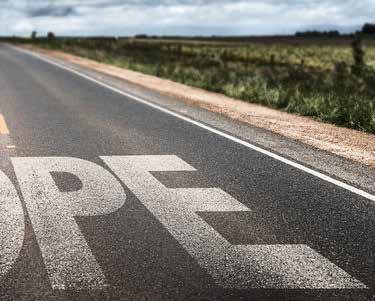
 By Edward Kwon, Year 9, Noro Edited by Victoria Park
By Edward Kwon, Year 9, Noro Edited by Victoria Park
Music was originally made to use in war. ere are some examples in war in which music helped or solved some lots of problems. According to the Ambient Mixer, music developed throughout war. For example, the ancient Greeks were also said to be led by autists who played songs in order to li up the military. is shows how music was used to li up the military and give them hope from the past. Also in World War 1, music played a big role. Music was developed variously to give hope to the Allies in lots of bleak situations. e patriotic songs that the military musicians played for the soldiers had two roles. First they gave hope and con dence to win the war. Secondly, they reminded the people why
they were ghting in the war. Also, music was used in other various ways. According to NPR, some sounds like screaming, gun sounds or vehicle sounds are used a lot in wartime and these are some examples of military music. ey use this because when it is war time the music gets the soldiers pu ed up. is is because in wartime, the tension goes up, people get scared even at a small sound. en when these kinds of music come out, it is not weird when the soldiers’ morale goes down. For example, there is a real incident that in World War 2, the British soldiers got scared because of these sounds and lost the ght with the Germans.
en how can music give hope to people? It is because music could help people mentally. Firstly, music could relax people and lower their level of stress. According to the AARP, the musical impact starts in the brain, where music activates many regions, including those associated with emotion and memory. e music that was played at your wedding,at a religious service, a dance you were at, or even at a concert you attended remains preserved for those neural pathways that connect that music with really positive feelings. is means that music could help you get the stress level down and think positively, not negatively. e same research also illustrates how music gives a positive impact on dopamine, which is linked to feelings of pleasure, and oxytocin, the so-called “love hormone.” And there is moderate evidence that music can help lower levels of the stress hormone cortisol. Secondly, music is good for making us happy. Especially in the pandemic situation, music helped us a lot. According to the National Library of Medicine, music is part of our life so it might have not been spotted but it helped us a lot. Usually the lyrics or the mood or the theme of music makes people feel sympathetic or empathetic about that situation or make
people happy. In the pandemic situation, lots of artists used these kinds of key factors to help lots of people feel. For example, they made lyrics about Covid 19 could be defeated to make people calm down. Also they made fun music to make the people and at that moment forget about Covid 19. Also when the people were sick because of Covid 19, it gave them hope to not get desperate. Like this music helps our mental health to give them hope on situations like the pandemic and making the level of stress lower which is impossible with other things.
en why is music so good for medical treatments? As I told you in the top, music is good for mental health so music could be good for medical treatments. But also music is used in helping the physical treatments. In some hospitals according to healthline, some hospitals use music to help people in heart health. is is because music can make you want to move and the bene ts of dancing are well documented. Scientists also know that listening to music can alter the Source your breath rate, your heart rate, and your blood pressure, depending on the music’s intensity and tempo. Because music helps with heart health, music is used to boost people in dance. In dance, you might think music is used because it cooperates with the dance more and makes the e ect of it boosted but there is another reason why music is used in dance. A 2020 research review con rms that working out with music improves your mood, helps your body exercise more e ciently, and cuts down on your awareness of exertion. Also because of these facts some athletes listen to high intensive, entertaining and fast music during warmups to perform better in the competitions. In addition, music is used to manage pain. In a research study, music therapists use music to help alleviate pain in inpatient and outpatient settings. A 2016 meta-analysisTrusted Source of over 90 studies reported that music helps people manage both acute and chronic pain better than medication alone. Like this music could x some wicked problems in physical health that even the doctors use sometimes.
Like these three key factors, music could help us solve some wicked problems. Firstly, music was used to help in war for two reasons. First using some entertaining and fun and hope giving music like ancient Greece and lots of modern countries do. However music is used also to give the opponents fear that they can’t win the war like the Romans did. Secondly they used music for mental health. It helped people to lower the level of stress and give people hope in pandemic situations and make their mentals calm down. Lastly music was used to cure physical health. It is used to boost exercise and make heart health better which the hospitals use a lot. So I think Music is one of the best way to give hope to people,especially for soldiers.


 By Daniel Lee, Year 11, Geomun
Edited by Minju Kang
By Daniel Lee, Year 11, Geomun
Edited by Minju Kang
Over the years, many animals have neared the brink of extinction, with some animals even being completely wiped from the planet due to human-induced threats such as mass hunting and poaching. An example of this is the Tasmanian tiger. e Tasmanian tiger, while it has the name of a feline and the shape of a dog, is a marsupial (A mammal with a pouch). e creature was poached for its exotic fur and eventually wiped o the planet. e case of this particular species kickstarted a movement of conservation efforts regarding already endangered species, and many animals are already recovering in mass numbers.
An example of this is the case of the European Bison. ese creatures were nearing extinction due to excessive poaching for their horns, but they have since made a recovery in terms of their population, as they have grown from 1,800 in 2003 to over 6,300 in 2019. is was the
result of conservation e orts. However, there were several e orts to bring back the European Bison, so what sets this one apart? Well, in past years, organisations created conservation areas in forests, but the problem with that was there wasn’t enough food for the species when winter arrived. But if you move them to agricultural land, there are bound to be con icts between the threatened species and the humans. To solve this issue, the IUCN SSC Bison Specialist Group decided to create an open meadow-like space to allow the bison to graze.
In March 2020, the southwestern black rhino, one of three black rhino subspecies, was reclassi ed from “vulnerable” to “near-threatened” by the International Union for Conservation of Nature a er its population increased more than 11%. is status change parallels a hopeful trend for all of Africa’s black rhinos. Although the species overall faces persistent threats from poaching and
is still classi ed as critically endangered, its population has climbed steadily since 2012. e continuous slow recovery of Black Rhino populations is a monument to the enormous e orts undertaken in the countries where the species occurs and a potent reminder to the world community that conservation works, even if Africa’s rhinos are by no means secure from extinction. However, it is also clear that there is no room for complacency given the continued dangers posed by poaching and illegal tra cking. With help from all around the globe, it is imperative that continuing anti-poaching actions and intensive, proactive population management continue.
One of the most endangered species in North America, the black-footed ferret, has also had a second shot at life thanks to the combined e orts of numerous groups over the past 30 years. e establishment of most ferret populations in areas with suitable habitat and the reduction of threats to the species were necessary to ensure the black-footed ferret’s comeback. Even if ferret habitat has drastically decreased since past decades, provided its quality and con guration are well managed, there is still enough of it. Most likely, State, Tribal, and Federal sh and wildlife and land management agencies will be in charge of its management along with private parties, such as landowners and conservation groups in some cases. Around 300 black-footed ferrets
are already present in North America thanks to recovery e orts; the ultimate goal is to reach 3,000. eir return to the wild is a sign that the grassland ecology, on which they depend for survival, is in good shape. anks to recovery e orts, there are currently about 300 black-footed ferrets in North America; the ultimate objective is to increase that number to 3,000. eir re-emergence into the wild is evidence that the grassland ecology, which is essential to their survival, is healthy.
A wide area of protected woodland in Uganda and the Democratic Republic of the Congo is home to an increasing number of mountain gorillas, a species that was originally believed to have gone extinct by the end of the 20th century, according to recent studies. With a population of 459 individuals, up from an estimated 400 in 2011, the 83,840-acre Bwindi-Sarambwe ecosystem in the Democratic Republic of the Congo and Uganda’s Bwindi Impenetrable National Park is one of two places on Earth where mountain gorillas still survive. Various organisations employed a variety of strategies to rescue these species, including enhancing the e ciency of protected areas, halting the illegal trade in gorilla items, and raising awareness of gorilla conservation among African local and worldwide communities.

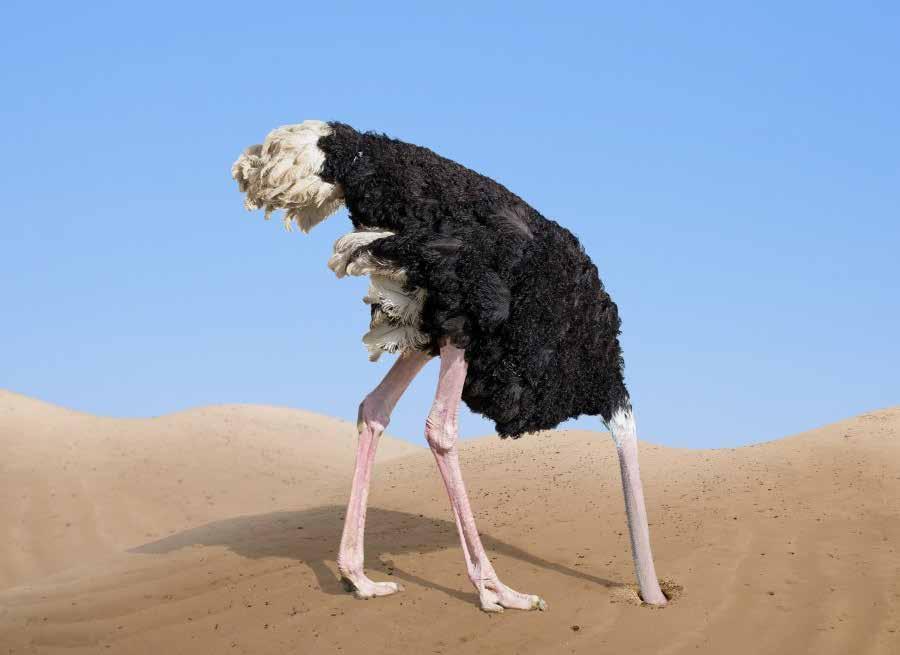 By Daniel Kim, Year 9, Mulchat Edited by Brandon Lee
By Daniel Kim, Year 9, Mulchat Edited by Brandon Lee
“Denial is the way people handle what they cannot handle.” is is a famous saying by Shannon L. Alder. Denial in simple terms is the conscious refusal to perceive that painful facts exist and it is one of the seven defence mechanisms. Another de nition is by Sigmund Freud, a famous psychologist who studied denial. A denial is when a person is faced with a fact that is too uncomfortable to accept and rejects it instead, insisting that it is not true despite what may be overwhelming evidence. Denial can give a positive impact but also a negative impact. In this article, I will explain Sigmund Freud’s denial model, the addition to his model, and the impact of denial.
I will explain the types of denial from Sigmund Freud’s model. He stated there are three types of denial. Simple denial, minimization denial, and projection denial. Simple denial happens when somebody denies that something unpleasant is happening. For example, let’s imagine that I got 1 in English for R4 grade. When I rst see the number, I doubt myself. I check if my eyes are working well and if my brain is working well. en, I see the grade again. It is still 1. And this is when simple denial happens. I cannot believe that I got 1 in English, but I want to think that my teacher mistyped the number because there is no way that I got 1. Minimization denial is when there is a problem and you just think it is not a big deal. Again, let’s say I got 1 in English. I would think, ‘Ah~ it’s okay. I’m just
in year 9~ I am going to be great when I become year 10’. But actually, if I get 1 in year 9, there would be a low chance for me to get a high grade in year 10. Like this, I minimised the severity of the problem myself whereas the problem is actually very serious. Projection denial is blaming others in simple words. A person admits both the seriousness and reality of an unpleasant fact, but he or she decides to blame someone else. Again here, I will use the English grade as an example. When I get the score, I would think, ‘Ah, the teacher is so strict, or the boy sitting next to me distracted me during the test and I got a low mark. is made me get 1 for my report. In both examples, I blamed another person; the teacher and a random student.
e following three types of denial I will explain are the extension of Sigmund Freud’s model and there are more than these three types. e rst type is denial of denial. Basically, I am denying that I am denying. For instance, I got terminal cancer. I felt I was denying that I got cancer. But actually, I am also denying the fact that I am denying it. e second type is a denial of responsibility. is is refusing that you do not have a responsibility for a certain problem. For example, I hit and injured a person crossing the street. And I said why would you cross the street when the car is coming towards you? I just denied that this accident is not my responsibility, but actually, the person who crossed the street should be responsible. Last
but not least, denial of cycle. It is the inability to acknowledge what is happening. For example, you have a Mathematics common assessment. But, you were sick on the morning of the test day. So, because you had a bad condition, you weren’t able to solve any questions. However, the real reason that you were not able to solve the problems was that you did not prepare and review for the test. In this case, you thought that you were not able to solve the problems because you had a bad condition, but actually, it was because you did not study for the test.
e real cause happened a lot before the problem but you believed the cause was right before the issue.
e impact of denial can be both positive and negative. Denial can be a cause of change. In other words, a person can change both their inner and outer. For example, I went to the hospital and the doctor says I have cancer. I can’t believe that I got cancer in the rst place. I would experience simple denial. When I nally accept reality, rather than being lost, I will stay calm. Also, in some particular instances like traumatising events, denial may allow someone to keep a distance from the trauma until they are able to tackle it. Even then, denial is only helpful for very brief periods. “Eventually, it becomes necessary to work on nding the space to accept the circumstances of the situation,” says O’Neill. In other cases, however, denial can be problematic and even harmful. For example, if you stay in denial about a health condition and never
see a doctor about it, the problem might worsen. Denial, however, can also be problematic or even dangerous in other circumstances. For instance, the issue can get worse if you refuse to seek medical attention for a health condition. Similarly to this, if you deny that you are experiencing the signs of mental disease like depression or anxiety, you can put o visiting a doctor or other mental health specialist.
We can conclude that denial is a physiological defence mechanism. It happens when we try to reject the reality that we are facing and it is a completely natural thing to happen. e three types of denial Sigmund Freud suggested are simple denial, minimization denial and projection denial. Simple denial is rejecting the unfortunate reality. Minimization denial is reducing the seriousness of the problem without any evidence. Projection denial is criticising other people to lessen my responsibility. ere are numerous types of denial other than those three types. Examples are denial of denial, denial of cycle, and denial of responsibility. e impacts of all kinds are denials have bene ts for us but also have disadvantages. A bene t is that you can stay calm and take time to accept reality. A disadvantage is that you might reject both reality and advice. You might even refuse to get help from others. Some people would like to deny it intentionally because of the positive e ects that will act on them. Should we deny it inten-


Recent experiments have revealed negative emotions tend to be remembered longer in our memories due to the human instinct for survival. According to Rene Han, a professor of Columbia University, the hippocampus(the ridges on the floor of lateral vehicle of brain that is involved in human memory) in our brain instantly conveys bad memories to the amygdala(which processes emotions and memories associated to fear) and this leads to a long term storage of bad memories. However, would not this be so painful for a person - to endure the burdens of bad memories they would not want to think of? As a result of extensive development in other areas of science, some people hope and often dream of being able to selectively remove bad memories. If this ideal comes true in reality, can this certainly ensure people will gain hope again? Approaches from film, science, and philosophy, allow us to have a better understanding about the effects mind erasing will have on us.
The film, “Eternal Sunshine of the Spotless Mind” is about a couple who decide to erase their memories through medical procedure due to the intolerable pain after they break up. Joel and Clementine, the main characters of the film, erase their memories about their relationship, but later get to find out about themselves after receiving a tape that has all records of their moments. The film fortunately ends with a happy ending by Joel
and Clementine agreeing to start their relationship again. Their choice at the end reveals that although it may bring pain, it is better to courageously love and lose one’s relationship than merely choosing not to have the beautiful memories one had before. The film demonstrates the power of love and the sincerity of memories as the main characters eventually remember each other despite having gone through a minderasing procedure. This gives doubt about whether mind-erasing will be a good solution for people in need of help, as living with the memories of one’s life can sometimes be a happiness, and even provide a hope to start new things, in the same way as Joel and Clementine started their relationship again.
Before thinking about going through a mind-erasing procedure, people may come to question whether mind erasing is possible in real life. Can mind-erasing be carried out in reality? Or is it still a fantasy that we can only see in films as mentioned above? Scientists have made various attempts to find methods for minderasing and among one of the attempts, researchers at McGill University stated that taking propranolol will enable humans to modify past memories. Propranolol helps block a chemical called norepinephrine, which is involved in the flight response and is responsible for triggering symptoms. The theory was demonstrated in 2007 by having people suffering from stress take propranolol for 10 days. The results showed that when the victims were asked to describe the memories of the traumatic event, they were able to recount the
memories with much less stress. Moreover, researchers in Johns Hopkins university discovered traumatic memories can be permanently deleted by removing a protein from the region of the brain responsible for recalling fear. This experiment was carried out using mice. As the experiments and theories above suggest, it seems that erasing memories is becoming possible by the development of science and can even be carried out in the future.

While scientific skills are not a problem now, there should be considerations about ethical issues in minderasing. Humans should be mindful that just because they do not have painful memories, this does not mean they will have hope again. They may feel that their life is hollow due to the absence of memories that were once part of their lives. Would erasing memories not be eliminating a specific period in life? People should not only think about the negative aspects of memories, but also should look at the positive aspects when they keep the memories. When looking at the nature of humans, humans learn from experiences. This means people can develop and become mature by not making the same mistakes from the previous experiences. This is supported by empiricism, which claims knowledge is gained from sensory experiences. Furthermore, without having negative experiences, the value of happiness will be underrated because virtues are well revealed when they are in contrast to negative things. This leads to the conclusion that although it may be accompanied by pain, all kinds of memories are essential for human living in order to know more about the world.
By Emily Lim, Year 12, Halla Edited by Sean KimEgalitarianism is a school of thought in political philosophy that asserts the notion of unconditional equality among all people. Under the egalitarian principle, everyone is entitled to equal rights, opportunities, and treatment, as all individuals are born with the same level of value and morality. At a preliminary glance, this seems to be the naturally ethical stance to take in politics. In the typical History classroom, we have all sympathised with the zealous yearning for equality by civil rights activists and marvelled over the decade-long fight for suffrage by passionate women demanding rights equal to those of men. Aspects of the ever-so polarising “woke” culture of modern society can, in a way, also be considered as a large-scale attempt to promote an egalitarian world free of prejudice where everyone is treated and perceived as equals. But why is it that history repeats itself? If such efforts continuously show that society without equality is corrupt with aversion and injustice, why is it that the egalitarian ideal has yet to be achieved? And, if this is the case, shouldn’t we be questioning whether this idyllic theory is even worth evaluating in the first place?
This naive approach is not too dissimilar from my initial take on the concept of egalitarianism. Serving as an avid volunteer at the local children’s centre for several years, I had determined that my ultimate role in society was to contribute towards a world where everyone received equal rights and opportunities, regardless of their background. Consequently, my conscience had automatically villainized those who disagreed with the idea of total equality among the population, and their reasons for rejecting such an ethical and altruistic theory seemed to me utterly incomprehensible and, quite simply, selfish.
As I solidified these beliefs, I recently found myself engaged in an interesting conversation that challenged my view of the world. Just a few days ago, the concept of egalitarianism was brought up by one of my subject teachers, who (to many of my classmates’ playful annoyance) on many occasions passionately advanced himself as an “egalitarian socialist.” The exact context of the conversation has eluded me, but I remember that a very interesting
By Hailey Kim, Year 12, Halla Edited by Jaeyoung Chungpoint was made to counter his stance. “I don’t agree with egalitarianism because it’s way too idealistic.” A student had pointed out. “Why should we put our hopes into an ideology that has no prospect of application in society?”
This new perspective made me think. It had never dawned on me that people who reject egalitarianism are not necessarily opposed to the idea of equality itself, but rather doubtful of its reliability and pragmatism, thus judging it as an inadequate ideology to put our hopes into. But is it so unattainable? What idiosyncrasies of egalitarianism make people think in such a way exactly ? And, most importantly, should people continue to put their hopes into the “egalitarian ideal”?
To delve into these questions, we must first investigate the predictable implications that practising egalitarian theories in our society will have. In doing so, a key distinction must be established between “equality” and “equity.” Seemingly indistinguishable concepts that are often interchanged, the two hold different meanings. Equality focuses mainly on the fundamental concept of “fairness,” and argues that everyone should be provided with the same quantity and quality of resources and opportunities, and equal treatment overall. Equity expands upon this notion a bit further and acknowledges the disparity of the circumstances of each individual, thus allocating the given resources and opportunities accordingly. In other words, Equity recognises that some discrimination must exist to ultimately obtain a truly equal status between individuals in society. Here is an example of these concepts applied in reality: A man with a disabled leg is in a wheelchair, unable to enter a library with steep stairs guarding its entrance. No additional resources or help are available to the man, as all people should get “equal” treatment and privileges. However, the equitable person would provide the man with a ramp to allow his entrance into the library, as he would recognise that for the man to ultimately reach an “equal” status with those who do not require a ramp to access the resources in the library, the treatment towards each individual must inevitably be different. Equity argues
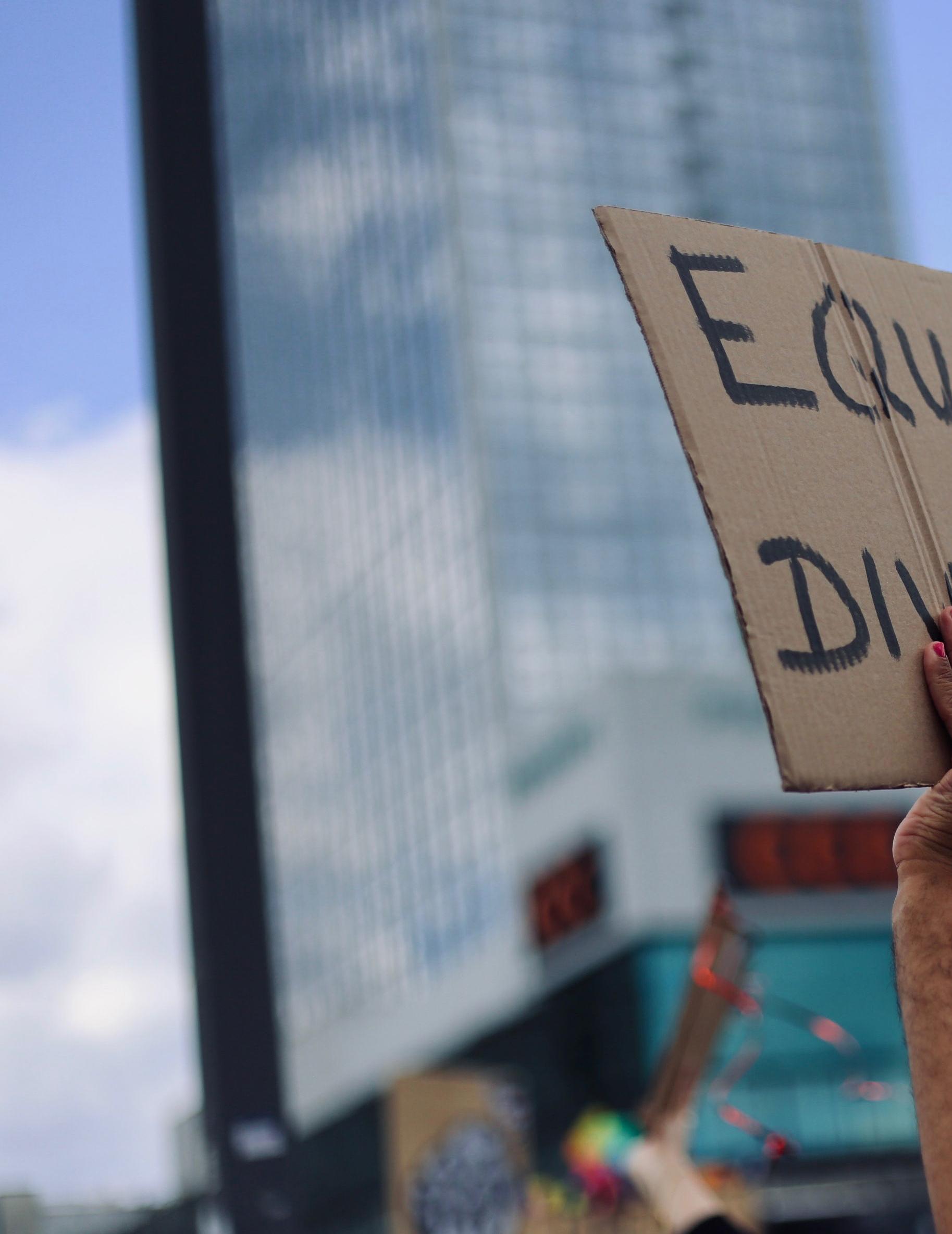
that such “positive discrimination” should be provided to those with innate circumstantial disadvantages, for true equality to be established in society.
When only the raw definitions are considered, we can now formulate the claim that the notion behind the form of egalitarianism that I am referring to in this article is based on equity more than pure unweighted equality. However, the reason we consistently refer to the egalitarian ideal as a “world based on unconditional equality” is that equity cannot be attained without the basic principle of equality buttressing the overall society as a whole. If this is the case, we can acquire a deeper insight in answering the question of why some people tend to reject egalitarianism. Examining the notion of “positive discrimination,” a person may often view the additional privileges provided to another as unjustified and unfair. This reflects well on the popular tendency to assume that the poor are deserving of their fate and that conversely, the rich are deserving of their wealth, increasingly so depending on how high up their financial and social status is. Some believe that poverty is never inevitable, and that the inequalities in society are simply due to the poor’s lack of effort and ambition. Harvard professor Michael Sandel points out the absurdity behind such beliefs in his book <The Tyranny of Merit>. He criticises those who hold them as failing to realise that the fundamental circumstances and backgrounds of individuals play a pivotal role in their future wealth or success - perhaps deliberately so as such beliefs solidify their triumph over the success and wealth that they have obtained over the less fortunate. Such people reject egalitarian theories of positive discrimination as they believe that people should submit to their deserved fate and that providing extra support to others is unfair on those who rightfully earned their success “solely with their own hard work and efforts,” as they might say.
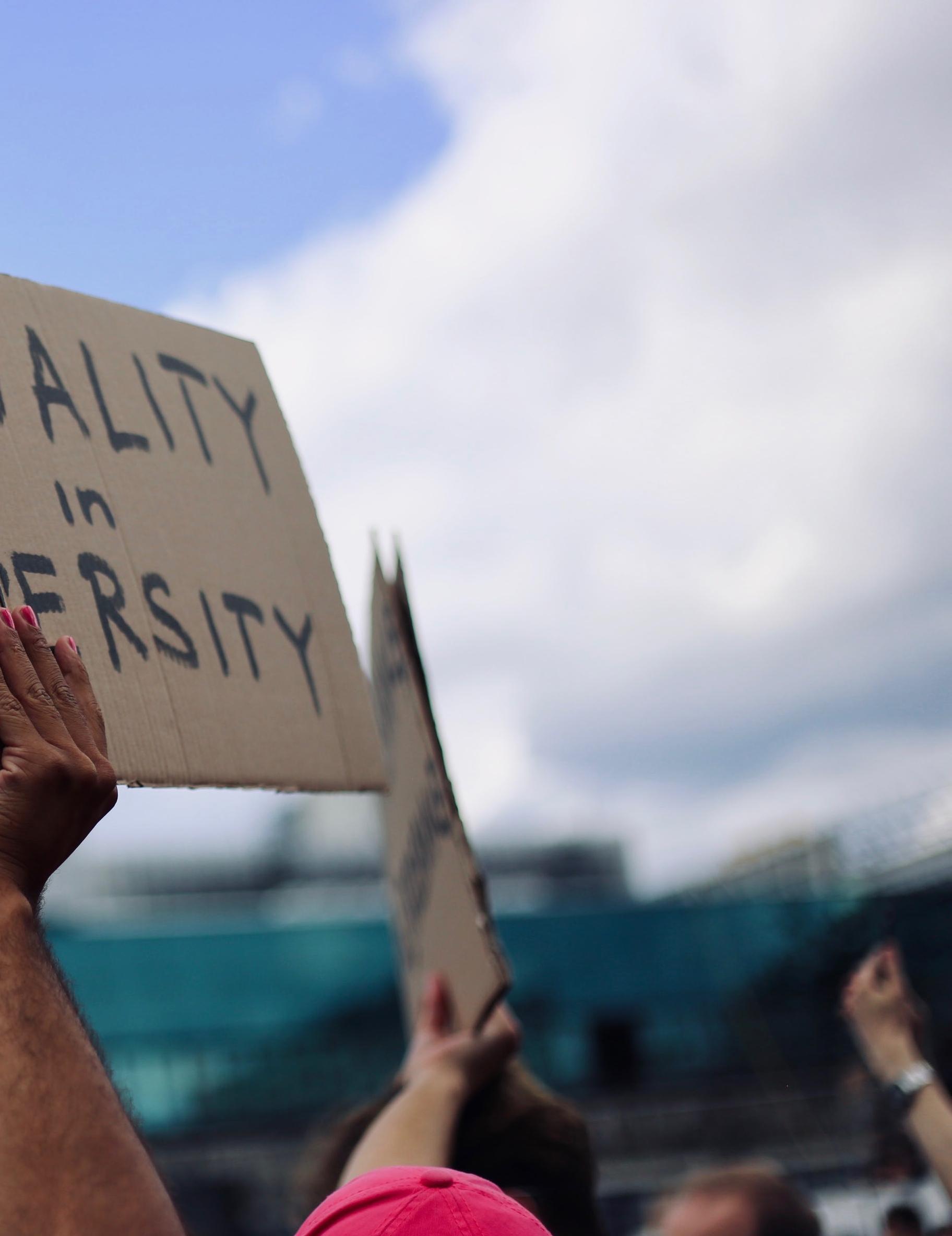
Another reason some may reject egalitarian theories is the reliance on the “zero-sum” theory to be an accurate representation of the world. Some people believe that much like the tokens in a game of poker, rights in our society are limited and can only be “stolen” between groups, never to be created or destroyed additionally. With such justifications, people tend to espouse an innate antipathy towards the idea of increased positive discrimination in the world. A study from a Science Advances paper illustrates this effect taking a toll in society. When surveyed, those from groups typically associated with the greatest amount of power to change in society and advantages thereof tended to reject ideas of equality-enhancing policies with the belief that “increasing equality would harm their own group.” A separate set of studies provided the participants with an additional piece of information, guaranteeing explicitly that the advantaged group would be unaffected and that the equality-enhancing
policy would increase collective benefit for the whole of society. This made no difference in the nature of the responses. Across various scenarios ranging from mortgage lending discrimination to university admission, the “persistent and pernicious misbelief that equality itself is inherently zero-sum” was concerningly consistent, according to the authors of the studies.
Perhaps such beliefs are justified. The innate nature of us as human beings prevents us from corroborating an idea that we believe will bring even the slightest disadvantage to our own well-being. However, the critical question is whether such beliefs are true. All this article aims to do is provide the larger audience with food for thought regarding this issue. Perhaps this is an unanswerable question, which has stemmed the neverending disagreement between conflicting ideologies and affiliations. Nevertheless, an ideal form of Egalitarianism is only one of many other ideologies brought about by people striving for a better world; Nothing can be achieved if ideas for improvements in society are neglected and undermined for being a “pipe dream.”
Our bodies contain 37.2 trillion healthy cells. But did you know- more than a thousand cancer cells are made in every single person, every single day? Since 1500 BCE, cancer has been an enemy to humanity, currently taking more than 1000 lives every day. Until the 20th century, being diagnosed with cancer was a death sentence without an execution date. People could just watch their loved ones suffer and die, and for centuries no proper treatments were found. It was a disease with no hope.
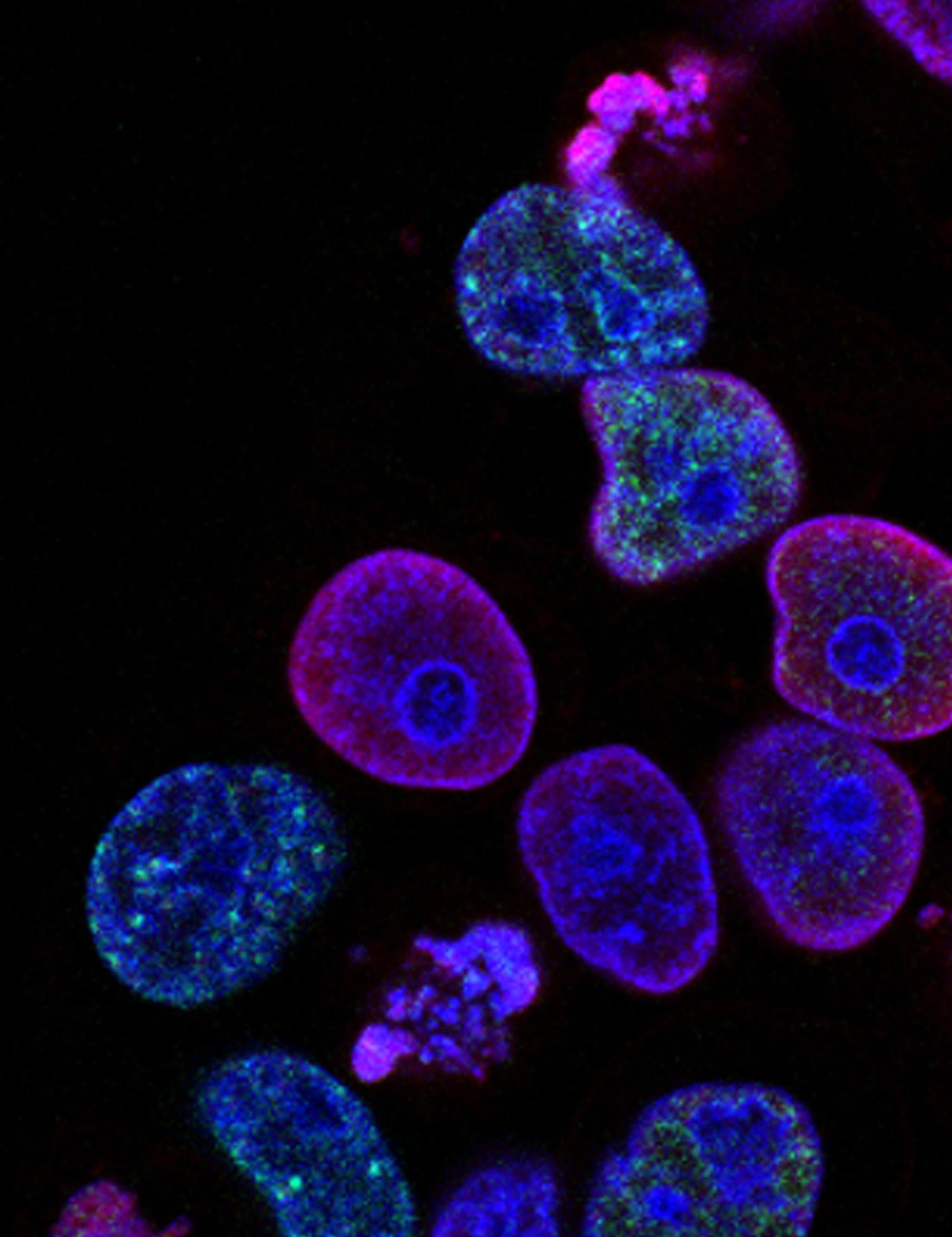
The first case of cancer was found in 3000 BC, in ancient Egypt. It was breast cancer, which is the most common type of cancer in the world. The woman had eight tumours on her breast. It was treated with cauterization, which was burning and then sealing the part with tumours. However, even when it was cauterised, cancer returned. Egyptian people wrote that cancer was a “curse brought by the gods”. This concept was not changed until Hippocrates (460-370 BCE). Hippocrates was the first to suggest a cause for cancer. He hypothesised that cancer was caused because of excess black bile. He believed that whenever the balance in the four body humours (blood phlegm, yellow bile, and black bile) vvwas lost. Whenever black bile became dominant, it would cause cancer (Di Lonardo, Nasi and Pulciani, 2015).
As we approached the 16th century, people now had a better understanding of the human body. In the Renaissance, autopsies were started to be performed. This led multiple scientists to prove previous assumptions wrong. Anatomist AndreasVersalius was able to prove that black bile never existed and that the imbalance in the four humours in the body wasn’t the cause of cancer. Paracelsus, a Swiss physician, studied the bodies of miners. He realised that miners had frequent tumours, and found out that their blood had high concentrations of arsenic and sulphur deposits. He concluded that if humans were exposed to harmful chemicals, it could cause cancer. At this time, the environment was never considered a cause of the disease. His study influenced research in the future about the link between cancer and the environment.
In the middle ages, people thought that cancer was a contagious disease caused by foreign pathogens entering the body. They also introduced that cancer could be hereditary, which was later found to be true. In the 18th century, people believed that cancer was lesions in the organs, or an overgrowth of organs
resulting in them being in a peculiar shape and being unable to function. The theory that cancer has a connection to chemical exposure was also suggested by multiple scientists, recalling the study of Paracelsus. They found jobs such as sweepers and factory workers were more likely to develop cancer than others. Both jobs were jobs which had to be exposed to many toxic chemicals such as sulphur and carbon monoxide, both being classified as carcinogens.
Jumping to the 20th century, with highly developed apparatus, cancer research became easier. In Japan, two scientists, Katsusaburo Yamagiwa and Koichi Ichikawa were able to induce cancer in rabbits by applying coal to their skin. At this time, scientists started to turn away from the fact that cancer was caused by viruses, but by genes. Theodor Boveri suggested that cancer was caused by “a particular, incorrect chromosome combination which is the cause of the abnormal growth characteristics passed on to daughter cells”.
As we got into the early 21st century, cancer became what we know now- it was caused by exposure to carcinogenic chemicals and an incorrect gene combination which caused the creation of cancer cells which reproduced rapidly. Treatment methods such as pills, chemotherapy, and professional surgery were put into action, saving many lives.
Today, cancer is still being researched by scientists. Cancer is a leading cause of death worldwide, with a terrifying one in six deaths (World, 2022). Still, numerous types of cancer aren't fully treatable, and almost no chance of survival. This includes glioblastoma.
Glioblastoma is a type of aggressive brain cancer most common in adults. It has a 6% chance of survival and has no cure. Brain cancer is especially difficult to treat as surgery is rarely an option. Unlike cancer in other organs, removing a part of the brain is dangerous. The brain is the organ which controls all bodily activity. If we remove a part of the brain, the brain can malfunction, causing death. Especially for glioblastoma, surgery is never an option as its growth is so rapid that when it is found it is usually at stage three or four cancer, which is nearly impossible to treat.
The impact of glioblastoma on a person is drastic. Somebody normal a few weeks ago could be struggling to
speak, swallow, or walk. In my old school when I was in Year 7, I had a friend named Lina. She was energetic, aced all sports and was insanely good at maths. On my birthday, I invited her to my party, and I remember she won all the prizes for activities involving sports. However, one day, she started to miss school. She would come to school incredibly late, which was unusual for such a principled student like her. She would disappear during lunch and break as well. This continued for about two weeks until she stopped coming to school. We first were worried, but we forgot about her as time passed. Soon after her “disappearance”, online school started. However, she did not join the online meeting either. It was about 4 months later we found out that she had passed away from glioblastoma.
Her parents, who were teachers, shared that she had been going to the hospital for chemotherapy, and after a few weeks, she couldn’t walk or eat properly, resulting in her having to be hospitalised for the rest of her remaining life. They shared that her tumour was located in a critical part of the brain, and it was already so large that surgery would’ve killed her.
However, hope for the cure of cancer received light. At Yonsei university hospital in Korea, they brought in a Heavy Particle Therapy Machine. Heavy Particle Therapy works by discharging heavy carbon ion particles to cancer cells located deep underneath the skin, and disappearing after they sabotage the cells. There are multiple positives about this treatment; first, the patient won’t feel pain. After the cancer patient finishes chemotherapy, you might experience agonising side effects, such as numbness, burning, and dizziness. However, both during and after heavy particle therapy, the patient won’t feel any pain. Secondly, its chances of curing certain cancers are extremely high, with a full recovery rate of 90% for liver cancer, 100% for prostate cancer, 80% for lung cancer, and 42% for recurring cancer. It can be used for almost all types of cancer, and scientists are researching to cure even more of them. Heavy particle therapy is also 2~3 times more efficient at killing cancer cells than Radiation therapy and Chemotherapy. Chemotherapy only eases symptoms and growth of the cells by damaging the nucleus, but heavy particle therapy can permanently kill cancer cells. Chemotherapy and radiation therapy can kill both healthy cells and cancer cells, however, heavy particle therapy never hurts normal cells. This is because the amount of radiation emitted is high when it collides with the cancer cell, but after destruction, it doesn’t have enough radiation left to hurt the normal cells near it.
Moreover, heavy particle therapy is effective in almost all areas of the body where cancer cells are concentrated. This includes; the lungs, intestines, liver, pancreas, near the pelvis, and the brain. This therapy is exceptionally efficient to use in areas where surgery is difficult, and radiation therapy doesn’t have much impact on it. This can save numerous lives of people who have near untreatable cancer; like my friend Lina. Currently, three heavy particle machines are in Japan, two are in Germany, and one is in China. It is planned for 10 machines to be given to 8 countries; including South Korea. This advancement in technology has made it one step closer
to eradicating cancer from our lives, and this is just the start; It is certain that in the future, people who are diagnosed with cancer will be completely cured, and no more precious lives will be lost. The light in the dark tunnel, “hope” for cancer, is coming into reach, and there will come a time when we exit the dark, into the warm light.cancer will be completely cured, and no more precious lives will be lost. The light in the dark tunnel, “hope” for cancer, is coming into reach, and there will come a time when we exit the dark, into the warm light.
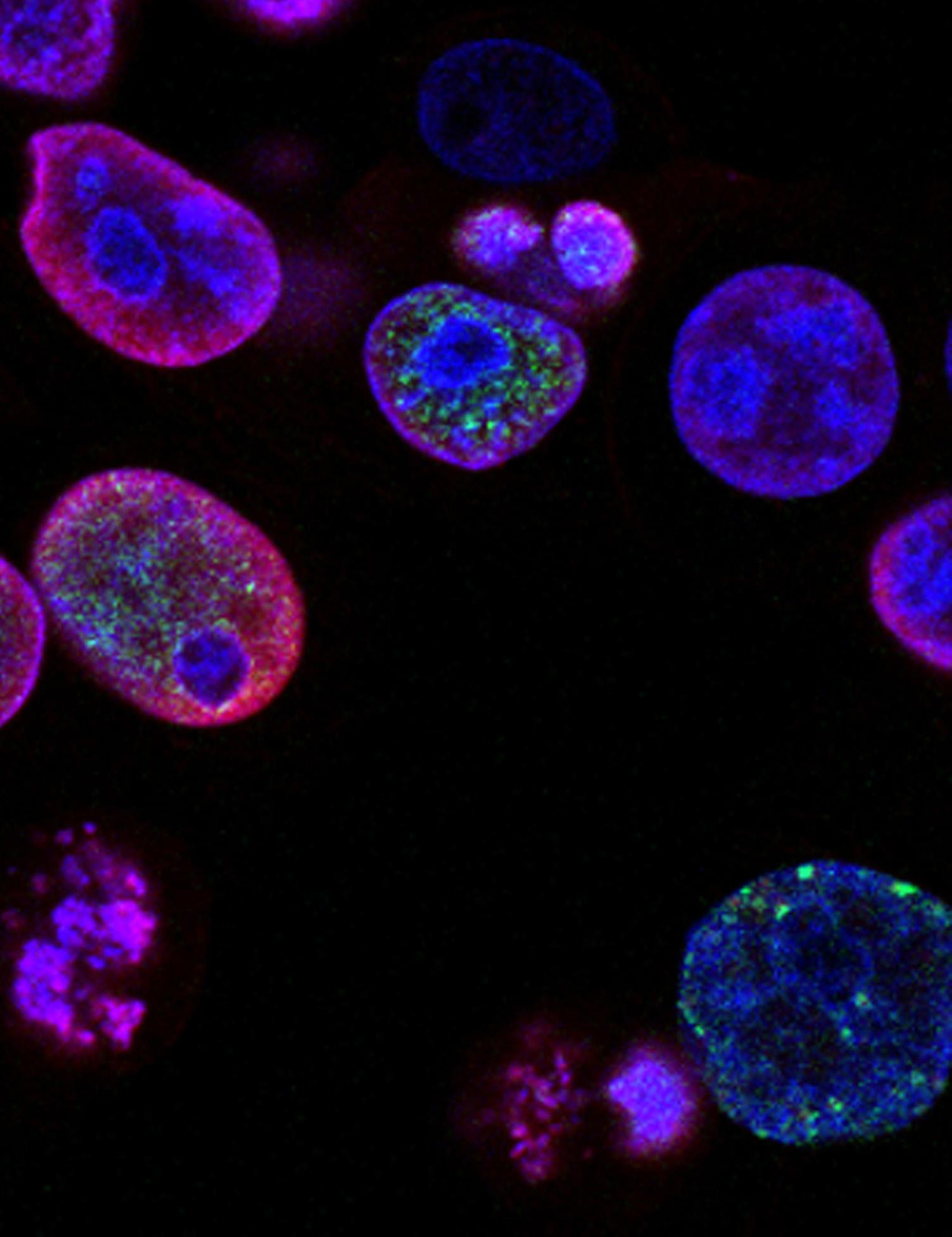

 By Chloe Park, Year 9, Noro Edited by Hailey Kim
By Chloe Park, Year 9, Noro Edited by Hailey Kim
Some say hope is an emotion which evokes an emotional state that contradicts its purpose; we feel discouraged if the ideal situation we hoped for doesn’t happen. The definition of hope is somehow vague to people, although most of us define the word ‘hope’ with adjectives of positive connotations and aspirations related to the future. Let’s think about the advantages of hope before we clarify the definition. Despite the fact that hope sometimes brings feelings of loss and grief, the ability to hope is powerful and meaningful. Hope can motivate people to do a certain action to improve the current state and step up towards the target. People frequently group up in order to turn their common hope to reality and protest. Sometimes these actions can lead people to even reach their target and make it true in reality. So what is the crucial role of hope in protests?
As various people in the society cannot have the same opinion and cannot all agree with one another, conflicts occur continuously. The most representative example of a way to express one’s opinion to the public is protesting. To protest, generally individuals around the world recruit people who have the same idea of changing the society in a particular way, in order to transmit the common opinion more impactfully to society. Hope motivates people to put their own thoughts into reality and reduce their doubts. Some emphasise that the action of hoping can result in a delusional mind state, as living as a fool’s paradise, and to be happy because you do not know or will not accept how bad the situation really is. Some relate hoping as an imprudent and reckless action to do. However, this extreme circumstance isn’t reasonable; anything too extreme isn’t good for us. There would be various kinds of counterarguments about the idea that “Hope benefits
us”, but it is notable that the advantages exceed the disadvantages. Hope increases your self-belief, self esteem and confidence. It reduces anxiety and makes you more cheerful. It motivates you to stand up for yourself even if you stumble and fall many times. Nelson Mandela, the protestor who dedicated his life for equality of race in South Africa, once said “Our human compassion binds us one to the other – not in pity or patronisingly, but as human beings who have learnt how to turn our common suffering into hope for the future.” He strongly emphasises the significance of gaining hope by stating finding a common hardship and making it better binds the human race altogether. Mandela also contributed as a big portion to South Africa’s policy of apartheid; A policy that governed relations between the white minority and the nonwhite majority of South Africa and sanctioned racial segregation and political and economic discrimination against non-whites.
Every journey has obstacles and difficulties to tackle along the way. Protests may lead to confinements in jail, depending on the law or unjust government. However, it can ultimately be argued that the confinements and impediments of a protest are worth enduring, because expressing and raising awareness of the issue can support the cause even more. Simultaneously, it is notable that we shouldn’t violate morals or laws extremely in order to achieve our goals. Thus, a balance must be struck between fighting through hardship and moderating behaviour: this is an ongoing debate with no easy answers.
Even losing can be part of the process: as the bills to abolish slavery in the British empire failed over and over again, the ideas behind them spread, until 27 years after the first bill was introduced, a version finally passed. This incident shows that although the mental state of being hopeful and waiting a long time for the change is tough and makes it easy to lose trust, being optimistic towards the future can eventually bring you a positive outcome.
If you feel no will to challenge yourself or proceed with activities in your life, you may be in a state of hopelessness. Being hopeless aggravates your emotions to be more intense and to be more psychologically fragile, making you dull and unconcerned by the situations around you at the end. If everyone is hopeless, believing that they can never change the situation they feel unjust, this may result in a biased society. Particular political groups with power would take over and opposing opinions wouldn’t be raised or would be silenced, leading to authoritarian governments. In addition, problematic factors in society cannot be completely recognized and therefore necessitate the voices of people to mark those because we should know what the problem actually is in detail before we solve it. Nevertheless, blank eyes staring out to nowhere can change to eyes full of eagerness to attain the aim. Rather than catastrophizing and imagining the worst case scenario, try to think the bad situation would be permanent. Then, act out to make the situation actually better.
Because hope can be a motivation for your aim, the struggles you make to achieve it not only make you closer to achieving your aim, but also help you develop other types of skills. In order to recruit people to gain support in your opinion, you should transmit your opinion in a justified, understandable and rational way. Primarily, you can fail to convince people. But gradually, as you mend those flaws in your persuasive skills, your opinion’s credibility will increase. Consequently, the process of hoping in protest brings you numerous benefits other than also making your aim come true.
People must believe that the small, incremental actions matter to sustain hope and believe that they are vital although the impacts aren’t obvious. Believe, and remind yourself that you have the past to revise on if you are depressed with your consecutive failure. Recruit people who agree with you. Spread your thoughts across the globe by protesting. Then one day, you would seize the success to make the situation you hope actually true. Don’t be afraid of protesting.

Just as South Korean international schools were gaining traction, they were brought to the brink of collapse. The previous Moon Jae-in administration had planned to end autonomous private high schools, foreign language high schools and international schools, abolishing them or reverting them into state-funded schools by March 2025, over concerns that so-called elite school education leads to social class disparity. The head of ministry of education Cho Hee Yeon, denounced that the international schools “harm the basic principles of equality amidst students.” Nevertheless, the disparity between the underserved groups and the elites of Korean society foments a wall that can not be transcended.
The elite schools of South Korea have been going under reformation as there was escalating tension between the policies of two political counterparts. As this is the dynamic at play in present-day Korea, the schools are embroiled in the nexus of escalating tensions between the two hotly debated opinions.

The Korean private schools and public schools form a stark contrast. In particular, the private schools have employed multifarious means in order to establish an educational infrastructure that is not contingent on any government restrictions. The schools have been brandishing their immeasurable potency through incessant development and a headway of elite education. Yet, the predominant controversy behind this is how the utter obliteration of private high schools infringe student’s rights to learn. On the other side of the coin, there are others who passionately argue that this encourages elitism and the facade of economic inequality. As an approach, the government has implemented new systems of foreign schools where Korean nationals can not enter. This boiled down to a heated debate between the two sides.
Firstly, let us ruminate on the latter - the hypocritical bravado of the South Korean Ministry of Education. The South Korean government is actively providing myriads of support and affection towards the elite schools. In
particular, they have taken nebulous stances that were emboldened to gain votes in their favor. The paradigm of hypocrisy of the Korean ministry of education is full of unrelenting violence, incessant corruption and unwholesome motifs. In real world conditions, the South Korean government has funded $10 Million towards the Korean elitist school systems, to exhibit full affection towards the schools and the taxpayers.
Such premonition to annihilate private schools has captivated the minds of many parents and rightist activists then inundated tension. Education is not a prerogative for affluent and opulent minds. Nevertheless, the parents were infuriated as the current standard of education has already been elevated to the point of the magnate - the new system has been promulgated through the Korean society, then started to show flair. In particular, international school students have progressed through the most prestigious colleges, using their schools as a “stepping stone” for a better future. Needless to say, such a paradigm is apparent in our own school, NLCS. As a response to this, the head of Daewon International Middle School, Shin-Il Kang replied that such whimsical decree is “an action that harms the basic direction of education that all students deserve.” On top of that, a multitude of parents held protests in the vicinity of the ministry of education.
Ultimately, due to the reform of the government and the overturn of the election results, the onset of hope has emerged. The new administration has decided to obliterate the policies that have been implemented by the liberal government. Inasmuch as the new Yoon administration has pledged to allow the scholastic performance of elite students, this unveils his doctrine that will permit independent schools to take full advantage of their own headway of academic curriculum. On top of that, the incessant protests have manifested infinitesimal flair and functionality as the government has responded with a notice that they will withdraw the decree on international schools. Everybody
- including me, a humble high school student imbued with high spirits and inspiration - possesses the underlying capacity and the right to “exploit” this greatest, inherent weapon, “education”, to turn hopes into reality.
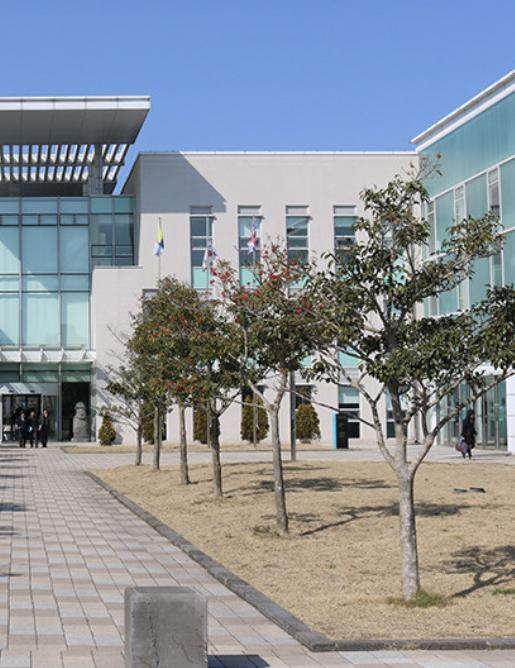
 By Cindy Ryu, Year 10, Sarah Edited by Theresa Lee, Year 10, Jeoji
By Cindy Ryu, Year 10, Sarah Edited by Theresa Lee, Year 10, Jeoji
Santa Claus is the most classic fairy tale and a lie children were subjugated to. Most children, when growing up into adults, will learn soon or later that Santa Claus, the famous red-clad man, is not real. Then how do people come to this conclusion? How can we say for sure Santa is not an actual being? Well, here are some logical reasons that proves why Santa is not real.
First and foremost, Santa is too greedy so he cannot go through the chimney. From the fictionary images we see of Santa, we can tell that he is abnormally fat - even obese. His height is 5 feet 7 inches and weighs roughly 260 lbs which is 170.18 cm and 117.934 kg. Santa’s waist is about 33 cm and his hip size is about 98 cm. Since the average chimney is 32 to 36 inches wide which is hard for Santa to fit. Moreover, it is hard to find houses with a chimney as many houses are becoming flats.

Not only that, one can prove mathematically that Santa is merely a fictional character. Santa has to carry presents to many children. Today, there are more than 2.2 billion children on Earth according to humanium.org and the global average fertility rate is around 2.3 children per woman. The percentage of children whose parents are Christian is 53.7%, which is 1,181,400,000 people. This data indicates that Santa has to deliver gifts for almost 1.2 billion children and visit 513,652,174 houses.
Visiting 500 million houses is difficult - visiting these houses while carrying a bundle of presents would be near impossible. Assuming the weight of the toy is 1kg, Santa has to carry 1,181,400,000 kg. It is twenty three times the mass of the Titanic ship. Normally, a reindeer can carry 130kg; therefore, to carry all the presents, Santa needs 9,087,693 reindeers. This can be seen as a reason why reindeers are becoming extinct.
Will Santa have enough time to give all these gifts? Of course not! The total distance that Santa has to travel is 11 million miles - a little longer than the distance from the Earth to the Sun. If Santa travels in the same direction the Earth spins, Santa only has 31 hours to send all the gifts to the children, which is a bit longer than 24 hours. Therefore, Santa has to visit every house in 0.0001682 seconds to stop the sled and put the present. Then, the average speed of the sled would be about 2000 km/second which is two hundred times the speed of a flying rocket.
It is scientifically proven that Santa is just a fictional character. However, many people still believe that Santa is real. If Santa was real, Santa would be forced into prison for a long time - even life time. Why? Santa has done many criminal acts. Santa is trespassing in every house to put the gifts. This implies that Santa has to trespass 513,652,174 houses. Additionally, Santa should be charged for illegal usage of reindeer. Santa uses 9,087,693 reindeers in order to carry all the gifts. The number of reindeer are decreasing and the reindeer population has to be monitored and protected to prevent future declines. Adding on, forcing someone to work for the whole day is an illegal act, but Santa coerces elves to work for the whole December.

Santa is still believed to be a real person in many countries for kids. This is because parents are trying to protect their children’s innocence. However, children must know the truth unless their parents are going to work as Santa. If these children were born as elves, they would be forced to operate in the North Pole’s toy factory. Also, their parents will have to be imprisoned due to their criminal acts.
It is proven that Santa is not true by fictional images, mathematical and logical ways. Santa cannot fit the chimney and it is impossible for Santa to deliver all the gifts. Even if Santa is real, Santa should be in jail for doing lots of criminal acts. Even after all this, would you still believe in Santa Claus?
CAN yo U I m A g IN e goINg oN A trIP to mArS?

We HAve ALL I m A g IN ed tr A ve LIN g to ot H er PLAN et S WH e N W e W ere yo UN g. A S te CHN o L ogy A dvANC e S , t HIS dre A m IS gett IN g CL o S er AN d CL o S er. t r Ave LIN g to o U ter SPAC e S eemed I m P o SSI b L e UN t IL 1961, WHICH WAS j US t A bo U t 60 yeArS Ago. WHeN yUrI gAgArIN fIrSt SUCCeeded IN tr Ave LIN g to o U ter SPAC e, ALL of US W ere A m US ed. No o N e W o UL d HAve exPeCted tHIS to be P o SSI b L e. L AUNCHIN g t H e ro C ket d I d N ot o NL y me AN A WI der r AN ge of HU m AN AC t I v I t I e S , b U t ALS o A H o P e. Ne W te CHN o L ogy HAS gre At P ote N t IAL to m A ke dre A m S re AL , S o P eo PL e H o P e t H e I r dre A m S WILL be C ome re AL . m o S t P eo PL e HAve dre A med of tr Ave LIN g to SPAC e, b U t t H e ex P e NSI ve C o S t for LAUNCHIN g t H e ro C ket S reStrICtS It.

NASA IS CU rre N t Ly deve L o PIN g A N e W te CHN o L ogy t HAt e NA b L e S tHem to LAUNCH tHe roCket to SPACe for A CHeAP PrICe. trAdItIoNALLy, tHe roCket Needed A greAt AmoUNt of eNergy to eSCAPe tHe eArtH dUe to grAvIty, WHICH mAde It exPeNSIve. eveN tHoUgH tHe SCIeNtIStS kNeW tHAt LAUNCHINg A roCket IN tHIS WAy WAS Not So effICIeNt, It WAS tHe beSt WAy At t H e t I me. tHIS HAS LI m I ted t H e NU mber of LAUNCH e S , AN d HALted t H e reSeArCH AboUt oUter-SPACe. HoWever, A NeW WAy of LAUNCHINg A roCket IS NoW deveLoPed: A SPIN LAUNCHer.
tH e SPIN LAUNCH er US e S A C e N tr I f U g AL for C e to LAUNCH A ro C ket. tHe SCIeNtIfIC CommUNIty IS HoPINg for tHe SUCCeSS of tHe SPIN LAUNCHer. It HAS beeN CreAted, bUt tHe oNgoINg teSt AboUt tHe SPIN LAUNCHer IS Not yet ComPLete. mANy teStS WILL be HAPPeNINg IN tHe Next feW yeArS ANd eveNtUALLy, SAteLLIteS WILL be SeNt to SPACe USINg SPINLAUNCH. SPINLAUNCHer WoULd eNAbLe tHe SCIeNtIStS to LAUNCH more roCketS to SPACe, HoPINg to kNoW more AboUt tHe SPACe. tHIS WILL better HeLP SCIeNtIStS, gAtHerINg ALL tHeIr HoPe. WHeN tHe fIrSt roCket IS LAUNCHed tHroUgH A SPIN LAUNCHer, oUr HoPe WILL get CLoSer to reALIty.

 By Alex Yang, Year 10, Noro
Edited by Dan Huh and Sharon Jung
By Alex Yang, Year 10, Noro
Edited by Dan Huh and Sharon Jung
: a powerful mantra, claimed by former New York City Mayor Rudy Giuliani during a speech. Regardless of the source of this phrase, it indicates that the term “hope” should not stimulate the stock investor with investing their money. The most consequential error that stock investors are facing is that investors are investing their money based on the wrongful belief or faith that it will - or might - go up in value.
Despite the fact that the phrase does not originate from the stock market field, the phrase “Hope is not a strategy” can be applicable to common stock investors. In order to make a profit based on the stock market, prudent investing should always be implemented based on a strategy and well thought out plan rather than depending on the cognitive process also known as hope. It is compelling to understand the fact that every investor should have a realistic and accountable return objective in their mind before they invest their actual money. In the stock market, the miracle that everyone is admiring barely happens. Thus, expecting the miracle that is simply based on the hope can not bring the profit although fundamentally it scarcely happens. The sentiment of hope can function as a strong weapon that can possibly cause a perilous financial loss to the investors. Hope often triggers the inexperienced investors to make an irrational decision, stock demands cavernous understanding regarding the stock market and investing strategy, whereas inexperienced investors do not have this knowledge and they are not capable of using the information around them.
“Hope is not a strategy”
Investment requires a clear return objective, investment that is based on the aspiration can not be considered as proper investment. Around the media, there are myriad contents that depicts investing as something easy that is attainable just by understanding a few strategies. Whereas, successful investment can not be conducted by simply understanding a few superficial investing strategies and tactics. In fact, investing is clearly predictable under the condition where the investor is audibly acknowledging and understanding the stock market as a whole. According to Warren Buffett, “I never invest in anything that I don’t understand”, in other words, without understanding the whole stock market and investing, investment can be considered as the gambling without a clear return objective. The most fundamental concept here is that, this kind of competence does not appear suddenly, but instead it demands thousands of hours and studying. Thus, expecting a return as an inexperienced investor is against the fundamental principles of investment. With a clear return objective while investing rather than simply depending on the hope, investment can be based on rationality and professionalism.
The term “easy money” arose from an online community, referring to inexperienced investors who coincidentally earned a lot of money in a short period of time. The key concept that needs a spotlight is “coincidental”, and as mentioned previously, most of the inexperienced investors lack professionalism and knowledge regarding the investing strategy; in other words, the money that they earned can be purely considered as the outcome of successful gambling. Regardless of the fact that there might be a method to earn easy money, under the capitalistic society, without adeptness, nobody can earn easy money. This context links to my argument, which is that success or easy money cannot be achieved suddenly.

Hope is often referred to as the most powerful emotion that one can have. The MerriamWebster Dictionary defines hope as ‘cherishing a desire with anticipation, or to want something to happen or be true,’ where positive connotations are deeply embedded in the term itself. However, when it comes to religion that requires ‘blind faith or hope’, controversial issues may arise debating whether hope helps an individual to overcome challenges in life, or drags one down to be ignorant of reality due to blind faith towards God. This article will identify the extent which hope can be beneficial or detrimental. In order to achieve this, I will examine the positive relationship between hope and religion, how hope may be detrimental, and thereby how religion can also have several downfalls.
A study targeted to patients suffering from incurable disease suggested that religious belief is a factor that affects levels of hope. Thereby, this suggests that hope and religion are closely interlinked and that they mutually create and affect each other. More specifically, praying and supplication are proven to have a comparable effect with meditation (Meisenhelder & Chandler, 2000). This is mainly due to the sense of control that comes from belonging to God. Here, two types of religious coping methods arise - positive or negative - and, depending on the method, it may influence peoples’ behaviour and health differently. Positive religious coping methods include praying, positive appraisal of negative situations, feelings of a safe relationship with God, believing in a purposeful life, and hoping for God’s help. On the other hand, negative religious coping methods include the attribution of difficult situations to divine punishment and feelings of withdrawal. Studies indicate that positive religious coping methods have improved mental and physical health whereas negative religious coping methods have led to mental distress and physical pain. Likewise, although the concept of religion is arguably intended to provide people a sense of belonging and mental stability, religion with excessive hope may lead to detrimental effects on people.

Power comes with a price: excessive reliance on religion and hope towards God may result in detachment from reality. Although the optimistic nature of faith or religion itself helps people to recover from hardships or challenges in life, people tend to rely on hope, desire, or excessive fantasies - biased hope - rather than being judgemental and rational. This ultimately makes them long for a change instead of actively generating one. For example, some who are devoted to their religion and rely on God may not put in sufficient effort in their daily lives in order to overcome difficulties. This links to the point where religion and hope sets up for disappointment and defeat. High reliance on hope naturally causes high expectations to oneself or to God. Since there is no guarantee that one’s devotion to a deity can be reciprocated, anticipation often turns into deep disappointment and even resentment. In this aspect, some argue that “we should restrict hope so that we can also limit the hurt that a failure or setback may come through”(Seltzer, 2018). Whilst a set religiosity or a belief can give pleasure, the backfire effect is also significant to consider. After the hope and expectations for God are repeatedly defeated, hopelessness comes to fill in one’s mind instead of hope. At last, this pushes one to his/her ultimate downfall where even planning for the near future would be challenging without religiosity. The person who has not prepared a place to trust and depend on other than religion may reach the extreme end of committing suicide.
This article has discussed the effect of hope and religion on general people, and how they can be detrimental. Despite all the consequences that I have discussed, for some, religion and hope is essential for an improved mental health and quality life. Religion should be appreciated and hope is essential for human beings, but the acknowledgement of the possible consequences of religion and hope will help one to get out of a vicious cycle of gaining meaningless hope and being hopeless.

 By Andy Kim, Year 8, Mulchat Edited by Warrick Kwon
By Andy Kim, Year 8, Mulchat Edited by Warrick Kwon
The invasion of Ukraine by Russia began, with a bang, on the 24th of February, 2022. It has claimed hundreds of thousands of human lives, and has had global repercussions.
The first and foremost reason for this invasion was Putin’s concern about Ukraine joining NATO, a military alliance of European nations. In a Victory day speech on the 10th of May, 2022, Putin accused this alliance of building up a significant military force near Donbas, intent on destroying Russia.
Russia views east European nations as its buffer against the West and specifically NATO. Thus, NATO’s advances toward Ukraine, a nation that shares borders with Russia, naturally alarmed Putin.
Another, more selfish reason, is that Russia needed a means to access the Mediterranean. Russia is not a landlocked country, but it has no direct contact with the Mediterranean sea. Therefore, Sevastopol, a major port city on the Crimean peninsula, was very attractive to Russia.
However, as these reasons are not ones Putin can blatantly talk about in the media, Putin crafted a series of superficial excuses.
One of these excuses is that Ukraine’s nationalism is a synthetic product of the Nazis. During WWII, the Nazis encouraged Ukrainian nationalism in order to combat the increasing power of the Soviet Union. For this reason, Putin is claiming that his invasion is a justified attempt at denazification of an inorganic Ukrainian nationalism.

Ukrainian politics, and its internal conflict between pro-Ukrainian and proRussian politicians, is not helping the matter. Yuschenko and Yanukovych, two presidents with differing policies, left the nation in turmoil. Most of Yuschenko’s pro-Ukrainian policies were abandoned by his successor, who moulded the nation to be more pro-Russian. This was problematic for the Ukrainians, who believed a pro-Russian nation would eventually lead to them being oppressed by a corrupt, autocratic government.
In response, after months of protests, the pro-Ukrainian citizens revolted. In a five-day revolution that lasted from the 18th of February to the 23rd, Ukrainians overthrew Yanukovych’s government. This revolution is known as the Revolution of Dignity, or the Maidan Revolution.

Yanukovych fled to Russia, claiming that the vote was illegal and manipulated. This gave Russia an excuse to intervene militarily, under the pretence of protecting Russian citizens in Ukraine as well as restoring the ‘rightful’ Ukrainian government.
Although at first the Russians saw success, capturing the entirety of Chernobyl in just one day and launching repeated assaults on Kyiv, determined counterattacks have seen Ukraine regain thousands of square kilometres of land. However, Russia is not an easy enemy, nor one that would give up easily. So, does hope remain for Ukraine?
The situation has changed dramatically in favour of the Ukrainians over the past few months, but Russia is still holding on. They have recently sent reinforcements to the Kharkiv region to repel the oncoming Ukrainian attack. The war may drag out for months still, the consequences of which reverberate globally.
Russia and Ukraine have been suffering greatly, but their conflict has negatively impacted the rest of the world as well. Russia is the world’s leading producer of oil and natural gas, and Ukraine produces a great quantity of wheat. The war between these nations has caused a global collapse in supply chains, leading to inflation damaging the world economy.

The U.S, for one, is suffering from the greatest inflation in decades. Inflation rates reached a peak of 8.26% in September 2022, the highest the U.S has seen since the financial crisis of the 1990s. The Federal Reserve Bank’s response to this inflation is equally drastic. On September 21st, the Fed announced another 0.75 percentage point interest-rate rise. This was their third interest raise in a row.
Therefore, for the economy and world peace, it is clear that the war in Ukraine must be stopped.
There are a few possible solutions that may resolve the crisis. The first of these is to simply let Ukraine continue its fight. As aforementioned, the Kharkiv counter-offensive was a decisive blow on the part of the Ukrainians. Further, Russia is suffering immense military losses. Although the exact figures are unclear, the Pentagon claims that over 80,000 Russian soldiers have been killed, and thousands of tanks captured or destroyed by the Ukrainians.
The Ukrainians have utilised their knowledge of terrain and guerilla warfare tactics to great effect, pushing the Russians out of Northern Ukraine and to their border in Eastern Ukraine. According to The Economist a stunning number of vehicles have been found abandoned, their fuel tanks empty but otherwise in perfect condition. This confirms the hastiness and desperation of the Russian retreat.
This is not, of course, to say the Russians are suffering defeat in silence. Vladimir Putin has recruited a new army commander for the forces in Ukraine. General Sergey Surovikin, a veteran of Russia’s conflict with Syria, had earned the moniker ‘General Armageddon’ for his aggressive tactics.
His promotion to the position of commander was immediately followed by a series of missile strikes, some of which fell on civilian targets such as schools, houses, and hospitals. However, even Surovikin has admitted that the scenario in Ukraine is ‘strained’ for his forces, which may be another indicator of potential Ukrainian victory.
The second solution is for the west to place import sanctions on Russia, thus affecting its economy. Currently, the west is providing Ukraine with financial and material aid as well as placing sanctions on the Russian economy.

The most infamous type of sanction is trade restrictions. The West has resolved not to import any fuel or natural gas from Russia. As Russia has a near-complete monopoly over said assets, this is nearly impossible. Many nations still buy small amounts of Russian oil to support their economy, and China and India have both begun to guzzle the cheap oil in massive quantities.
The only sanction that can be said to be having an effect is export control, which prevents other nations from exporting their goods to Russia. Currently, the Russian airline is undergoing severe stress due to the lack of aeroplane parts, and some planes have been grounded purely because their operators cannot find extra parts to replace broken ones. If this type of sanction was to be enforced more strictly, it could mean the collapse of Russian industries and eventually its economy.
If the West continues to control Russia’s imports as well as continuing to utilise other types of sanctions, Russia will collapse. Further financial and material support of Ukraine will also help matters if Ukraine manages to drive Russia out of their territory. Even now, Russia is stumbling, and its economy is not as spry as it once was. On Tuesday the 15th of November, Ukraine scored a critical victory in Kherson which may, once and for all, signal the beginning of the end for Russia.
Hope remains for Ukraine, and the people of the east-European nation stand strong, ready to fight another day.


Since the first tools were created for hunting and gathering food 3.3 million years ago, technology has advanced. As evidenced by prehistoric murals showing operations, health technology (or healthcare) dates back to prehistoric eras. Despite this, there are still only a handful of cancers that can be cured, while there are hundreds that cannot. "Stem cells," an unconventional but reassuring concept, have the potential to create a treatment for every illness known to mankind. The following is a fictional interview based on research from the viewpoint of a stem cell PhD.
A stem cell is a particular type of cell that can differentiate into various types of cells, like me! If my host has lost or damaged ciliated epithelial cells, I ought to patch them up, eventually splitting into them. I am an embryonic stem cell, which is a type of stem cell made from an embryo. There are three types of stem cells: embryonic stem cells, induced pluripotent stem cells (iPS cells, for short), and adult stem cells. I’m mostly going to explain embryonic stem cells, but keep an eye out for any additional descriptions that may be present!
Q. What about embryonic stem cells?
An embryo gives rise to embryonic stem cells. They are taken from human embryos that already exist or from embryos made via the "somatic cell nuclear transfer" technique. Collectively, the remnants of in vitro experiments are used. The former may not be as developed as the latter, which makes this possible. The frozen embryos are leftovers from in vitro fertilisation experiments. In an in vitro experiment, 5–10 embryos are used to make sure at least one can mature into a foetus. The remainder is kept in an environment that is extremely cold (-196 °C). They basically need to thaw the embryo to 37°C and cultivate it for 3–5 days to get it to blastocyst stage before using it. When the size and density of the embryos reach a certain point, they are divided into small portions at regular intervals and transferred to other containers to proliferate. Repeating this procedure will yield "embryonic stem cell lines," which are stem cells that don't differentiate or expire but instead keep multiplying.
Q. Judging by the information provided so far, this is innovative! Does the general public share these views?
Not quite; embryonic stem cells are rather contentious since, to metamorphose into stem cells, the embryo has to be destroyed. The embryo is the preliminary step before turning into a living creature; therefore, some people argue that the embryos lose their chance to live, regardless of their intentions. Some countries and states have outlawed the use of embryonic stem cells in experiments due to these, ethical and religious reasons. Additionally, you must obtain the consent of the parents who donated the embryos.
Q. Can you briefly explain the other stem cells as well?
Yes, I believe you are referring to adult stem cells and iPS cells. Despite not being derived from an embryo, the iPS cell closely resembles embryonic stem cells in terms of its characteristics. Thus, there is no ethical dilemma with iPS cells. Additionally, because iPS cells are created from the patient's normal cells, they can be reintroduced into the body of the recipient without having to worry about immune rejection, which is a significant issue with stem cell transplantation. That explains the topic's current prominence fairly well.
Adult stem cells can be obtained from either other people or oneself. When you extract from other people, it enables mass-production, yet transplant rejections are possible. To make sure there aren’t any immune rejections, the stem cells can be taken from one's own body. The safety of this is highly credible, but the cell’s ability to be differentiated into another type of cell could be lowered a bit. Overall, adult stem cells are guaranteed in terms of side effects (as long as the stem cell is mine). Nevertheless, the potentials of iPS (induced pluripotent stem cells) are greater, and they could be an emerging hope for the future of human society.

 By Bella Kim, Year 9, Noro
Edited by Taehee Kim
By Bella Kim, Year 9, Noro
Edited by Taehee Kim
More often than not, hope and wishing both dance hand in hand with the daisies. Both stand as abstract, uninfluential and quite delusional ideas that are perceived as nothing more than a practice of miserable complainers. Society has established as a norm that both hoping and wishing are unproductive exercises and has never distinguished the two acts. However the two practices differ substantially: in mindset, background, and consequence.
The dictionary definition of hope is, “an optimistic state of mind that is based on an expectation of positive outcomes with respect to events and circumstances in one's life or the world at large.” Here, the accommodation of a positive mindset does not mean that they are being unrealistic. It rather simply means focusing on the bright sides of life realistically and pragmatically. To extend, the reason why positivity exists in hope is because the concept of hope is on the premise that there is a possibility of attainment. Because the aim or desire is a tangible one, people will be more optimistic in imagining future occurrences. Evidently, hope contradicts its assumptions as a practice of fretful grouches. However wishing is recognised as “to feel or express a strong desire for something that is not easily attainable.” Though wishful thinking hints at remarks of desperation, there is no mention of an optimistic attitude which clearly differentiates it from hope. The nuance of the two words are well reflected in even daily conversations. Comparing the phrase “I hope she gets better” and “I wish she gets better”, a stark contrast is displayed as the first sentence seems to portray getting better as an attainable goal whilst the second sentence makes the situation look like there is no or slight possibility of being better.

The fact that we hope for things when we see possibilities of attainment and wish when it's unlikely, gravely affects the subsequent action we may take. The significance of the prospects of events is demonstrated by the expectancy value theory proposed by Jacquelynne Eccles and her colleagues (Eccles et al., 1983; Eccles & Wigfield, 2002; Wigfield & Eccles, 2001). This primarily refers to the relationship between an individual’s expectations for success and the value of goal attainment for them. Accordingly, the unlikely outcome hypothesis involved in wishing lessens the desire of attainment which triggers no action and therefore no development. In contrast, hope accommodates greater chances of achievement meaning that the value of goal attainment will escalate, subsequently prompting action. This evaluates the worth of each practice. Hope proves itself worthy as it provokes change, however wishing still remains impractical.
Nevertheless, it’s undeniable that both processes have similar features. Features such as desperation and strong desire are both included in wishful thinking and hope. This strong desire is especially well observed in wishful thinking. Yet one distinct benefit of hope is that it allows individuals to persevere even in a time of despair or unlikeliness or doubt. From the extracted analysis above we can conclude that wishing and hope do not dance hand in hand with the daisies but that one is a sincere expression of desperation and the other is an act hinting action and development.

In the late 20th century, hope has been a popular area of interest amongst numerous philosophers, poets, artists, and scholars. As this ‘hope-boom’ occurred, a total of 26 theories and definitions evolved, between professionals. However, over the last 30 years, Snyder et al’s two-factor model of hope had dominated the psychological literature, becoming one of the key underpinning theories of hope.
According to one of the most well-known psychology publisher websites, Frontiers, Snyder’s hope theory defines hope as a dynamic motivational experience that is interactively derived from two distinct types of cognitive tools in the context of goal achievement - pathways and agency thinking. The theory reports that hope is initially created due to an individual’s perceived ability to form diverse pathways to reach their goals. This method of creating pathways supports the individual in identifying barriers and developing strategies in overcoming them, also known as ‘Waypower’. Furthermore, as individuals feel a sense of agency in pathways of goal pursuit, it evokes ‘Willpower’, creating a goal-directed energy and determination to succeed.

Although the majority might not have realised it, Snyder’s hope theory is applicable to everyone during their everyday lives. Although the range of goals that people are willing to pursue might vary depending on their background and identity, all the processes that lead in pursuing that goal are driven by willpower and “waypower”.
Many case studies regarding the application of Snyder’s hope theory have been demonstrated towards varying categories of people around the world. Ranging from people with diverse racial and ethnic groups to patients suffering from illnesses such as cancer, Snyder's hope theory has been proven to be applicable in supporting the emotions and motivations that people have during their daily lives.
There is another study where Snyder's hope theory has been conducted to demonstrate its effect in improving the quality of life in cancer patients. As cancer is a chronic disease that significantly influences the health and quality of life in individuals, cancer patients easily lose their independence, ability to be in a community, as well as their confidence and competence. In order to find an effective therapy to improve the quality of life in the cancer patients, Urmia University of Medical Sciences in Iran analysed the effect of hope-based group therapy in two intervention and control groups, each with 20 members. The participants of the intervention group were trained based on Snyder’s hope theory during one session per week for 8 sessions and data was collected through a demographic questionnaire : Snyder’s hope questionnaire and cancer-specific quality of life questionnaire. The results of the study concluded that hope therapy has a considerable effect on improving various aspects of the quality of life in cancer patients.
For instance, one study that has been demonstrated towards patients with spinal cord injuries confirms that Snyder’s hope theory both indirectly and directly influences participation and life satisfaction. According to APA PsycNet, the objective of the study was to evaluate the motivational model of core self-evaluations(CSE), hope participation(agency and pathways thinking), and life satisfaction for 187 adults suffering from spinal cord injuries. Through CSE, patients were able to go through a simple process of looking back at their own goals and progress, which is a way to prove Snyder's hope theory. The results proved the model to be accurate, as CSE were found to directly and indirectly predict agency and pathways thinking, participation, and life satisfaction. Furthermore, it was also demonstrated to have a unique role in increasing individuals’ motivation to pursue goals.
In conclusion, Synder’s hope theory mainly operates by making use of the determination that each person has to achieve a certain goal, which can be interpreted as the terms, “waypower” and “willpower”. The effectiveness and flexibility of the Synder’s hope theory has been proved in various case studies aimed to experiment a diverse range of people. As such, it can be concluded that hope plays a significant role in life, allowing people to derive the will that enforces them to reach their goals.

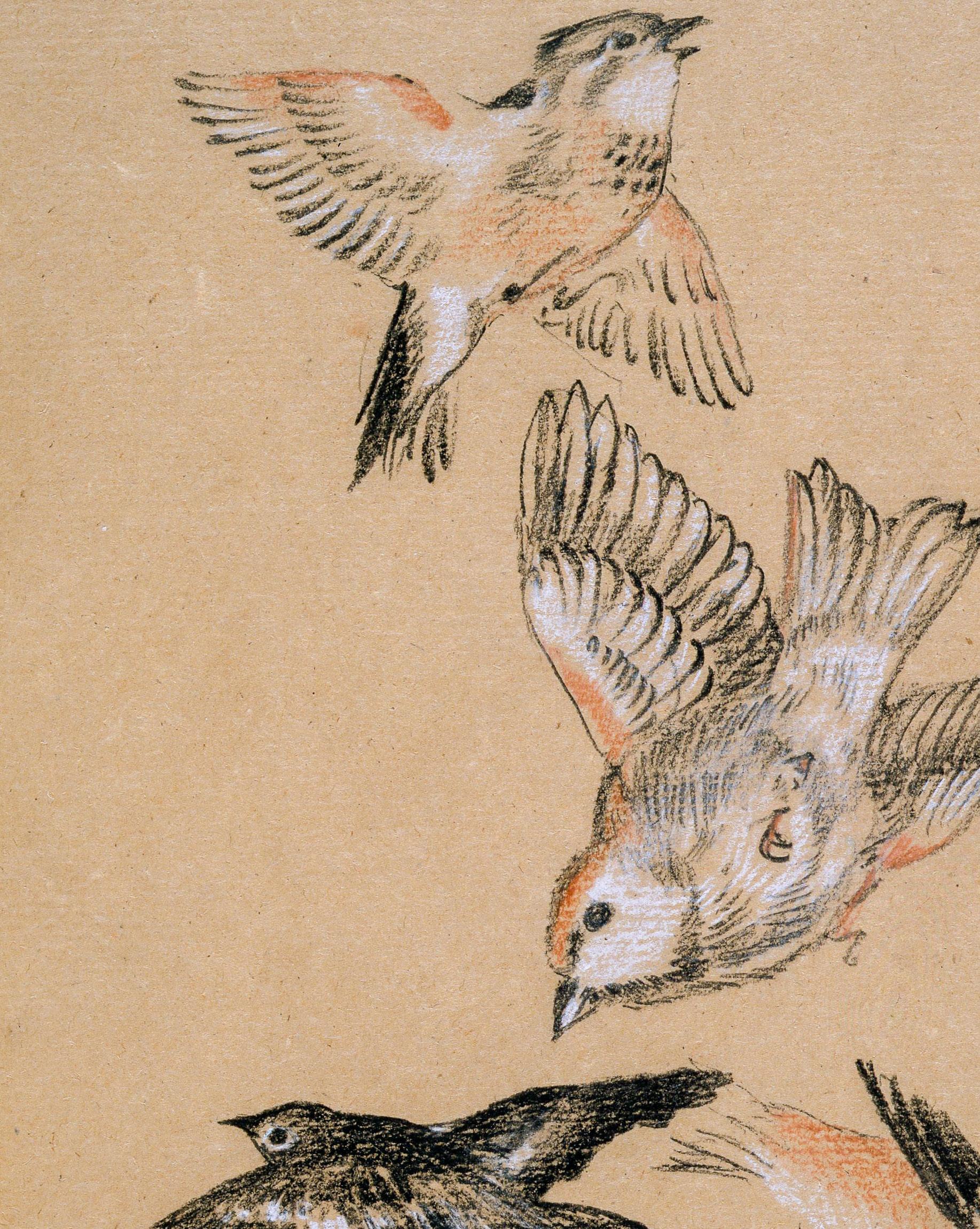 By Brandon Lee, Year 11, Noro
Edited by Ji-Min Lee
By Brandon Lee, Year 11, Noro
Edited by Ji-Min Lee
The largest contiguous land empire in history, the army which reached from the Korean peninsula to the walls of Vienna. The Mongolian empire had attacked and conquered a lot of countries and had killed around 40 million people in the process of incorporating the new land they had conquered. The Mongolians mostly brought negative impacts to its provinces, which for example, provinces that resisted to the empire got slaughtered and no man could live in that province. Also, the Mongol empire had conscripted a lot of men for its continued war on expanding its empire, and destroyed the province's culture, brainwashing the province by its nomadic culture. But the Mongolians also gave positive impacts in abolishing the custom of torturing and linking a trade line called the “Silk Road”, impacting the mix of cultures. But most of these benefits were impacted to the people who lived in the middle east, and China, and the Europeans kept being slaughtered due to the expansionism of the mongol empire. But what positive benefits did the Mongols affect European civilization?

The Mongols had brought a lot of benefits to the European continent even though there was a lot of despair happening in the region. The Mongols brought peace which was called the Pax Mongolia, which meant a century of peace (12801360) brought by the Mongolians among neighbouring countries under Mongol rule. This peace reopened the silk road between China-Middle East, and Europe, and increased cultural exchange and spread among other countries. Before the Pax Mongolia, it was hard to go by the silk road due to bandits and procedures to go through different countries, which was risky for merchants to trade, and also spent a lot of money to pass over countries. Due to that Pax Mongolia was a big part of the spread of various cultures, the religious identities were encouraged. Before Mongolian invasion, many countries had their own state religion, and if they didn’t believed the certain religion, they were executed or exiled, which meant the harsh and savage punishment beyond life. Religion was important in the old days. The leader of a religion, the “Caliph” or the “Pope” had enormous power, which they influenced a lot of countries in their military and economic parts, and also could replace a king, a leader of the country by impeaching the king that the king is no longer a group of a certain religion. The courtiers would not want an un-Catholic or Arabic king because the impeachment meant there is no official power left, and can also give justification for other countries invading the country. In Europe, the pope had their own province and could have their own army, and in the Arabs, the collective leadership of the government was divided to two, which was the “Sultan” covering up politics, and socially, and the “Caliphe” covering up economics, and religion also meaning that religion had great power. There was the “Crusades War”, a war between Catholicism and Islam, which led to death of many people, and the outbreak of disease. Like this, Religion was a various concept of chaos at 3rd vision, and was an important part in Mediaeval society. But due to the Mongols invading the middle east and Europe, this led to the incorporation of European and Islam provinces, which generally concluded to the end of the religious bedlam, which also led to the end of religious conflicts. This made the region stable under the Pax Mongolia, and trade became less risky under the empire, and as cross cultural interactions became more and more intensive and extensive, more and more goods were traded, leading to a productive boom.
Due to Pax Mongolia, citizens of the conquered province could believe in any religion. People could believe on Christianity, Buddhism, Taoism, Islam, or indigenous beliefs, as long as they didn’t interfere with the political ambitions of the leader of the Mongolian Empire, the Khan. The Pax Mongolia also allowed people like monks, traders and explorers to travel along travel routes due to that the silk road became safe. This led to various cultures and technologies to mix up, like papermaking from China, printing from Europe, and gunpowder from southern China, all mixed up through the Asian Silk road. For example, explorer Marco Polo, had travelled to China, to the court of Kublai Khan, ruler of Mongolia China in the east. Due to the silk road, they brought many religious and cultural ideas and domesticated animals, plants, flowers, and fruits as they joined the cross continental exchange, Pepper from India was transferred to Europe, and religion books arrived to the Middle East, which this shows that the Silk road was the melting pot, and was known as the lifeline of the Eurasian continent.


Also the Mongolian invasion of Europe brought Chrstian spread to the east, Before the Mongol empire, the Europeans and the Chinese were unaware of each other's existence, which Chinese people only knew that there are big, white people if they go west, and the Europeans had thought of the East as somewhere mysterious and fearful, due to the effect of the Rome invasion of the Huns. Also the region to trade was so faraway, unpredictable and dangerous which made less people going to trade, which made the interactions between the two not encouraged. Due to that Islamic merchants expanded their trade business allo over Africa to India, the Western and Chinese merchants became alarmed which they made an alliance against the Islam merchants. This led to Europeans entering China, leading to spread of Christianity, by making a European community in China, meaning spread of culture.
During the Pax Mongolia, the entire Silk Road overland route experienced a vigorous revival. The rulers actively worked to ensure the safety of trade routes by building effective post stations and rest stops, introducing paper money, and removing artificial trade barriers. In the 1330s, a single merchant in Genoa sold thousands of pounds of silk after Chinese raw silk appeared in the silk-producing area of Italy in 1257.


Throughout history, the Mongolians have absorbed scientific knowledge from Persia, India, China, and Arabia. Under Mongol rule, medicine flourished among many other areas of life and culture. In order to encourage the exchange and expansion of medical knowledge, hospitals and training centres were created to ensure the health of an army. China therefore employed doctors from India and the Middle East, all of which were communicated to European centres. An institution for the study of Western medicine was founded by Kublai Khan. The First known book on Chinese medicine outside China was published in 1313 by Persian historian Rashid alDin (1247-1318).
There is one final contribution the Mongols made to Europe that is hard to categorise. Gunpowder and gunpowder were two deadly Chinese inventions that the Mongols introduced to the West. As a result of the new weaponry, European fighting tactics underwent a revolution for centuries, and all the warring states of Europe strived to improve their firearms technology. In this constant, multi-sided arms race, knightly combat came to an end, and standing armies were born. Over the centuries that followed, European states used their new and improved guns first to combat piracy, then to seize control of portions of the ocean-going spice and silk trade, and finally to establish colonial rule in many parts of the globe.
Like this, the Mongol invasion of Europe had given a lot of benefits to not even Europe, but to the whole global society. Unfortunately, there were disadvantages of new arms in Europe leading to imperialism, but however things like medicine, religions, and peace occurred after the great slaughter the Genghis Khan had made, which even nowadays, we use the wisdom and the stories the time of peace, which was the Pax Mongolia, started by the end of the European invasion of Mongol.
How have humans come to rule the earth?
In the beginning, homo sapiens occupied the bottom of the food chain. While other organisms evolved larger lungs to run, thicker skin to live through the winter and horns or tusks to fight, the result of human evolution seems quite disappointing: it almost appears that mankind’s survival was up against serious odds. However, the human race not only survived; it dominated the planet, influencing every corner of the world. The secret to this phenomenon is hope.
Hope, as a dictionary defines it, is an emotional state of mind based on a specific outcome during a situation, usually a positive breakthrough when one is under extraneous conditions. The evolution of hope is yet to be discovered, but it is known to man that hope towards “one above all” was key to the domination of mankind on earth.
Hope is explicitly related to imagination, a trait of a human that can create concepts that do not exist or have not yet happened, visualising and embedding trust in these elements that are not confirmed to be true. Yuval Harari, the author of the book Sapiens, believes that the trait of imagination and hope developed earliest in the cognitive minds of humans, basing his assertions on an ancient artefact - the Lion Man. Along with Yuval Harari, scientists believe that the Lion Man hints towards discovering how humans, sapiens, have dominated the earth with a defenceless and offenceless body compared to other organisms.
[The Lion Man from the exhibition: Living with gods]
“He is the oldest known representation of a being, not exist in physical form but symbolises ideas about the supernatural.” - Jill Cook
This seemingly ordinary, 40,000 year old, made-of-mammoth-ivory structure stands 31 centimetres in height with a display of a man’s torso and limbs, but with a lion’s head. It stands

upright with its gaze upon its audience; its body, tense, and flowing with an unapproachable sense of vigour. His eyes and ears are open attentively; waiting, listening.
What was the purpose of this piece of ivory? An experiment, conducted by Wulf Hein using the prehistoric tools of the past, has shown that the Lion Man took 700 hours to fashion using a precise simulation of the process. On the surface it was a completely inefficient effort as prehistoric societies lived on a day to day survival: if they wasted any time fiddling with a piece of ivory and failed the hunt, the community starved that night. However, the location in which the Lion Man was found, the Stadel Cave, offered a possible reason.
The Lion Man was found lying between rock and bare soil along with traces of antlers and bones suggesting that the cave was used for occasional community meetings, but the accumulation of soil suggested a vestige of human activity. The statue itself was carefully positioned upright in the middle of the ‘circle of traces’ as if it was the crucifix of a church ; the star of David of a synagogue; or in other words, the ‘god’ of the people.
The Lion Man was the first existence of a supernatural being: an imaginary figure created by the unique ability of mankind. The little piece of ivory was a symbol of their god, more specifically a guardian who brings food and prosperity to the community. More importantly, it was a symbol of the desperate need
to believe and have faith during a time where mankind had nothing to rely on, a time where people craved something that told them that things will become better. Through the Lion Man, people invented ‘hope’ helping mankind prosper because hope was a communal belief. Rather than individually advantageous traits (think skin, horns) that were previously considered the most important components for survival, hope acted as a link between the people and more a psychological in-group of the people. When people formed a common belief about a shared god, they classified themselves into the in- group, or tribe, where they could justify their belonging. This allowed communities, instead of a kindred, to appear where people could become an ‘in-group member’ even though they did not share a direct family tree. Naturally, this type of community was larger in size than family based tribes, and held a majority position holding out-group bias against those who did not relate to their ‘hope’, encouraging more and more people to identify with them. From this point onwards it is a familiar story where humanity created settlements instead of nomadism, harvested instead of hunting, and created their own society’s norms and hierarchies.
However, scientists wanted to know if this element of ‘hope’, if induced artificially, could also affect the survival of other organisms without the ability to imagine, and if it would affect the individual or communal survival. Curt and his team studied this hypothesis using rats. He first submerged 12 domestic rats into a bucket of water without a way to escape. The first rat initially
swam around the surface, dove itself to the bottom, and died within 2 minutes. Two other domestic rats behaved similarly, they did not last longer than 3 minutes. However, the other 9 rats swam for 3 days without food until they ran out of stamina and drowned. Looking at the results of the domestic rats, Curt asserted that the wild rats would more eagerly fight for survival, as they were a species diverged away from the domestic rats; they were better swimmers with larger feet and denser fur. Surprisingly, none of the 34 wild rats that have been caught and put into the bucket lasted longer than a few minutes. Curt evaluated the results, he pointed out that ‘hope’ was the key factor in the willingness to struggle on.
“The situation of these rats scarcely seems one demanding fight or flight — it is rather one of hopelessness… the rats are in a situation against which they have no defence… they seem literally to ‘give up.’” -Curt
The scientists deduced that some of the domestic rats, contrary to the wild rats, have been saved by an external source of help: their owners. To experiment their theory the scientists decided to induce the concept of external help to the wild rats as well. Another set of wild rats were again dropped into the bucket of water. However this time, just before the rats gave up and sank to the surface, Curt scooped them up to let them dry and recover. After the researchers recorded the initial time of survival, they were plunged back into the bucket. This time, Curt found the rats swimming at
the surface, fighting for survival even after a day had passed. The only difference was the rats’ prior experience of being saved, and thus had hope to survive.
The research hypothesis is implicitly related to the theory of human survival: we were the domestic rats without muscles or waterproof fur to swim, but had hope in being saved. At the beginning, the ‘creation of hope’ was induced from an external source a human couldn’t explain: like nature. When rainfall came to save the humans from droughts, we imagined an almighty being behind the clouds. When daylight saved humans from darkness and fear of being preyed upon, we imagined the sun was a god that saved them from death. And just like the rats, humans believed in these supernatural beings and fought for days of survival, even in harsh demanding conditions. However, the difference between humans and rats is the presence of communication and language. In Curt’s extensional study, he put wild rats that have been saved once together with control wild rats (never saved). The first type again, survived for days while the control group drowned quickly. Humans were different. When an individual acquires hope for survival from an external source, they can communicate the concept to others primarily because humans could imagine the concept themselves without having to experience it first hand. A collectivist movement of the creation of hope, embedding itself throughout multiple minds of individuals led them to converge together to survive and prosper.
“ In this way the rats quickly learn that the situation is not actually hopeless; thereafter they again become aggressive, try to escape, and show no signs of giving up”
Curt Richter of a rat experiment, 1950
 By Joseph Fernandes, Year 13, Halla
Edited by Bella Kim
By Joseph Fernandes, Year 13, Halla
Edited by Bella Kim
On the 23rd of June 2018, a team of twelve boys aged from 11 to 16 from a local Thai junior football team, the Wild Boars, went missing after setting out to explore the famous Tham Luang Nang cave system between Thailand and Myanmar with their assistant coach, Ekkaphon Chanthawong. After entering the cave, a sudden downpour of heavy rain flooded the cave and stranded the whole team in the tunnel. At 7pm, the head coach, Nopparat Kanthawong received numerous phone calls from worried parents about why their children had not come home. Nopparat tried to call the assistant coach as well as the players of the team but with no success. However, he managed to reach 13 year old Songpon Kanthawong who was also part of the team but had been picked up straight after training. Songpon explained to the head coach about the rest of the team going into Tham Luang cave and Nopparat immediately raced to the caves, only to find abandoned bicycles and bags near the mouth of the cave as well as water starting to seep out of the cave mouth. He quickly alerted the local authorities and before long the trapped junior football team had made national headlines and would soon go on to make international headlines, with numerous large news agencies such as the BBC providing 24/7 updates on the team, providing the public with a glimmer of hope for rescuing the boys who were slowly running out of food and oxygen.
Vern Unsworth, a British diver, had a very intricate and detailed knowledge of the Tham Luang Nang cave system and immediately urged the government of Thailand to seek assistance from the British Cave Rescue Council (BCRC) after receiving a call about the trapped boys. Two days after the team had gone missing, Thai Navy SEAL divers arrived and started to scavenge the cave, with one of them reporting that the water was so murky that he couldn’t see where he was going, even with the lights on. After uninterrupted rainfall continued to flood the cave entrance, the search had to be regularly paused. After another two days, three BCRC cave divers arrived with specialist equipment and were followed by more teams of open water divers. On the 28th of June, Special Forces squadrons from the US Air Force joined them. By the following day, an Australian Federal Police team of Specialist Response Group divers arrived followed by a Chinese team of divers from the Beijing Peaceland Foundation. During all of this, Thai policemen used sniffer dogs to search the cave surface for openings as alternative entrances to the cave system.
The search had to be frequently paused due to the poor weather, as rainfall forced the divers to battle strong currents and worsened the already poor visibility. The boys and coach were found at approximately 10:00 pm on the 2nd of July, by British diver John Volanthen, huddled together on a narrow shelf of rock. The group were found about 4 kilometres deep inside the cave system and the boys were dazed and confused, asking the divers how long they had been trapped inside the cave. Immediately, the divers began helping to establish an air supply storage system to keep the boys alive as they tried to figure out a way of getting them out of the cave safely.

Upon being found, the boys were provided with easily digestible and high calorie foods with lots of minerals and vitamins and the divers recorded a video of the boys who were wrapped in emergency blankets, stating their names and ages. A doctor discovered that the boys had tried to use rocks to dig a hole in a desperate attempt to escape and had managed to dig a hole 5 metres deep. It was believed that many of the boys could not swim which further complicated the problem of safely rescuing them. British diver Jason Mallinso provided the group with a wetnotes pad so that they could send a message to the outside world, reassuring their parents and the world that they were safe and had hope of escaping the cave.

The challenge of rescuing the team from the cave turned out to be extremely difficult and they faced several setbacks and obstacles. For starters, the boys were not only stranded 4 kilometres deep in the cave, but the route to safety also had several flooded areas with strong currents and absolutely pitch darkness. Some areas were also extremely narrow with some measuring only 38 by 72 centimetres. Even for experienced divers, it took 5-6 hours to make the journey from the cave mouth to where the boys were trapped. Possibly the biggest challenge they faced however was the constant rising water levels due to rainfall during the monsoon season. In an effort to battle the rising water levels, a stone dam was built upstream and systems were built to pump water out of the cave and divert rainfall away from it. By early July, these efforts had managed to reduce the water level by 1.5cm per hour, allowing the rescue team to walk a further 1.5km into the cave. However, by this time there were fears that the boys would develop hypoxia due to a steadily decreasing oxygen level. On the 8th of July, the oxygen level was measured to be 15%, dangerously lower than the level needed to maintain normal health in humans which is between 19.5% and 23.5%. An attempt was made to install an air supply line for the boys but the idea was impractical and failed, meaning that it was a race against time to rescue the trapped boys.
Due to the challenges and setbacks, it was soon decided that the rescue team needed to use experienced divers to go in and bring out the team before they starved or ran out of oxygen. On the 5th of July disaster struck as Saman Kunan, a former Thai Navy SEAL, lost consciousness while diving underwater in the cave. His dive buddy attempted to perform CPR on him but to no avail and he was pronounced dead the next day. At this point people were realising the gravity of the situation and how increasingly unlikely it was becoming to rescue the boys. However, nobody had given up quite yet and everyone involved in the rescue team was still working to create a miracle and rescue the boys.
On the 8th of July all media were cleared from the cave entrance as they prepared a rescue operation. Monsoon rains were expected to hit heavily for the next week and threatened to flood the cave for at least 2 months, meaning that this was the last chance to pull off a miracle rescue. 18 rescue divers were sent into the cave to retrieve the boys one by one with one diver for each boy. The boys at this point were unaware that their situation had gained global attention and that they were on news channels all over the globe 24/7. The lead divers had to swim submerged for over 1 kilometre with occasional medical check-ups and air tank resupplies at various points in the journey. The divers had to carry each boy out one at a time by putting them under anaesthetic, attaching an oxygen mask and carrying them underwater through the cave system. Many areas of the cave were still partially submerged and rescuers were forced to transport the boys over slippery rocks and through muddy water for several hours. At around 7pm, local officials claimed that two boys had been successfully rescued and taken to Chiangrai Prachanukroh Hospital. This was followed by two more boys exiting the cave shortly after. On the 9th of July, four more boys were rescued from the cave and on the following day, the last four boys and their coach were successfully rescued from the cave system. The boys had lost an average of 2 kilograms each inside the cave. After being rescued they were only able to eat rice porridge and had to be hospitalised for at least a week in case anyone had contracted any diseases inside the cave. However, the boys ultimately, and most importantly, were now safe and alive after being trapped in the cave for over two weeks.

The boys’ story was a large inspiration all over the world, with numerous books, movies, tv shows and even a song produced to tell their story. They were even invited by the president of FIFA to watch the World Cup final. They showed the world how, even in the darkest of times and the most grim situations, it is important to always have hope and keep a glimmer of ambition. In these situations, nothing is impossible if everyone has the hope and the motivation to reach their goals. Without hope, nothing could ever be achieved and there would be no motivation to ever accomplish anything, which is why hope is such an important and fundamental emotion to feel for anyone who wants to accomplish anything in life.

Writers & Editors
Cindy Ryu
Albert Choi
Alex Yang
Ally Lee
Andy Kim
Ashley Jung
Ashely Koo
Bella Kim
Brandon Lee
Cathy Kim
Cathy Kim
Chloe Lee
Chloe Park
Dan Huh
Daniel Kim
Daniel Lee
Edward Kwon
Emily Lim
Hailey Kim
Hanna Wang
Huey Jang
Hyeonah Joh
Hyunseo Kim
Ian Yoon
Injoon So
Inseo Youn
Jackie Lee
Jaeyoung Chung
Jean Kim
Ji-Min Lee
Jiham Lee
Joo Hyun Kim
Joseph Fernandes
June Kim
Leo Li
Lucas Shin
Michelle Park
Minju Kang
Naeun Kim
Ryan Lee
Sean Kim
Serena Hong
Sharon Jung
Sophie Lee
Stephanie Lim
Taehee Kim
Theresa Lee
Victoria Park
Warrick Kwon
William Kim
Yeonjae Shin
Yoonkyo Kang
Ziu Choi Teachers
Mr. Bate
Mr. Maher
Mr. Mckeogh
Mr. Mclaughlin
Ms. Bostock
Designers
Luna Park
James Jeong
Esther Lee
Emily Kim
Eunsuh Kim